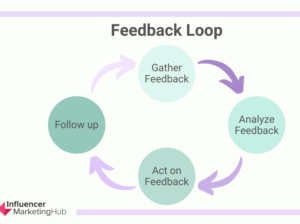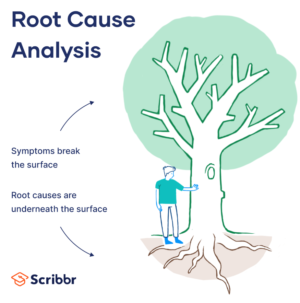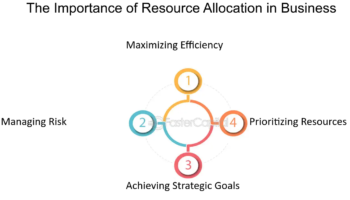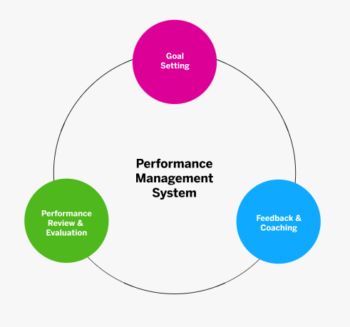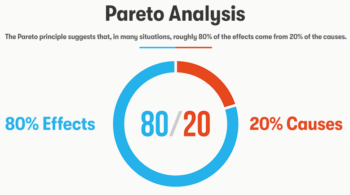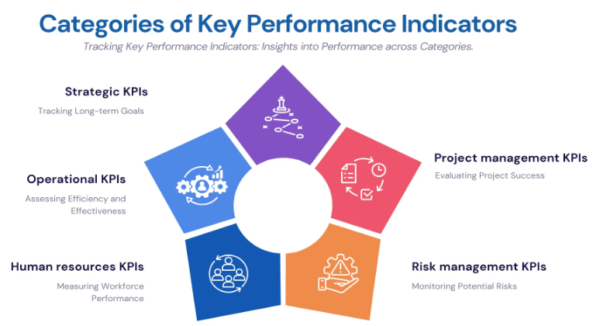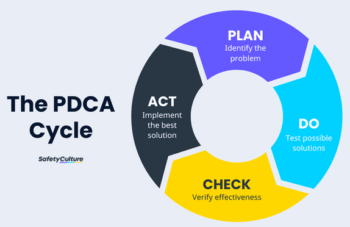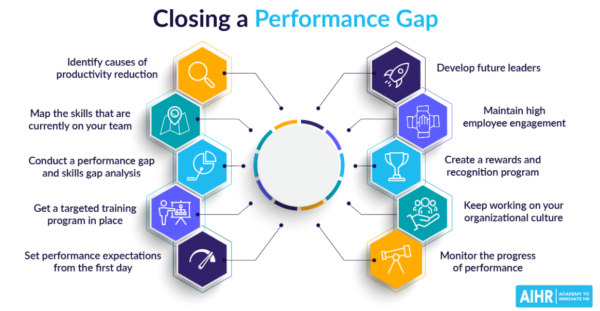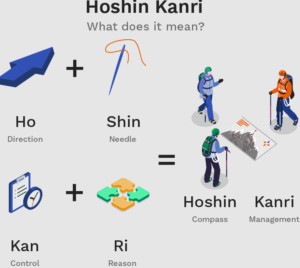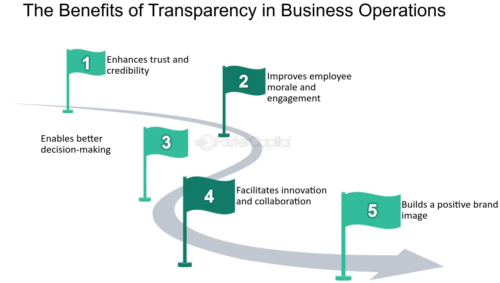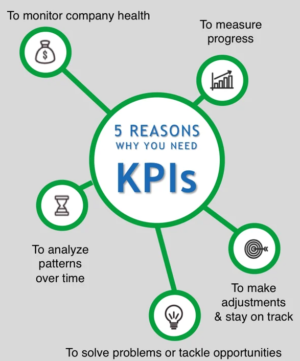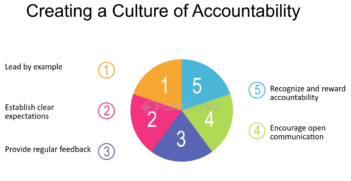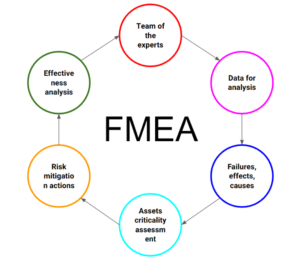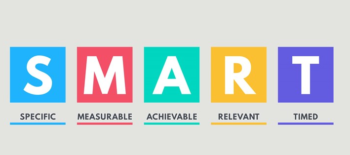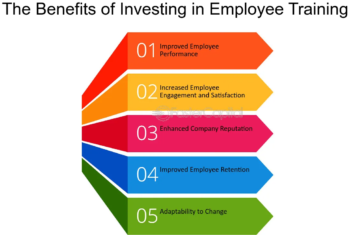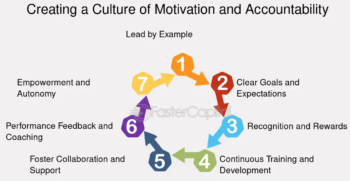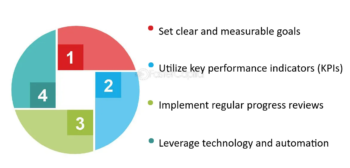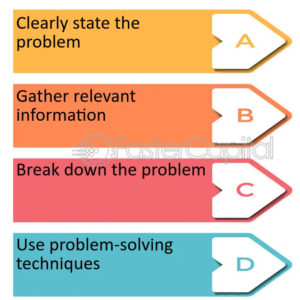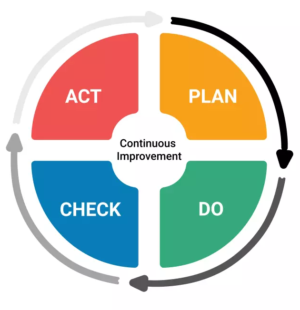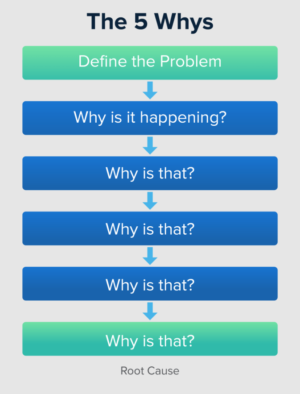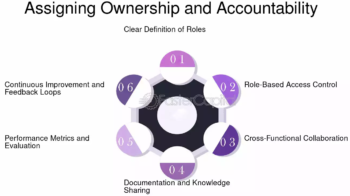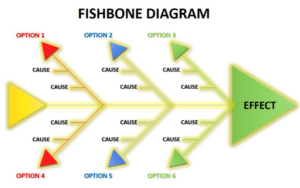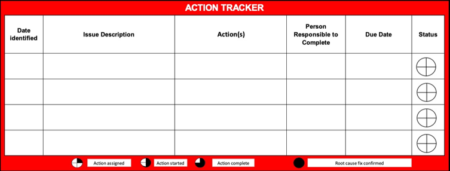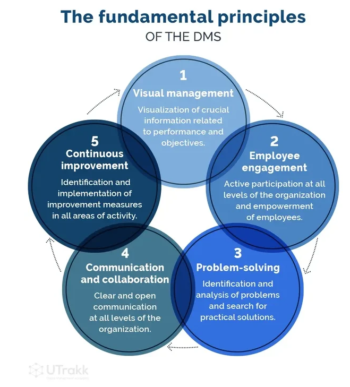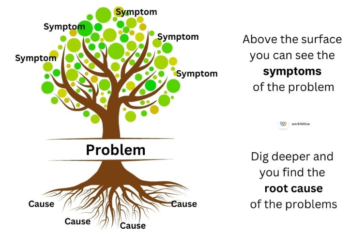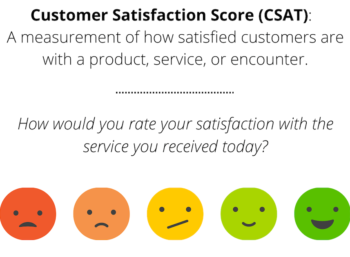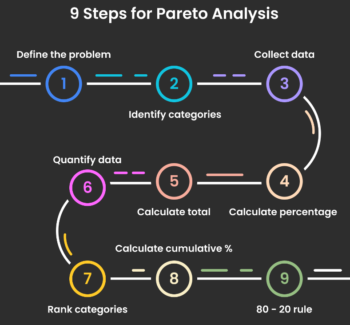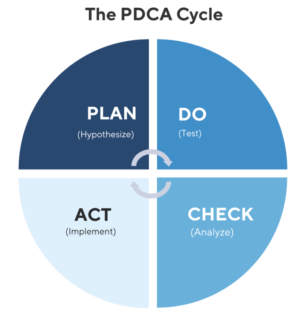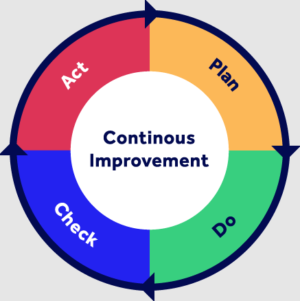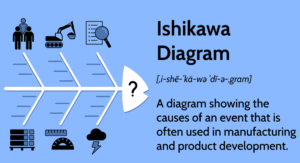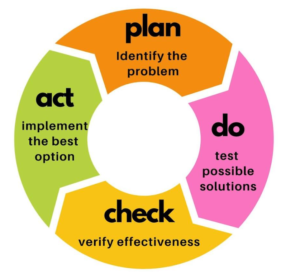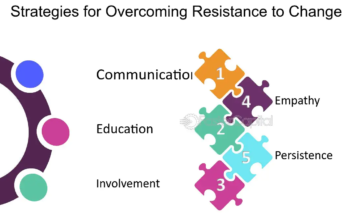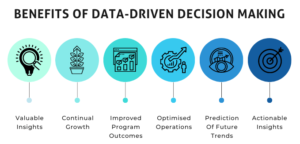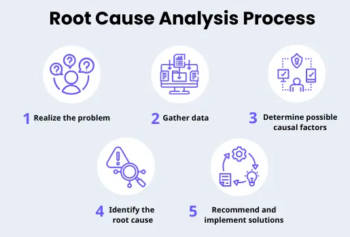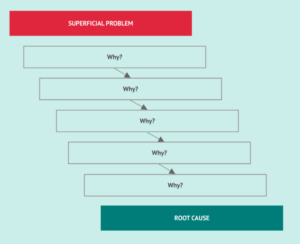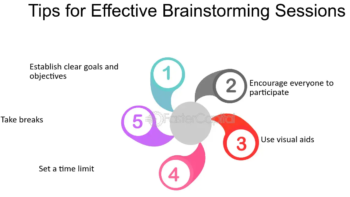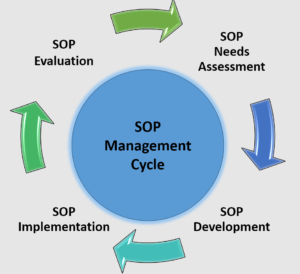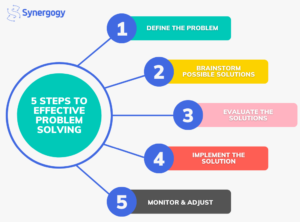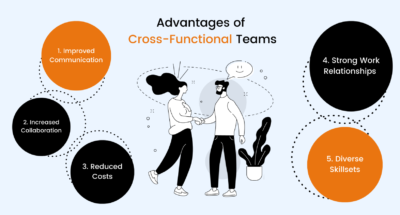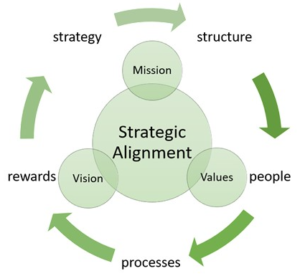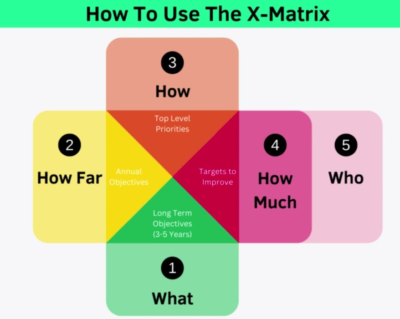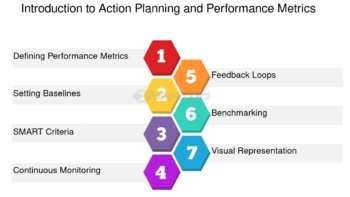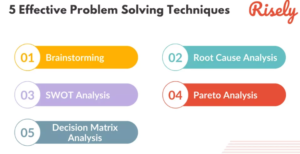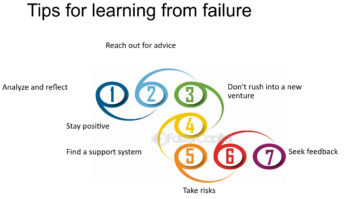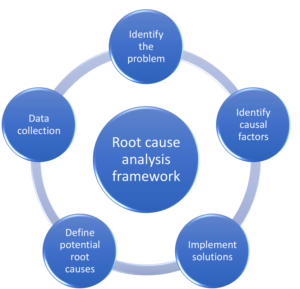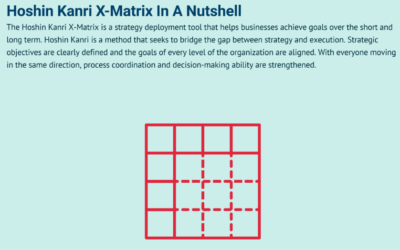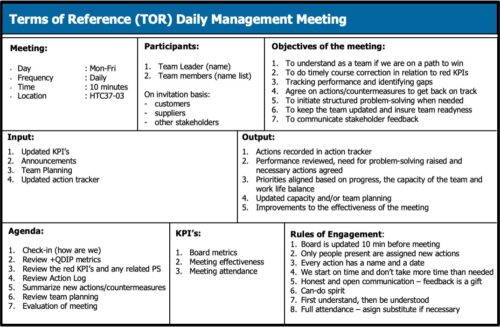Business Performance Integrity- Workshop 1 (Current State)
The Appleton Greene Corporate Training Program (CTP) for Business Performance Integrity is provided by Mr. Danielsen Certified Learning Provider (CLP). Program Specifications: Monthly cost USD$2,500.00; Monthly Workshops 6 hours; Monthly Support 4 hours; Program Duration 12 months; Program orders subject to ongoing availability.
If you would like to view the Client Information Hub (CIH) for this program, please Click Here
Learning Provider Profile
Mr. Danielsen is an accomplished professional with 30+ years of experience in various industries, including five years in civil works and 25 years in management consultancies, both external and internal.
He holds an Executive MBA from the Technical University of Copenhagen (DTU) and a B.Sc. in Civil and Structural Engineering from the Engineering College of Copenhagen.
After ending his 5-y chapter as a corporate QEHS Director in a Danish highway and railway construction company, Mr. Danielsen engaged in delivering management consultancy services within EHS and Lean Enterprise across several industrial sectors for the following nine years.
He wanted to get closer to one company. He spent the next eight years as a business transformation leader in a Danish Danaher medical device company (Radiometer Medical) before moving to Amsterdam and joining the Philips’ Group Business Transformation organization, heading and deploying the Continuous Improvement and Performance Management practices globally.
Mr. Danielsen recently concluded his career within large corporations and started his freelance consultancy, LeanDK.
Mr. Danielsen has industry experience within the following sectors: Consulting Services, Medical Devices, Pharmaceuticals, Construction, Industrial Products, and Energy.
Although his focus locations are now the Scandinavian capitals and Amsterdam, Mr. Danielsen has delivered consultancy services in the US, Latin America, Japan, China, Singapore, Saudi Arabia, Finland, Sweden, Germany, Switzerland, Poland, and Latvia since 1999. He traveled throughout India, Indonesia, Thailand, and Africa in the eighties and nineties.
His achievements include facilitating/driving the Strategy Deployment process for eight years, which resulted in a yearly 50% reduction of the external quality footprint and significantly contributed to the company’s growth of 8% YoY—double the speed of the market (Radiometer Medical, part of Danaher).
Global top-down and bottom-up capability building within continuous improvement and performance management resulted in a significant step up in the predictability of short- and long-term outcomes. The company share price grew from EUR 21 to EU 51 during his 6-year tenure (Royal Philips).
The service skills of Mr. Danielsen lie mainly within Operational Excellence and Business Transformation, comprising capability building in strategy deployment, mission control (by daily management and problem-solving), and servant leadership.
To request further information about Mr. Danielsen through Appleton Greene, please Click Here.
MOST Analysis
Mission Statement
Core to the Planning and Execution System of any organization are three fundamental processes: Daily Management, Problem Solving, and Strategy Deployment. They form the foundation for all other improvement tools and apply to every business function and facet of your organization. The three processes function together as a system that can leverage Business Performance Integrity. Strategy Deployment is transforming Strategy into sustainable processes that will deliver breakthrough results. Daily Management is applied as a disciplined routine method to ensure, at a regular cadence, that our processes are meeting our customers’ needs (internal or external customers). If we use trains as an analogy for processes, you can think of Daily Management as the way we keep the trains running on time and Strategy Deployment as the way we invent new and breakthrough means of railway transportation. Finally, problem-solving is the thought process used to define problems, investigate and drive to root cause, verify and implement countermeasures, and ensure sustainment. In part one, we will get to a common high-level understanding of the three fundamental processes, sufficient to do a self-diagnosis and understand the baseline and the opportunity it poses to strengthen these crucial elements of the Planning and Execution System, thus creating further appetite for the 12-month capability building journey and the value it will bring to you and your company. Coming out of Module 1, you will have a concrete plan to confirm the current state during Month 1 and prepare for Part 2 by further mapping elements of the Daily Management processes in your area of responsibility.
Objectives
01. Priming Minds: departmental SWOT analysis; strategy research & development. Time Allocated: 1 Month
02. Performance Management: departmental SWOT analysis; strategy research & development. Time Allocated: 1 Month
03. 3-Tool System: departmental SWOT analysis; strategy research & development. Time Allocated: 1 Month
04. Daily Management: departmental SWOT analysis; strategy research & development. Time Allocated: 1 Month
05. Tiered Accountability: departmental SWOT analysis; strategy research & development. Time Allocated: 1 Month
06. DM Maturity: departmental SWOT analysis; strategy research & development. Time Allocated: 1 Month
07. Problem-Solving Challenges: departmental SWOT analysis; strategy research & development. 1 Month
08. Structured Problem-Solving: departmental SWOT analysis; strategy research & development. Time Allocated: 1 Month
09. Problem-Solving Maturity: departmental SWOT analysis; strategy research & development. Time Allocated: 1 Month
10. Strategy Deployment: departmental SWOT analysis; strategy research & development. Time Allocated: 1 Month
11. Strategy Deployment Maturity: departmental SWOT analysis; strategy research & development. Time Allocated: 1 Month
12. Consolidate Current State: departmental SWOT analysis; strategy research & development. Time Allocated: 1 Month
Strategies
01. Priming Minds: Each individual department head to undertake departmental SWOT analysis; strategy research & development.
02. Performance Management: Each individual department head to undertake departmental SWOT analysis; strategy research & development.
03. 3-Tool System: Each individual department head to undertake departmental SWOT analysis; strategy research & development.
04. Daily Management: Each individual department head to undertake departmental SWOT analysis; strategy research & development.
05. Tiered Accountability: Each individual department head to undertake departmental SWOT analysis; strategy research & development.
06. DM Maturity: Each individual department head to undertake departmental SWOT analysis; strategy research & development.
07. Problem-Solving Challenges: Each individual department head to undertake departmental SWOT analysis; strategy research & development.
08. Structured Problem-Solving: Each individual department head to undertake departmental SWOT analysis; strategy research & development.
09. Problem-Solving Maturity: Each individual department head to undertake departmental SWOT analysis; strategy research & development.
10. Strategy Deployment: Each individual department head to undertake departmental SWOT analysis; strategy research & development.
11. Strategy Deployment Maturity: Each individual department head to undertake departmental SWOT analysis; strategy research & development.
12. Consolidate Current State: Each individual department head to undertake departmental SWOT analysis; strategy research & development.
Tasks
01. Create a task on your calendar, to be completed within the next month, to analyse Priming Minds.
02. Create a task on your calendar, to be completed within the next month, to analyse Performance Management.
03. Create a task on your calendar, to be completed within the next month, to analyse 3-Tool System.
04. Create a task on your calendar, to be completed within the next month, to analyse Daily Management.
05. Create a task on your calendar, to be completed within the next month, to analyse Tiered Accountability.
06. Create a task on your calendar, to be completed within the next month, to analyse DM Maturity.
07. Create a task on your calendar, to be completed within the next month, to analyse Problem-Solving Challenges.
08. Create a task on your calendar, to be completed within the next month, to analyse Structured Problem-Solving.
09. Create a task on your calendar, to be completed within the next month, to analyse Problem-Solving Maturity.
10. Create a task on your calendar, to be completed within the next month, to analyse Strategy Deployment.
11. Create a task on your calendar, to be completed within the next month, to analyse Strategy Deployment Maturity.
12. Create a task on your calendar, to be completed within the next month, to analyse Consolidate Current State.
Introduction
Business Performance Integrity (BPI) is crucial in aligning an organization’s daily operations with its strategic goals, ensuring that every aspect of the business functions at its highest integrity to deliver on promises and close performance gaps. BPI revolves around three core processes: Daily Management, Problem Solving, and Strategy Deployment. These processes collectively form the backbone of effective planning and execution systems, ensuring that every business function adheres to the highest standards of performance and integrity.
The concept of “Current State” in Business Performance Integrity (BPI) focuses on evaluating the present condition of an organization’s key processes that directly impact its ability to deliver on its promises and close performance gaps in a timely manner. This assessment looks at the existing state of daily management, problem solving, and strategy deployment — the core components of BPI — to gauge how well the organization is currently performing against its strategic objectives.
The Current State acts as a crucial baseline from which an organization can measure its performance integrity, identifying areas where processes are strong and where they may falter. This evaluation is vital for pinpointing specific weaknesses in the system and opportunities for significant improvement, thereby enhancing the organization’s overall ability to achieve and maintain high performance with integrity.
By understanding the Current State, organizations can effectively plan for the implementation of targeted improvements in their daily management routines, develop more robust problem-solving mechanisms, and refine their strategy deployment practices. This comprehensive approach ensures that every element of the organization is aligned and contributing optimally towards closing performance gaps, ensuring transparency, and facilitating timely course corrections, which are essential for maintaining the integrity of business performance.

Daily Management
Daily Management is the disciplined routine of ensuring that operations consistently meet both internal and external customer needs with reliability and regularity. By treating operational processes with the same rigor and precision as ensuring trains run on time, Daily Management maintains a pulse on the operational health of the organization. It involves the meticulous tracking of performance metrics, the swift addressing of any deviations from set standards, and the proactive management of resources to prevent operational delays or quality issues.
Key components of Daily Management include:
• Routine Monitoring: Regular checks and balances ensure that all operations adhere to set schedules and quality benchmarks.
• Performance Analysis: Continuous analysis of operational data to identify trends, predict potential disruptions, and devise preventive strategies.
• Feedback Loops: Establishing effective communication channels for real-time feedback from stakeholders to facilitate quick adjustments.
1. Routine Monitoring
Routine Monitoring involves continuous oversight of operations to ensure that they consistently adhere to set schedules, quality benchmarks, and performance standards. This includes the use of both manual checks and automated systems to track operational outputs. Sensors, software, and other technological tools often collect data that supervisors and managers review regularly to ensure operations flow smoothly.
Elements of Routine Monitoring include:
• Scheduled Inspections: Regularly scheduled checks to assess the functionality and performance of machinery and equipment.
• Real-Time Data Tracking: Utilization of advanced software solutions that monitor operations continuously, alerting management to any deviations in real-time.
• Quality Control Checks: Systematic checks to ensure that product quality meets or exceeds the standards required by the company and expected by customers.
2. Performance Analysis
Performance Analysis goes beyond merely collecting data; it involves deep analysis to understand operational trends, anticipate potential disruptions, and tailor preventive strategies that address these risks before they impact performance. This analytical approach uses historical data to forecast future performance and adapt operations to changing conditions.
Key activities in Performance Analysis include:
• Trend Identification: Using statistical tools to identify trends that could indicate potential problems or opportunities for efficiency improvements.
• Predictive Analytics: Applying predictive models to forecast changes in operational needs, such as spikes in demand or equipment maintenance requirements.
• Benchmarking: Comparing current performance metrics against industry standards or past performance to identify areas for improvement.
3. Feedback Loops
Feedback Loops are vital in Daily Management as they facilitate the continuous flow of information between stakeholders, including front-line employees, management, and external partners. These loops ensure that feedback is not only gathered but also acted upon in a timely manner, allowing the organization to remain agile and responsive to both challenges and opportunities.
Components of Effective Feedback Loops include:
• Employee Feedback Systems: Mechanisms through which employees can report issues, suggest improvements, or provide insights into operational hurdles without fear of reprisal.
• Customer Feedback Channels: Direct lines of communication with customers, such as surveys, customer service interactions, and online platforms, to collect and analyze customer satisfaction and concerns.
• Review Meetings: Regularly scheduled meetings where teams review feedback and performance data to discuss what is working and what needs adjustment.

Problem Solving
Problem Solving is the methodical process used to identify, dissect, and resolve issues that hinder organizational performance. It encompasses defining the problem, investigating its root causes, developing potential solutions, implementing the most effective solution, and monitoring the outcomes to ensure long-term success. This systematic approach is crucial for eliminating inefficiencies and enhancing the organization’s capacity to deliver on its promises.
Effective Problem Solving involves:
• Root Cause Analysis: Diving deep into problems to understand underlying causes rather than just addressing superficial symptoms.
• Solution Development: Crafting innovative solutions that not only resolve current issues but also fortify against future challenges.
• Impact Assessment: Evaluating the effectiveness of implemented solutions to ensure they deliver tangible improvements.
1. Root Cause Analysis
Root Cause Analysis (RCA) is the foundational step in the problem-solving process, aimed at identifying the underlying causes of problems rather than merely addressing their symptoms. This thorough analysis prevents the recurrence of issues by ensuring that solutions address the actual source of problems.
Steps involved in Root Cause Analysis include:
• Data Collection: Gathering all relevant information about the problem, including when and where it occurs, the conditions under which it happens, and the characteristics of its manifestations.
• Problem Mapping: Using tools such as fishbone diagrams, flowcharts, or Pareto charts to visualize the problem and its contributing factors, making it easier to identify potential root causes.
• Hypothesis Testing: Formulating hypotheses on possible root causes and testing them through experiments, further data analysis, or simulation models to validate or discard these hypotheses.
2. Solution Development
Once the root causes are identified, the next step is to develop solutions that are not only corrective but also preventive. Solution Development in BPI requires creativity and innovation, often involving cross-functional teams to brainstorm, prototype, and test various solutions that address the root causes effectively.
Key aspects of Solution Development include:
• Brainstorming Sessions: Bringing together diverse teams to generate a wide range of ideas and perspectives on potential solutions.
• Prototyping: Creating quick, preliminary versions of solutions to explore how they address the problem in a real-world scenario.
• Feasibility Analysis: Assessing the practicality, cost, benefits, and potential impact of each solution to determine which is the most effective and sustainable.
3. Impact Assessment
After implementing the chosen solution, Impact Assessment is crucial to verify that the solution effectively resolves the problem without introducing new issues. This step ensures the long-term success and sustainability of the solution implemented.
Components of Impact Assessment include:
• Performance Monitoring: Continuously tracking key indicators that are affected by the solution to gauge its effectiveness.
• Feedback Collection: Gathering input from stakeholders affected by the change to get firsthand feedback on the solution’s impact and any unintended consequences.
• Continuous Improvement: Using the data and feedback collected to refine the solution, addressing any gaps or additional challenges that were identified post-implementation.
Strategy Deployment
Strategy Deployment is about transforming high-level strategic objectives into actionable and sustainable processes that yield breakthrough results. It’s akin to developing new forms of transportation in our train analogy—innovating beyond the current methods to set new standards in efficiency and effectiveness. This process ensures that strategic initiatives are properly communicated, understood, and executed across the organization, aligning daily operations with long-term goals.
Crucial aspects of Strategy Deployment include:
• Strategic Alignment: Ensuring that all levels of the organization understand and are committed to the strategic goals.
• Resource Allocation: Efficiently distributing resources to support strategic initiatives and maximize their impact.
• Performance Monitoring: Regularly reviewing the progress of strategic initiatives to adjust tactics and strategies as needed.
1. Strategic Alignment
Strategic Alignment is foundational to ensuring that every individual in the organization is not only aware of the strategic goals but also fully committed to them. This alignment bridges the gap between the strategic intent of the leadership and the operational actions of the workforce.
Key elements of Strategic Alignment include:
• Communication: Effective and continuous communication strategies to ensure that every member of the organization understands the strategic goals in terms of their own roles and responsibilities.
• Engagement: Involving employees at all levels in the strategy formulation process to foster ownership and commitment.
• Training and Development: Providing training programs to equip employees with the skills and knowledge required to contribute effectively to strategic goals.
2. Resource Allocation
Resource Allocation in Strategy Deployment focuses on optimizing the distribution of both tangible and intangible assets to support the implementation of strategic initiatives. Effective resource allocation ensures that these initiatives have the necessary inputs to succeed, maximizing their impact on the organization.
Aspects of Resource Allocation include:
• Budgeting: Allocating financial resources in alignment with strategic priorities to ensure funding is available where it is most needed.
• Human Resources: Assigning personnel based on their skills and the strategic importance of different projects, ensuring that key initiatives have the talent required to succeed.
• Technology and Infrastructure: Investing in technology and infrastructure that support the strategic objectives, such as new IT systems, machinery, or facility upgrades.
3. Performance Monitoring
Performance Monitoring involves the regular review and analysis of how well strategic initiatives are performing against expected outcomes. This ongoing evaluation is critical to ensuring that the organization remains on track to achieve its strategic goals and can make timely adjustments as needed.
Components of Performance Monitoring include:
• Key Performance Indicators (KPIs): Establishing and tracking KPIs that directly reflect the success of strategic initiatives.
• Regular Reporting: Implementing a regular reporting system that provides updates on the progress of strategic initiatives to stakeholders at all levels.
• Review and Adjustment: Conducting periodic strategic reviews to assess the effectiveness of the strategy deployment process and making necessary adjustments to tactics or strategies based on performance data and changing circumstances.

Case Study: Toyota Production System (TPS)
Toyota, the world-renowned automaker, developed the Toyota Production System (TPS), an integrated socio-technical system which became the benchmark for lean manufacturing around the world. TPS is based on the concepts of “Just-In-Time” production and “Jidoka.” Toyota implemented TPS to not only ensure efficiency and quality in manufacturing but also to embody the company’s philosophy of continuous improvement (Kaizen) and respect for people.
Strategic Alignment: TPS was directly aligned with Toyota’s strategic goal of becoming the leader in the automotive industry by producing high-quality vehicles efficiently at a reduced cost and with shorter lead times. The system was designed to reduce waste and inefficiency, enhance the quality of the output, and ensure worker satisfaction.
• Key Techniques: TPS uses “kanban” (visual signaling) to achieve just-in-time production and autonomation (Jidoka) to empower workers to stop the production line whenever a problem is detected, ensuring quality control at every step of the manufacturing process.
Resource Allocation: Toyota strategically allocated resources to ensure the successful implementation of TPS. This included investments in training programs for employees to understand and implement lean principles effectively, and capital investments in technology that supported just-in-time and autonomation processes.
• Employee Empowerment: Workers were trained not only on their specific tasks but also on problem-solving and continuous improvement methodologies, making them integral to the operational success.
Performance Monitoring: The performance of TPS was closely monitored using a variety of metrics that reflected efficiency, quality, and worker engagement. This monitoring helped Toyota to make informed decisions about further improvements and innovations in their processes.
• Feedback Loops: Regular audits and employee feedback sessions were institutionalized to identify areas of improvement and to ensure that the changes made were effective.
Results: The implementation of TPS led to a dramatic transformation in Toyota’s operations, significantly reducing waste and operational costs while improving product quality and production speed. The success of TPS helped Toyota achieve its strategic objectives, earning it international acclaim as a model for manufacturing excellence and corporate integrity.
• Global Standard: The principles of TPS have been adopted worldwide as a gold standard for manufacturing operations, influencing industries beyond automotive.
Toyota’s Production System serves as a profound example of how comprehensive strategy deployment can enhance operational efficiency and integrity. TPS not only supports Toyota’s commitment to quality and efficiency but also demonstrates the importance of aligning every operational aspect with strategic business objectives to achieve sustainable success.

Case Study: General Electric’s Six Sigma Implementation
General Electric, one of the largest conglomerates in the world, adopted Six Sigma in the mid-1990s under the leadership of then-CEO Jack Welch. Six Sigma is a data-driven methodology aimed at improving business processes by reducing the probability of error. GE’s strategic goal was to use Six Sigma to enhance quality across its various business units, ranging from energy and healthcare to financial services and aviation.
Strategic Alignment: GE’s adoption of Six Sigma was a strategic move to embed quality improvement and efficiency into every aspect of its operations. This alignment was aimed at reducing defects, lowering costs, increasing customer satisfaction, and driving revenues.
• Key Techniques: Six Sigma’s DMAIC process (Define, Measure, Analyze, Improve, Control) was integrated into GE’s operations, targeting process improvements and quality assurance in every business unit.
Resource Allocation: GE invested over a billion dollars in the implementation of Six Sigma, training over 80,000 employees as Six Sigma Green Belts and Black Belts. This strategic investment in employee training was critical to empower employees at all levels to identify, analyze, and solve quality issues effectively.
• Technology and Infrastructure: Alongside training, GE invested in the necessary technologies and infrastructure to support data analysis and process redesign, essential for the effective application of Six Sigma methodologies.
Performance Monitoring: The performance of Six Sigma initiatives at GE was rigorously monitored through a well-established system of metrics, including defect rates, process efficiency, and customer satisfaction indices. Regular audits and progress reviews helped maintain focus and drive continuous improvement.
• Feedback Loops: GE established strong feedback mechanisms to ensure that insights gained from Six Sigma projects were shared across the organization, fostering a culture of continuous improvement.
Results: GE’s Six Sigma initiative was highly successful, reportedly saving the company upwards of $10 billion during the first five years of its implementation. It significantly improved the quality and efficiency of GE’s processes and products, leading to increased customer satisfaction and a stronger competitive position in the market.
• Cultural Shift: Beyond financial gains, the implementation of Six Sigma led to a major cultural shift within GE, where quality and efficiency became key aspects of the organizational ethos.
General Electric’s Six Sigma initiative is a compelling example of how a well-deployed strategy can transform an organization’s operational efficiency and product quality. This case study illustrates the importance of aligning strategic objectives with rigorous methodologies like Six Sigma and investing in the necessary resources and tools to ensure these strategies are successfully implemented. GE’s example demonstrates how strategic initiatives can drive significant improvements in business performance, reflecting core principles of Business Performance Integrity.
Executive Summary
Chapter 1: Priming Minds
In this initial phase of the Business Performance Integrity (BPI) program, we begin by setting the stage for the journey ahead. The goal is to establish a common understanding of the program’s objectives, as well as to introduce the key enablers that will help participants consistently deliver on their promises—meeting goals, closing performance gaps, and achieving on-time delivery.
We kick off by reviewing the objectives of Workplace Development Program 1 and outlining the steps that will guide the participants through the day. The emphasis is on the importance of developing a solid foundation for the BPI program, ensuring that everyone understands how the three core processes—Daily Management (DM), Problem Solving (PS), and Strategy Deployment (SD)—will be integrated to create a system that supports operational success. These processes are crucial for planning, executing, and sustaining improvements that close performance gaps and keep the organization aligned with strategic objectives.
The program aims to address common challenges in delivering business performance reliably. By focusing on three key enablers—solid planning, transparency, and problem-solving—we will equip participants with the tools needed to meet their goals more often and in full. Each enabler plays a specific role in ensuring performance integrity across all functions.
Understanding the Enablers of Business Performance Integrity
The first key enabler is solid planning, which lays the foundation for consistent and predictable business outcomes. Solid planning ensures that each team and individual has a clear action plan, with connected metrics and clearly defined accountability. The focus is not just on planning for the present but also on aligning future actions with long-term strategic objectives. Effective planning requires forward-thinking, resource allocation, and risk management to anticipate challenges and prevent delays or gaps in performance.
The second enabler is transparency, which fosters visibility into the status of ongoing efforts. Transparency allows everyone in the organization to know whether they are on track or falling behind. Solid Daily Management practices ensure that key performance indicators (KPIs) are tracked consistently and updated in real time. This openness allows for proactive decision-making, enabling timely adjustments and keeping the organization agile in responding to performance deviations.
Finally, the third enabler is timely course correction, which is made possible through structured and fit-for-purpose problem-solving techniques. Having a common approach to solving problems enables teams to quickly identify root causes and apply solutions that are both effective and sustainable. The goal is not just to patch issues but to resolve them fully, ensuring they do not recur, and that the organization can continue to operate efficiently and meet its objectives.
In summary, Chapter 1 is about laying a solid foundation for Business Performance Integrity by aligning participants with the program’s goals and emphasizing the critical importance of planning, transparency, and problem-solving in ensuring they can deliver on their promises more consistently.

Chapter 2: Performance Management
Performance management is a multi-dimensional concept that serves as a critical mechanism for driving organizational success. Its scope and interpretation can vary significantly depending on the context in which it is applied. Broadly speaking, performance management encompasses the processes and systems through which organizations establish expectations, monitor progress, provide feedback, and align individual efforts with overarching business goals. Each of these facets plays a crucial role in maintaining the integrity and efficiency of an organization, especially in terms of meeting commitments and closing performance gaps.
At its core, performance management often begins with goal setting and tracking. This involves the establishment of clear, measurable goals that are aligned with the organization’s strategic objectives. Goals are set for teams and individuals, ensuring that everyone is working toward a common purpose. The process includes the development of metrics to track progress, offering a way to monitor performance over time and make necessary adjustments. Goal setting also provides a structured framework for employees, enabling them to focus on key priorities and understand how their efforts contribute to the broader organizational mission.
Another crucial element of performance management is feedback and development. This component focuses on providing continuous, constructive feedback to employees, allowing them to understand how they are performing in relation to expectations. Regular feedback helps to identify areas for improvement while also reinforcing positive behaviors and achievements. In many organizations, performance management systems incorporate development opportunities, such as training programs or mentorship, that support employees in acquiring new skills and advancing in their roles. This aspect of performance management is essential for fostering a culture of continuous improvement, where individuals and teams are motivated to close performance gaps and achieve their goals more effectively.
Motivation and rewards also play a significant role in performance management, particularly when it comes to keeping employees engaged and committed to the organization’s success. By linking performance outcomes with rewards—whether financial incentives, recognition, or career development opportunities—organizations can create a system that not only encourages high performance but also ensures that individuals are motivated to deliver on time and meet the organization’s standards of excellence. In this sense, performance management serves as a powerful tool for driving accountability and promoting a results-oriented culture.
Perhaps most critically, performance management facilitates alignment and efficiency. This refers to the way individual goals and efforts are synchronized with broader organizational objectives. A well-designed performance management system ensures that every employee’s actions contribute meaningfully to the overall success of the business. By coordinating efforts across departments and levels of the organization, performance management eliminates redundancies and ensures that resources are used efficiently. This alignment is key to ensuring that both short- and long-term commitments are met in a timely manner, thus upholding business performance integrity.
In this program, all of these elements—goal setting, feedback and development, motivation and rewards, and alignment and efficiency—come together to mature the processes that enable teams to consistently meet their commitments. By focusing on refining and integrating these components, organizations can build a robust performance management system that supports both operational excellence and long-term strategic goals.
The evaluation of performance management in an organization typically involves reflecting on the structures, systems, and processes currently in place. Understanding how performance management systems enable the organization to deliver on its promises on time and in full is essential for identifying areas where improvements can be made. By continually refining these systems, organizations can better align individual efforts with overall objectives, close performance gaps more effectively, and enhance their ability to meet both internal and external demands.

Chapter 3: The 3-Tool System
In any organization, there is a constant balance between running the business effectively in the present and transforming the business to remain competitive in the future. Rather than simply viewing this as a challenge of managing short-term and long-term objectives, it is more helpful to consider the dual focus of Performing and Transforming. Performing represents the ongoing need to meet current operational targets, delivering what customers expect in a timely manner. Transforming, on the other hand, addresses the need to innovate and adapt to a rapidly changing business environment. Achieving excellence in both areas requires a robust system that supports the management of day-to-day operations while driving transformative change.
To succeed in managing both performance and transformation, businesses must continually address problems and capitalize on the learning opportunities they present. The nature of these problems and the approaches to solving them differ between the Perform and Transform spaces. In the Perform space, problems typically arise from deviations in existing processes, and the goal is to restore operations to standard performance levels. Here, the task is to identify the issue, resolve it, and return to the known standards of operation.
In the Transform space, however, problems are created as part of the process of innovation. These are challenges that arise from developing new processes or systems where there are no predefined standards. The aim is to hypothesize and experiment with new approaches that can bridge the gap between current capabilities and the desired future state. In this case, the goal is not just to solve the problem at hand, but also to discover new standards that will drive the organization forward.
Throughout the 12-month program, the focus is on developing capabilities in three fundamental processes: Daily Management (DM), Problem Solving (PS), and Strategy Deployment (SD). These three tools function as an integrated system, forming the foundation of an effective performance management framework.
• Daily Management (DM) involves regularly meeting to review critical team metrics, assess progress, and make decisions to close performance gaps. DM creates the structure for holding teams accountable for performance and generates a sense of urgency around problem-solving efforts. The consistent review of progress ensures that problems are identified early and addressed promptly.
• Problem Solving (PS) is a structured approach used across both Perform and Transform spaces. While the problems differ—restoring processes to standard in the Perform space versus creating new standards in the Transform space—the underlying problem-solving process remains consistent. Teams use a structured methodology to identify root causes, develop solutions, and ensure sustainability of improvements.
• Strategy Deployment (SD) focuses on breaking down the organization’s strategic goals into actionable plans that can be deployed at every level of the business. SD is critical for driving transformation as it turns long-term objectives into specific actions. However, to execute these plans effectively, teams need a strong foundation of DM and PS capabilities. Without the ability to manage daily performance and solve problems efficiently, the execution of strategic initiatives can falter.
These three tools — Daily Management, Problem Solving, and Strategy Deployment — operate as a cohesive system. DM and PS maintain a stable foundation of processes and systems, allowing the organization to meet its current operational needs. Meanwhile, SD drives the creation of new processes and systems that will enable the organization to compete and thrive in a changing world. Once these new systems are stabilized, they are preserved and managed through ongoing DM and PS efforts, ensuring the business continues to perform while it transforms.

Chapter 4: Daily Management
Daily Management (DM) is a structured, team-based process designed to ensure process discipline and drive continuous improvement in critical business metrics. It is a visual system that operates at regular intervals, providing teams with the necessary framework to monitor, assess, and improve their performance. The core purpose of DM is to maintain consistent progress by quickly identifying deviations from expected outcomes and applying corrective actions to get back on track.
Defining Daily Management
Daily Management can be defined as a routine, visual process that brings teams together at scheduled intervals to review and discuss key performance indicators (KPIs). The objective is to maintain control over ongoing processes and make data-driven decisions aimed at improving outcomes. Metrics related to the performance and output of the processes for which the team is responsible are displayed visually, usually on a board or screen. These metrics are updated at agreed-upon intervals and reflect the current state of operations, offering an immediate indication of whether the processes are on or off track compared to a predefined standard or target value.
Tracking Metrics and Problem Solving
In a typical DM session, the team evaluates the updated metrics, which may be on track or deviate from the target value. When a metric is off track, the team engages in structured problem-solving to understand the underlying cause and takes prompt action to correct the deviation. Visual tools, such as run charts and Pareto analysis, are often used to help identify patterns, prioritize issues, and focus efforts on the most critical problems. The use of an action log provides transparency into the steps being taken to address the issues, ensuring accountability for implementing the necessary solutions.
The visual nature of DM allows the team to spot trends over time and make informed decisions about whether adjustments are needed. This approach helps ensure that problems are identified early, minimizing disruptions to the workflow and maintaining a focus on consistent delivery.
A Collaborative Team Process
Daily Management is inherently collaborative, requiring team involvement and shared ownership of both the process and its outcomes. Regular DM meetings create a structured environment where teams come together to discuss performance metrics and agree on the actions required to maintain or restore alignment with strategic goals. These meetings are typically short and focused, ensuring that they are efficient and productive.
For DM to be effective, there is a need for clarity around roles and responsibilities. Each team member may have specific duties, such as maintaining the metrics board, leading discussions, or following up on action items. The defined roles help maintain focus during the meetings, ensuring that discussions are centered around solving the most pressing issues and driving improvements.
Driving Urgency and Accountability
Daily Management is not just about reviewing metrics; it also instills a sense of urgency around performance and accountability. The regular cadence of meetings keeps teams focused on immediate actions and reinforces the importance of addressing problems quickly. By closely monitoring performance, teams can identify gaps in real time and respond with the necessary actions to close those gaps. This structure ensures that accountability is shared across the team, with everyone contributing to the success of the process.
Daily Management serves as a powerful tool for maintaining control over ongoing business processes. By focusing on key performance metrics, creating a visual system for tracking progress, and fostering a collaborative environment for problem-solving, DM helps organizations ensure that they meet their operational goals and improve performance. It establishes a disciplined approach to managing day-to-day operations, aligning teams with strategic objectives while driving continuous improvement and accountability.

Chapter 5: Tiered Accountability
In any robust Daily Management (DM) system, the process of tracking and improving performance does not operate in isolation. Instead, DM boards and the associated processes are deeply connected within a broader system of tiered accountability, which operates both vertically and horizontally across the organization. This integrated approach ensures that the metrics tracked at each level are aligned with the organization’s overall goals and objectives, creating a cohesive framework for performance management.
Vertical Accountability and Alignment
On the vertical axis, metrics displayed on DM boards are often derived from the organization’s top-level Key Performance Indicators (KPIs). These KPIs cascade down through various reporting levels, creating a cause-and-effect relationship between different layers of the organization. For example, a high-level KPI such as customer satisfaction may be broken down into more specific metrics at lower levels, such as delivery times or product quality. Lower-level DM teams track these metrics, and their performance contributes to achieving upper-level targets.
This cascading system ensures that the efforts made at every level of the organization are aligned with the overarching goals, creating a tiered structure where responsibility and accountability are distributed across the entire hierarchy. Each DM team’s progress on their specific metrics ultimately supports the organization’s ability to meet its strategic objectives. The concept of tiered accountability emphasizes that success at one level feeds into success at the next, making it critical for every team to deliver on its targets.
Horizontal Accountability and Relevance
In addition to the vertical structure, DM boards also connect horizontally across various processes. On the horizontal axis, metrics reflect the impact of the team’s performance on related processes, including those involving suppliers, customers, and internal operations. For instance, a team responsible for manufacturing may include supplier lead times and customer satisfaction scores on their DM board, as these are directly influenced by the team’s ability to deliver on its own metrics. By incorporating these broader metrics, the team ensures that its actions contribute positively to the overall process flow and performance.
The horizontal integration of metrics provides a more comprehensive view of how different processes interrelate and ensures that teams are not working in silos. It highlights the dependencies between different functions within the organization, encouraging cross-functional collaboration to solve problems and drive improvements across the entire value chain.
Selecting Relevant Metrics
Another key aspect of DM systems is the selection of metrics that are most relevant to the team’s success. While vertical and horizontal metrics provide essential alignment with organizational goals and interrelated processes, DM teams also have the autonomy to choose specific metrics that are particularly critical for their own performance. These metrics may be unique to the team’s function or represent internal goals, such as improving collaboration, reducing downtime, or increasing efficiency.
Typically, the metrics displayed on DM boards cover four key areas:
1. People: Metrics related to safety, employee motivation, and engagement, ensuring that the workforce remains productive and committed.
2. Quality: Metrics such as defect rates and compliance with standards, ensuring that products or services meet customer expectations.
3. Delivery: Metrics focused on timeliness and efficiency, ensuring that products or services are delivered as promised.
4. Cost: Financial metrics related to managing expenses and optimizing resource use.
In some cases, adjacent DM boards may also track topics such as resource planning or capability building. These boards provide additional insight into other aspects of performance that may not be directly reflected in the core metrics but still contribute to the team’s overall success.
The concept of tiered accountability ensures that DM processes are integrated into the broader organizational framework, with metrics that connect vertically to top-level KPIs and horizontally across interdependent processes. By fostering alignment across different levels and functions, tiered accountability helps organizations maintain focus on strategic objectives while ensuring that daily operations run efficiently. It also empowers teams to select the metrics most relevant to their success, driving both immediate performance improvements and long-term organizational growth.

Chapter 6: Daily Management Maturity
Daily Management (DM) maturity reflects the extent to which a team can use its DM processes to control performance, predictably meet its goals, and consistently deliver on promised outcomes. A team’s maturity level in DM is determined by the relevance of the metrics it tracks, the frequency and timeliness with which those metrics are updated, and how effectively the DM process supports problem-solving and decision-making. The maturity of DM is also closely linked to the team’s problem-solving capabilities, as higher levels of maturity require more advanced skills in identifying and addressing performance gaps.
Key Factors of Daily Management Maturity
At the heart of DM maturity is the ability to control the team’s destiny by continuously monitoring and improving performance. This involves ensuring that the metrics displayed on the DM board are relevant to the team’s objectives and aligned with broader organizational goals. Metrics that are directly connected to key performance indicators (KPIs) provide a clear picture of whether the team is on track to meet its targets.
Timeliness is another critical factor in DM maturity. For DM to be effective, metrics must be updated regularly, providing real-time or near-real-time data on the team’s performance. Frequent updates allow for prompt identification of issues and immediate corrective actions, ensuring that the team remains agile and responsive to changes in the operating environment. The frequency of updates is a clear indicator of how well a team is positioned to manage its performance predictably.
The design of the DM process, including the layout of the DM board, plays a crucial role in supporting problem-solving. A well-structured DM process should make it easy to identify deviations from targets, understand the root causes of those deviations, and take purposeful action to correct them. The board should display clear metrics, visual aids such as run charts or Pareto analyses, and an action log that tracks steps taken to close performance gaps. The better the DM process supports problem-solving, the more mature the team becomes in managing its performance.
Stages of Daily Management Maturity
Daily Management maturity progresses through several stages, starting from basic levels and evolving into advanced, mature practices:
• Basics in Place: At this initial stage, the foundational elements of DM are established. The team has identified key metrics and is tracking performance at regular intervals, but the focus is still primarily on monitoring rather than actively improving performance. Problem-solving is typically reactive at this stage, with the team addressing issues as they arise without a comprehensive, structured approach to problem resolution.
• Value Adding: As DM matures, the team begins to use the process not only to monitor performance but also to drive continuous improvement. Metrics become more refined, providing deeper insights into process efficiency and effectiveness. Problem-solving becomes more proactive, with teams identifying potential issues before they escalate and taking preventative actions. The DM process at this stage starts to add significant value by helping the team anticipate challenges and make adjustments that improve long-term performance.
• Mature: At the highest level of maturity, DM is fully integrated into the team’s daily operations and serves as a critical driver of success. The metrics tracked are strategically aligned with the organization’s long-term goals, and they are updated in real time to provide immediate insights into performance. Problem-solving is deeply embedded in the DM process, with teams using advanced techniques to address issues systematically and ensure that solutions are sustainable. At this stage, the team has full control over its performance, and deviations from expected outcomes are rare and swiftly corrected.
Assessing Daily Management Maturity
Assessing a team’s DM maturity involves examining where it falls on the maturity scale, from having the basics in place to achieving full maturity. Teams that are early in their DM journey may need to focus on refining their metrics and improving the timeliness of updates, while more advanced teams will likely concentrate on enhancing their problem-solving capabilities and aligning their metrics with broader strategic objectives.
As DM maturity increases, teams gain greater control over their performance and develop the ability to predict and meet their targets more consistently. By continuously improving their DM practices, teams can build a solid foundation for delivering on promises and driving long-term success within the organization.

Chapter 7: Problem-Solving Challenges
Problem-solving is a fundamental process in any organization, crucial for maintaining operational efficiency and driving continuous improvement. However, the process is not without its challenges. These challenges, if not addressed, can hinder the ability to identify root causes, develop effective solutions, and sustain improvements over time. A key part of understanding these challenges involves recognizing common pitfalls that teams encounter when attempting to solve problems systematically.
Identifying Common Problem-Solving Challenges
One of the most frequent challenges in problem-solving is jumping to conclusions. Teams often rush to implement solutions before thoroughly understanding the problem or its underlying causes. This tendency can lead to quick fixes that address symptoms rather than the root cause of the issue. As a result, the problem is likely to reoccur, requiring additional time and resources to resolve. A structured approach that emphasizes root cause analysis is essential to avoid this pitfall.
Another challenge is the lack of a structured process for problem-solving. Without a systematic approach, such as the Plan-Do-Check-Act (PDCA) cycle or other problem-solving frameworks, teams may struggle to move through the necessary steps in a coherent and organized way. A lack of structure can lead to inconsistent results, missed steps, and ineffective solutions. Teams that adopt a structured methodology are better positioned to address complex issues and ensure sustainable outcomes.
Insufficient data is another major obstacle. Effective problem-solving relies on accurate, relevant data to diagnose the issue and evaluate potential solutions. When data is incomplete or unavailable, teams may be forced to rely on assumptions, which increases the likelihood of implementing ineffective solutions. Organizations must prioritize data collection and analysis as part of their problem-solving approach, ensuring that decisions are based on evidence rather than intuition.
Resistance to change is a significant hurdle in the problem-solving process. Even when the root cause of an issue has been identified and a solution proposed, implementing that solution often requires changes in processes, behaviors, or mindsets. This can be met with resistance from employees who may be reluctant to adopt new ways of working. Overcoming this challenge requires effective communication, leadership, and, in some cases, a shift in organizational culture to foster openness to change and innovation.
A related issue is the lack of cross-functional collaboration. Complex problems often span multiple departments or functions, making it critical to involve a diverse range of perspectives in the problem-solving process. Silos within an organization can hinder the flow of information and reduce the likelihood of identifying effective solutions. Encouraging collaboration across teams and departments enhances the problem-solving process by bringing different expertise and viewpoints to the table.
Time constraints also present a common challenge. Problem-solving can be time-consuming, and teams may feel pressure to find quick solutions in order to maintain productivity. However, this urgency can lead to shortcuts in analysis or the selection of solutions that are not fully vetted. Balancing the need for timely resolution with the need for thorough analysis is crucial for achieving long-term success in problem-solving.
Finally, sustaining improvements after a solution has been implemented can be difficult. It is not enough to solve a problem once; organizations must ensure that improvements are maintained over time. This requires ongoing monitoring, follow-up actions, and sometimes adjustments to the solution as new information or challenges arise.
Problem-solving is an essential skill for any organization, but it is fraught with potential challenges. From jumping to conclusions and insufficient data to resistance to change and a lack of collaboration, these obstacles can prevent teams from effectively resolving issues and sustaining improvements. Recognizing these common pitfalls and adopting structured, data-driven approaches to problem-solving can help organizations overcome these challenges and build a culture of continuous improvement. By addressing these hurdles, teams can advance along the learning curve, improve performance, and close gaps more consistently.

Chapter 8: Structured Problem-Solving
Structured problem-solving is an essential process for identifying and closing the gap between the current state of a process and its desired outcome. A problem is essentially the difference between where something stands (the current condition) and where it needs to be (a goal, target condition, or standard). Structured problem-solving involves a sequence of team-based activities designed to systematically close that gap and achieve desired outcomes.
Various methodologies exist within the realm of problem-solving, ranging from simple, universally applicable approaches such as 3C/4C to more complex, domain-specific techniques like the 8-step problem-solving method, Kepner-Trego, 8D, DMAIC, and Shainin Red-X. Despite their differences, all these methods follow the Plan-Do-Check-Act (PDCA) cycle, which provides a structured approach to resolving problems and implementing improvements.
The PACE Methodology
In this program, the focus is on a simplified, yet effective, problem-solving method known as PACE, which stands for Problem Identification, Root Cause Analysis, Countermeasure Development, and Ensuring Sustainability. The PACE method offers an efficient, four-step process that helps teams move toward closing performance gaps and uncovering root causes they may not have initially considered.
The strength of the PACE methodology lies in its adaptability. It can be applied to any type of problem, at any level of the organization, and across any domain. While other problem-solving methods can be incorporated, PACE addresses the common challenges and pitfalls identified in problem-solving, making it a practical and sufficient approach for most situations. Importantly, PACE is designed to be flexible; it should be applied “fit for purpose” and scaled based on the complexity of the problem or business setting, rather than being forced unnecessarily.
Problem Identification
The first step in structured problem-solving is Problem Identification. This step is critical for narrowing down the issue and distinguishing between symptoms and root causes. Effective problem identification helps teams focus on the most relevant metrics and define a clear, measurable gap that needs to be closed. This process also involves establishing a solid rationale for solving the problem and selecting the right metrics to track progress. By clearly defining the problem, teams can avoid wasting time on surface-level issues and focus on addressing the underlying gaps.
Root Cause Analysis
Once the problem is defined, the next step is Root Cause Analysis. This step involves a thorough, evidence-based investigation into the factors contributing to the problem. Root cause analysis helps teams understand not just the symptoms but also the deeper, systemic causes of the issue. Commonly used tools include Pareto analysis, fishbone diagrams, and the 5 Whys technique, which guide teams through a structured approach to identifying the root causes. By using data-driven methods, organizations can ensure that they address the core of the problem rather than applying temporary fixes.
Countermeasure Development
After identifying the root cause, the focus shifts to Countermeasure Development. This involves brainstorming and developing multiple approaches to eliminating or controlling the identified root causes. The goal is to find sufficient countermeasures that can collectively close the gap and ensure the problem is resolved effectively. Teams are trained to develop, select, and test countermeasures in order to validate their effectiveness before full-scale implementation. It’s crucial to ensure that the chosen solutions are capable of addressing the issue without causing unintended consequences.
Ensuring Sustainability
The final step in the PACE methodology is Ensuring Sustainability. One of the most common pitfalls in problem-solving is neglecting to follow up on the implemented countermeasures. Ensuring sustainability means putting in place follow-up activities that ensure the organization continues to apply the solutions that prevent the problem from reoccurring. This step involves ongoing monitoring and adjustments to ensure the problem is truly resolved and that the improvements remain effective over time.
The PACE methodology provides a structured yet flexible approach to problem-solving, allowing organizations to address performance gaps efficiently and effectively. By following the four steps—Problem Identification, Root Cause Analysis, Countermeasure Development, and Ensuring Sustainability—teams can ensure they are not only resolving issues but also embedding long-term improvements. This method offers a practical framework for driving continuous improvement and maintaining business performance integrity across various domains and levels of the organization.

Chapter 9: Problem-Solving Maturity
Problem-solving maturity refers to the ability of individuals or teams to consistently and sustainably close performance gaps identified through various review processes, such as Daily Management (DM) board meetings, strategic reviews, or other performance evaluations. As organizations strive to maintain business performance integrity, assessing problem-solving maturity becomes essential for understanding how effectively problems are identified, analyzed, and resolved to support long-term success.
Assessing Problem-Solving Maturity
The maturity of a team’s problem-solving process can be evaluated by examining the extent to which their solutions lead to sustainable improvements. Problem-solving is not just about fixing immediate issues but also about ensuring that those solutions hold over time and prevent the same issues from reoccurring. In this context, problem-solving maturity is closely linked to the team’s ability to address the root causes of problems rather than merely treating symptoms.
Key indicators of problem-solving maturity include:
1. Sustainability of Solutions: This is a critical measure of maturity, reflecting whether the solutions implemented to close performance gaps continue to work effectively over time. Teams with higher maturity levels ensure that their countermeasures are not only effective but are also monitored and refined as needed to remain sustainable.
2. Structured Problem-Solving Approach: Teams that have a structured approach to problem-solving—such as using the Plan-Do-Check-Act (PDCA) cycle or the PACE method—tend to demonstrate higher maturity. These teams follow a systematic process to identify the problem, analyze root causes, develop solutions, and ensure that improvements are sustained.
3. Data-Driven Decision-Making: Mature problem-solving processes are grounded in data. Teams use relevant, accurate data to assess performance gaps and make informed decisions about how to address them. The ability to use data to uncover trends and insights is a hallmark of more advanced problem-solving maturity.
4. Consistency in Closing Performance Gaps: Another indicator of problem-solving maturity is the consistency with which a team can close performance gaps. Teams that consistently meet their targets and sustain improvements over time exhibit a higher level of problem-solving maturity.
5. Proactive Problem-Solving: More mature teams tend to be proactive in identifying potential problems before they become major issues. They anticipate challenges through regular reviews and performance monitoring, addressing gaps as part of their routine processes rather than waiting for crises to develop.
Levels of Problem-Solving Maturity
Problem-solving maturity can be viewed as a continuum, ranging from reactive, unstructured approaches to advanced, proactive methodologies that result in sustained improvements.
These stages include:
• Reactive Problem-Solving: At the lowest level of maturity, problem-solving is often reactive. Teams respond to problems as they arise, frequently focusing on short-term fixes rather than long-term solutions. At this stage, there is little to no structure to the problem-solving process, and solutions may not address the root cause.
• Structured Problem-Solving: As teams develop a more structured approach, they begin to apply specific problem-solving methods, such as PDCA or root cause analysis techniques. Solutions become more effective and are designed to last longer, although sustaining improvements over the long term can still be a challenge.
• Proactive Problem-Solving: At a higher level of maturity, teams become proactive in their approach to problem-solving. They regularly review performance metrics, identify potential issues before they escalate, and work systematically to address them. These teams consistently close performance gaps and apply solutions that are both effective and sustainable.
• Continuous Improvement and Innovation: At the highest level of problem-solving maturity, teams not only address problems but also continuously seek opportunities for improvement and innovation. These teams use problem-solving as a tool for driving long-term success, embedding it into the organization’s culture and processes.
Assessing problem-solving maturity provides valuable insight into an organization’s ability to address performance gaps in a sustainable way. By evaluating key factors such as sustainability, structure, data-driven decisions, and consistency, organizations can understand where they stand on the problem-solving maturity scale and identify opportunities for improvement. As teams advance through the levels of maturity—from reactive problem-solving to continuous improvement—they become better equipped to close gaps, sustain improvements, and drive long-term business success.

Chapter 10: Strategy Deployment
Strategy deployment is a critical process that bridges the gap between high-level strategic objectives and their practical execution within an organization. One of the most effective methodologies for this is the Japanese Hoshin Kanri approach, which provides a structured system for aligning strategic goals with operational activities. In Japanese, Hoshin translates to “compass needle” or “direction,” while Kanri means “control” or “management.” Together, Hoshin Kanri emphasizes guiding an organization’s strategy and ensuring that it stays on track throughout the execution process.
The Cycles of Hoshin Kanri
Hoshin Kanri operates through two primary cycles: planning and execution. Each cycle complements the other and creates a continuous process of refinement and alignment. Planning is a forward-looking exercise where the organization charts its strategic direction, typically considering a 3-to-5-year horizon. However, the focus is on creating detailed action plans for the upcoming year. Meanwhile, execution focuses on implementing these action plans and adjusting them as necessary. As a new year begins, the two cycles—execution of the previous year’s plan and planning for the next year—are run concurrently.
This approach ensures that organizations not only plan for the future but also remain adaptable, constantly reviewing and updating strategies based on performance outcomes and shifting market conditions.
The X-Matrix: A Core Tool in Hoshin Kanri
Central to the Hoshin Kanri methodology is a tool known as the X-matrix, a strategic planning template that provides a visual representation of an organization’s strategy on a single sheet of paper. The X-matrix helps to clarify and align objectives by breaking them down into four key components:
• 3-Year Objectives (South): These are the long-term goals that guide the strategic direction of the organization.
• 1-Year Objectives (West): These are more immediate targets to be achieved in the upcoming year.
• Key Improvement Priorities (North): These are critical focus areas that drive significant improvements.
• Follow-up Metrics and Ownership (East): These metrics, known as Targets-to-Improve (TTIs), are used to track progress and assign responsibility for meeting improvement priorities.
The X-matrix ensures that strategy deployment is focused and prioritized, allowing for a clear understanding of the organization’s direction. It acts as a true north, providing a point of reference for teams and leadership to ensure that strategic priorities are consistently communicated and aligned across the organization.
The Planning and Execution Process
The strategy deployment process typically begins when the organization is nearing the final draft of its strategy documents. At this point, the X-matrix is populated, starting with the 3-year objectives (South) and working clockwise through the 1-year objectives, key improvement priorities, and follow-up metrics. While some elements of the X-matrix may remain consistent over multiple years, the specific targets and numbers are updated annually.
Once an initial draft of the X-matrix is completed, the organization moves to action plan deployment. This phase involves breaking down the strategic priorities into actionable steps and tracking them using follow-up dashboards, often referred to as bowling charts. The process of refining and finalizing the X-matrix and action plans, known as the catch-ball process, involves iterative feedback loops that continue throughout the year. These iterations ensure that the X-matrix remains aligned with evolving business conditions, culminating in a finalized strategy deployment plan by the end of the year.
Handling Breakthrough Initiatives
Hoshin Kanri is especially suited for managing breakthrough initiatives that arise from strategic gaps. These initiatives often require bold, innovative moves to overcome significant challenges or seize new opportunities. The strategy deployment action plans are designed to hypothesize potential solutions, which are tested and adjusted throughout the year as part of the ongoing problem-solving process. Monthly strategy deployment reviews, conducted with executive leadership, are used to assess progress and make necessary adjustments.
Continuous Improvement in Strategy Deployment
The effectiveness of strategy deployment improves as the organization’s Daily Management (DM) and Problem-Solving (PS) capabilities mature. As teams become more proficient in managing their day-to-day operations and resolving issues, they are better equipped to execute strategic initiatives. Over time, the monthly strategy deployment follow-up reviews become more productive, allowing for continuous refinement of both the action plans and the organization’s overall strategy.
Hoshin Kanri provides a powerful, structured approach to strategy deployment. By aligning long-term objectives with actionable, short-term plans and using tools like the X-matrix to maintain focus and clarity, organizations can navigate complex strategic challenges and continuously improve their ability to execute their strategy effectively.

Chapter 11: Strategy Deployment Maturity
Strategy Deployment maturity refers to an organization’s ability to consistently achieve strategic targets and ensure that transformative initiatives are implemented in a way that establishes them as sustainable, integral parts of its ongoing operations. Maturity in this area involves not only meeting strategic goals but also embedding the improvements made through these initiatives into the daily management processes that support long-term performance. As organizations progress through the stages of maturity, they develop the capacity to drive continuous improvements, ensuring that strategic priorities are not only executed but also sustained over time.
Assessing Strategy Deployment Maturity
The maturity of an organization’s strategy deployment can be measured by examining its ability to consistently meet strategic targets and how well it integrates transformations into routine operations. Strategy deployment is a learning journey, and each step in this process—whether it involves planning, execution, or embedding new practices—is crucial. While reaching the highest level of maturity takes time, recognizing and building upon the foundational elements already in place is essential.
Key indicators of strategy deployment maturity include:
1. Consistency in Meeting Strategic Targets: One of the clearest signs of strategy deployment maturity is the organization’s ability to meet its strategic goals reliably. Teams with higher maturity levels have processes in place that ensure targets are reached, tracked, and adjusted as necessary based on progress and changing conditions.
2. Sustainability of Transformations: True maturity is demonstrated by the organization’s ability to not only achieve strategic objectives but also to sustain those transformations over time. This means that changes made through strategic initiatives become embedded into everyday processes, creating a new operational foundation that supports ongoing performance improvements.
3. Integration with Daily Management (DM) Processes: As organizations mature, the outcomes of strategy deployment are integrated with daily management practices. Teams track key performance indicators (KPIs) that reflect the success of strategic initiatives and ensure that these improvements are maintained as part of regular operations.
4. Use of Strategy Deployment Tools: Mature organizations make consistent use of strategy deployment tools such as the X-matrix and bowling charts to track progress, align priorities, and adjust action plans. These tools provide the structure needed to ensure that strategic priorities are clearly communicated, monitored, and achieved across the organization.
5. Continuous Improvement: At higher levels of maturity, strategy deployment is seen not just as a one-time exercise but as part of an ongoing process of continuous improvement. Organizations that have reached this stage use problem-solving methodologies to refine their strategies and adapt to changing market conditions, ensuring that strategic initiatives remain relevant and impactful over time.
Stages of Strategy Deployment Maturity
• Initial Stage: At this early stage, organizations are just beginning to introduce strategy deployment processes. Strategic targets may be inconsistent or reactive, and there is limited use of structured tools like the X-matrix. At this level, teams may struggle to align their daily operations with long-term strategic goals, and transformations may not yet be fully embedded into routine processes.
• Developing Stage: As organizations advance, they begin to incorporate more structured approaches to strategy deployment. Teams start using tools like the X-matrix to visualize strategic priorities and ensure alignment across the organization. There is a growing focus on integrating strategic initiatives with daily management processes, but full sustainability may still be a challenge.
• Mature Stage: At the mature stage, organizations consistently meet strategic targets and have established processes for ensuring that transformations are sustained over time. The use of strategy deployment tools is routine, and the outcomes of strategic initiatives are fully integrated into daily management practices. Teams regularly review and adjust their strategic priorities, ensuring that they remain aligned with both short-term and long-term goals.
• Advanced Stage: At this level, strategy deployment is fully embedded into the organizational culture. The organization not only meets strategic targets but also continuously refines its strategies based on performance outcomes and external changes. Transformations are sustainable and drive ongoing improvements, allowing the organization to maintain a competitive advantage.
Assessing strategy deployment maturity involves examining how well an organization meets its strategic goals, embeds transformations into routine processes, and uses structured tools to ensure continuous improvement. While achieving full maturity is a long-term process, each step taken along the way is valuable. As organizations progress, they strengthen their ability to execute strategic initiatives effectively and sustain the improvements made through those initiatives, building a solid foundation for future success.

Chapter 12: Consolidate Current State
The primary objective of this initial module has been to introduce the concept of Business Performance Integrity (BPI) and the three core tools—Daily Management (DM), Problem-Solving (PS), and Strategy Deployment (SD)—that form the foundation of a strong performance management system. These tools provide the framework for improving organizational efficiency, closing performance gaps, and ensuring timely delivery on strategic objectives. This module has offered insights to help reflect on the current state of these elements within the organization.
To build on this introductory understanding, it is important to consolidate the information gathered throughout the previous chapters, particularly the assessments of DM maturity, problem-solving maturity, and strategy deployment maturity. These evaluations will form the baseline for understanding where the organization currently stands in terms of utilizing these tools and will help guide the next steps in strengthening business performance.
Consolidating the Current State
The process of consolidating the current state involves reflecting on the outcomes of the assessments from Chapters 6, 9, and 11, which focused on DM, PS, and SD maturity. By bringing together these insights, the organization can develop a clear picture of its baseline performance in these key areas.
• Daily Management Maturity (Chapter 6): The current level of maturity in DM is assessed by examining the relevance and timeliness of the metrics tracked, as well as how well the DM process supports structured problem-solving. The more mature the DM process, the better the organization’s ability to consistently monitor performance, address issues promptly, and drive improvements.
• Problem-Solving Maturity (Chapter 9): Problem-solving maturity is evaluated by how well teams identify and close performance gaps in a sustainable way. A structured approach to problem-solving, backed by data-driven decision-making and a focus on root cause analysis, increases the organization’s ability to solve problems efficiently and avoid recurrence.
• Strategy Deployment Maturity (Chapter 11): Strategy deployment maturity is assessed by the organization’s ability to meet its strategic targets consistently and embed the outcomes of transformative initiatives into day-to-day operations. Higher levels of maturity reflect the effective use of tools like the X-matrix, regular alignment of strategy with operations, and sustainable improvements.
By consolidating the findings from these assessments into the Current State Template, organizations can identify strengths, gaps, and opportunities for improvement. This baseline evaluation will serve as the foundation for the continued development and refinement of performance management processes throughout the program.
Preparing for Further Development
As part of the preparation for the next phase of the program, it is important to gather evidence that supports the conclusions drawn in the current state assessment. Walking through the organization and observing how DM, PS, and SD are applied in practice will provide valuable insights. The aim is to confirm the assessments made in the current state template and to identify areas where improvements or adjustments are needed.
This preparation will set the stage for the upcoming deep dive into Daily Management in the next module. Understanding the organization’s existing DM system will allow for more targeted discussions and improvements. In particular, it will be important to map the current DM processes, including how performance boards are used and whether there are existing Terms of Reference (TORs) for board standups and follow-up review meetings. These standards will guide the organization in refining its DM practices and aligning them with the overall strategy.
Curriculum
Business Performance Integrity – Workshop 1 – Current State
- Priming Minds
- Performance Management
- 3-Tool System
- Daily Management
- Tiered Accountability
- DM Maturity
- Problem-Solving Challenges
- Structured Problem-Solving
- Problem-Solving Maturity
- Strategy Deployment
- Strategy Deployment Maturity
- Consolidate Current State
Distance Learning
Introduction
Welcome to Appleton Greene and thank you for enrolling on the Business Performance Integrity corporate training program. You will be learning through our unique facilitation via distance-learning method, which will enable you to practically implement everything that you learn academically. The methods and materials used in your program have been designed and developed to ensure that you derive the maximum benefits and enjoyment possible. We hope that you find the program challenging and fun to do. However, if you have never been a distance-learner before, you may be experiencing some trepidation at the task before you. So we will get you started by giving you some basic information and guidance on how you can make the best use of the modules, how you should manage the materials and what you should be doing as you work through them. This guide is designed to point you in the right direction and help you to become an effective distance-learner. Take a few hours or so to study this guide and your guide to tutorial support for students, while making notes, before you start to study in earnest.
Study environment
You will need to locate a quiet and private place to study, preferably a room where you can easily be isolated from external disturbances or distractions. Make sure the room is well-lit and incorporates a relaxed, pleasant feel. If you can spoil yourself within your study environment, you will have much more of a chance to ensure that you are always in the right frame of mind when you do devote time to study. For example, a nice fire, the ability to play soft soothing background music, soft but effective lighting, perhaps a nice view if possible and a good size desk with a comfortable chair. Make sure that your family know when you are studying and understand your study rules. Your study environment is very important. The ideal situation, if at all possible, is to have a separate study, which can be devoted to you. If this is not possible then you will need to pay a lot more attention to developing and managing your study schedule, because it will affect other people as well as yourself. The better your study environment, the more productive you will be.
Study tools & rules
Try and make sure that your study tools are sufficient and in good working order. You will need to have access to a computer, scanner and printer, with access to the internet. You will need a very comfortable chair, which supports your lower back, and you will need a good filing system. It can be very frustrating if you are spending valuable study time trying to fix study tools that are unreliable, or unsuitable for the task. Make sure that your study tools are up to date. You will also need to consider some study rules. Some of these rules will apply to you and will be intended to help you to be more disciplined about when and how you study. This distance-learning guide will help you and after you have read it you can put some thought into what your study rules should be. You will also need to negotiate some study rules for your family, friends or anyone who lives with you. They too will need to be disciplined in order to ensure that they can support you while you study. It is important to ensure that your family and friends are an integral part of your study team. Having their support and encouragement can prove to be a crucial contribution to your successful completion of the program. Involve them in as much as you can.
Successful distance-learning
Distance-learners are freed from the necessity of attending regular classes or workshops, since they can study in their own way, at their own pace and for their own purposes. But unlike traditional internal training courses, it is the student’s responsibility, with a distance-learning program, to ensure that they manage their own study contribution. This requires strong self-discipline and self-motivation skills and there must be a clear will to succeed. Those students who are used to managing themselves, are good at managing others and who enjoy working in isolation, are more likely to be good distance-learners. It is also important to be aware of the main reasons why you are studying and of the main objectives that you are hoping to achieve as a result. You will need to remind yourself of these objectives at times when you need to motivate yourself. Never lose sight of your long-term goals and your short-term objectives. There is nobody available here to pamper you, or to look after you, or to spoon-feed you with information, so you will need to find ways to encourage and appreciate yourself while you are studying. Make sure that you chart your study progress, so that you can be sure of your achievements and re-evaluate your goals and objectives regularly.
Self-assessment
Appleton Greene training programs are in all cases post-graduate programs. Consequently, you should already have obtained a business-related degree and be an experienced learner. You should therefore already be aware of your study strengths and weaknesses. For example, which time of the day are you at your most productive? Are you a lark or an owl? What study methods do you respond to the most? Are you a consistent learner? How do you discipline yourself? How do you ensure that you enjoy yourself while studying? It is important to understand yourself as a learner and so some self-assessment early on will be necessary if you are to apply yourself correctly. Perform a SWOT analysis on yourself as a student. List your internal strengths and weaknesses as a student and your external opportunities and threats. This will help you later on when you are creating a study plan. You can then incorporate features within your study plan that can ensure that you are playing to your strengths, while compensating for your weaknesses. You can also ensure that you make the most of your opportunities, while avoiding the potential threats to your success.
Accepting responsibility as a student
Training programs invariably require a significant investment, both in terms of what they cost and in the time that you need to contribute to study and the responsibility for successful completion of training programs rests entirely with the student. This is never more apparent than when a student is learning via distance-learning. Accepting responsibility as a student is an important step towards ensuring that you can successfully complete your training program. It is easy to instantly blame other people or factors when things go wrong. But the fact of the matter is that if a failure is your failure, then you have the power to do something about it, it is entirely in your own hands. If it is always someone else’s failure, then you are powerless to do anything about it. All students study in entirely different ways, this is because we are all individuals and what is right for one student, is not necessarily right for another. In order to succeed, you will have to accept personal responsibility for finding a way to plan, implement and manage a personal study plan that works for you. If you do not succeed, you only have yourself to blame.
Planning
By far the most critical contribution to stress, is the feeling of not being in control. In the absence of planning we tend to be reactive and can stumble from pillar to post in the hope that things will turn out fine in the end. Invariably they don’t! In order to be in control, we need to have firm ideas about how and when we want to do things. We also need to consider as many possible eventualities as we can, so that we are prepared for them when they happen. Prescriptive Change, is far easier to manage and control, than Emergent Change. The same is true with distance-learning. It is much easier and much more enjoyable, if you feel that you are in control and that things are going to plan. Even when things do go wrong, you are prepared for them and can act accordingly without any unnecessary stress. It is important therefore that you do take time to plan your studies properly.
Management
Once you have developed a clear study plan, it is of equal importance to ensure that you manage the implementation of it. Most of us usually enjoy planning, but it is usually during implementation when things go wrong. Targets are not met and we do not understand why. Sometimes we do not even know if targets are being met. It is not enough for us to conclude that the study plan just failed. If it is failing, you will need to understand what you can do about it. Similarly if your study plan is succeeding, it is still important to understand why, so that you can improve upon your success. You therefore need to have guidelines for self-assessment so that you can be consistent with performance improvement throughout the program. If you manage things correctly, then your performance should constantly improve throughout the program.
Study objectives & tasks
The first place to start is developing your program objectives. These should feature your reasons for undertaking the training program in order of priority. Keep them succinct and to the point in order to avoid confusion. Do not just write the first things that come into your head because they are likely to be too similar to each other. Make a list of possible departmental headings, such as: Customer Service; E-business; Finance; Globalization; Human Resources; Technology; Legal; Management; Marketing and Production. Then brainstorm for ideas by listing as many things that you want to achieve under each heading and later re-arrange these things in order of priority. Finally, select the top item from each department heading and choose these as your program objectives. Try and restrict yourself to five because it will enable you to focus clearly. It is likely that the other things that you listed will be achieved if each of the top objectives are achieved. If this does not prove to be the case, then simply work through the process again.
Study forecast
As a guide, the Appleton Greene Business Performance Integrity corporate training program should take 12-18 months to complete, depending upon your availability and current commitments. The reason why there is such a variance in time estimates is because every student is an individual, with differing productivity levels and different commitments. These differentiations are then exaggerated by the fact that this is a distance-learning program, which incorporates the practical integration of academic theory as an as a part of the training program. Consequently all of the project studies are real, which means that important decisions and compromises need to be made. You will want to get things right and will need to be patient with your expectations in order to ensure that they are. We would always recommend that you are prudent with your own task and time forecasts, but you still need to develop them and have a clear indication of what are realistic expectations in your case. With reference to your time planning: consider the time that you can realistically dedicate towards study with the program every week; calculate how long it should take you to complete the program, using the guidelines featured here; then break the program down into logical modules and allocate a suitable proportion of time to each of them, these will be your milestones; you can create a time plan by using a spreadsheet on your computer, or a personal organizer such as MS Outlook, you could also use a financial forecasting software; break your time forecasts down into manageable chunks of time, the more specific you can be, the more productive and accurate your time management will be; finally, use formulas where possible to do your time calculations for you, because this will help later on when your forecasts need to change in line with actual performance. With reference to your task planning: refer to your list of tasks that need to be undertaken in order to achieve your program objectives; with reference to your time plan, calculate when each task should be implemented; remember that you are not estimating when your objectives will be achieved, but when you will need to focus upon implementing the corresponding tasks; you also need to ensure that each task is implemented in conjunction with the associated training modules which are relevant; then break each single task down into a list of specific to do’s, say approximately ten to do’s for each task and enter these into your study plan; once again you could use MS Outlook to incorporate both your time and task planning and this could constitute your study plan; you could also use a project management software like MS Project. You should now have a clear and realistic forecast detailing when you can expect to be able to do something about undertaking the tasks to achieve your program objectives.
Performance management
It is one thing to develop your study forecast, it is quite another to monitor your progress. Ultimately it is less important whether you achieve your original study forecast and more important that you update it so that it constantly remains realistic in line with your performance. As you begin to work through the program, you will begin to have more of an idea about your own personal performance and productivity levels as a distance-learner. Once you have completed your first study module, you should re-evaluate your study forecast for both time and tasks, so that they reflect your actual performance level achieved. In order to achieve this you must first time yourself while training by using an alarm clock. Set the alarm for hourly intervals and make a note of how far you have come within that time. You can then make a note of your actual performance on your study plan and then compare your performance against your forecast. Then consider the reasons that have contributed towards your performance level, whether they are positive or negative and make a considered adjustment to your future forecasts as a result. Given time, you should start achieving your forecasts regularly.
With reference to time management: time yourself while you are studying and make a note of the actual time taken in your study plan; consider your successes with time-efficiency and the reasons for the success in each case and take this into consideration when reviewing future time planning; consider your failures with time-efficiency and the reasons for the failures in each case and take this into consideration when reviewing future time planning; re-evaluate your study forecast in relation to time planning for the remainder of your training program to ensure that you continue to be realistic about your time expectations. You need to be consistent with your time management, otherwise you will never complete your studies. This will either be because you are not contributing enough time to your studies, or you will become less efficient with the time that you do allocate to your studies. Remember, if you are not in control of your studies, they can just become yet another cause of stress for you.
With reference to your task management: time yourself while you are studying and make a note of the actual tasks that you have undertaken in your study plan; consider your successes with task-efficiency and the reasons for the success in each case; take this into consideration when reviewing future task planning; consider your failures with task-efficiency and the reasons for the failures in each case and take this into consideration when reviewing future task planning; re-evaluate your study forecast in relation to task planning for the remainder of your training program to ensure that you continue to be realistic about your task expectations. You need to be consistent with your task management, otherwise you will never know whether you are achieving your program objectives or not.
Keeping in touch
You will have access to qualified and experienced professors and tutors who are responsible for providing tutorial support for your particular training program. So don’t be shy about letting them know how you are getting on. We keep electronic records of all tutorial support emails so that professors and tutors can review previous correspondence before considering an individual response. It also means that there is a record of all communications between you and your professors and tutors and this helps to avoid any unnecessary duplication, misunderstanding, or misinterpretation. If you have a problem relating to the program, share it with them via email. It is likely that they have come across the same problem before and are usually able to make helpful suggestions and steer you in the right direction. To learn more about when and how to use tutorial support, please refer to the Tutorial Support section of this student information guide. This will help you to ensure that you are making the most of tutorial support that is available to you and will ultimately contribute towards your success and enjoyment with your training program.
Work colleagues and family
You should certainly discuss your program study progress with your colleagues, friends and your family. Appleton Greene training programs are very practical. They require you to seek information from other people, to plan, develop and implement processes with other people and to achieve feedback from other people in relation to viability and productivity. You will therefore have plenty of opportunities to test your ideas and enlist the views of others. People tend to be sympathetic towards distance-learners, so don’t bottle it all up in yourself. Get out there and share it! It is also likely that your family and colleagues are going to benefit from your labors with the program, so they are likely to be much more interested in being involved than you might think. Be bold about delegating work to those who might benefit themselves. This is a great way to achieve understanding and commitment from people who you may later rely upon for process implementation. Share your experiences with your friends and family.
Making it relevant
The key to successful learning is to make it relevant to your own individual circumstances. At all times you should be trying to make bridges between the content of the program and your own situation. Whether you achieve this through quiet reflection or through interactive discussion with your colleagues, client partners or your family, remember that it is the most important and rewarding aspect of translating your studies into real self-improvement. You should be clear about how you want the program to benefit you. This involves setting clear study objectives in relation to the content of the course in terms of understanding, concepts, completing research or reviewing activities and relating the content of the modules to your own situation. Your objectives may understandably change as you work through the program, in which case you should enter the revised objectives on your study plan so that you have a permanent reminder of what you are trying to achieve, when and why.
Distance-learning check-list
Prepare your study environment, your study tools and rules.
Undertake detailed self-assessment in terms of your ability as a learner.
Create a format for your study plan.
Consider your study objectives and tasks.
Create a study forecast.
Assess your study performance.
Re-evaluate your study forecast.
Be consistent when managing your study plan.
Use your Appleton Greene Certified Learning Provider (CLP) for tutorial support.
Make sure you keep in touch with those around you.

Tutorial Support
Programs
Appleton Greene uses standard and bespoke corporate training programs as vessels to transfer business process improvement knowledge into the heart of our clients’ organizations. Each individual program focuses upon the implementation of a specific business process, which enables clients to easily quantify their return on investment. There are hundreds of established Appleton Greene corporate training products now available to clients within customer services, e-business, finance, globalization, human resources, information technology, legal, management, marketing and production. It does not matter whether a client’s employees are located within one office, or an unlimited number of international offices, we can still bring them together to learn and implement specific business processes collectively. Our approach to global localization enables us to provide clients with a truly international service with that all important personal touch. Appleton Greene corporate training programs can be provided virtually or locally and they are all unique in that they individually focus upon a specific business function. They are implemented over a sustainable period of time and professional support is consistently provided by qualified learning providers and specialist consultants.
Support available
You will have a designated Certified Learning Provider (CLP) and an Accredited Consultant and we encourage you to communicate with them as much as possible. In all cases tutorial support is provided online because we can then keep a record of all communications to ensure that tutorial support remains consistent. You would also be forwarding your work to the tutorial support unit for evaluation and assessment. You will receive individual feedback on all of the work that you undertake on a one-to-one basis, together with specific recommendations for anything that may need to be changed in order to achieve a pass with merit or a pass with distinction and you then have as many opportunities as you may need to re-submit project studies until they meet with the required standard. Consequently the only reason that you should really fail (CLP) is if you do not do the work. It makes no difference to us whether a student takes 12 months or 18 months to complete the program, what matters is that in all cases the same quality standard will have been achieved.
Support Process
Please forward all of your future emails to the designated (CLP) Tutorial Support Unit email address that has been provided and please do not duplicate or copy your emails to other AGC email accounts as this will just cause unnecessary administration. Please note that emails are always answered as quickly as possible but you will need to allow a period of up to 20 business days for responses to general tutorial support emails during busy periods, because emails are answered strictly within the order in which they are received. You will also need to allow a period of up to 30 business days for the evaluation and assessment of project studies. This does not include weekends or public holidays. Please therefore kindly allow for this within your time planning. All communications are managed online via email because it enables tutorial service support managers to review other communications which have been received before responding and it ensures that there is a copy of all communications retained on file for future reference. All communications will be stored within your personal (CLP) study file here at Appleton Greene throughout your designated study period. If you need any assistance or clarification at any time, please do not hesitate to contact us by forwarding an email and remember that we are here to help. If you have any questions, please list and number your questions succinctly and you can then be sure of receiving specific answers to each and every query.
Time Management
It takes approximately 1 Year to complete the Business Performance Integrity corporate training program, incorporating 12 x 6-hour monthly workshops. Each student will also need to contribute approximately 4 hours per week over 1 Year of their personal time. Students can study from home or work at their own pace and are responsible for managing their own study plan. There are no formal examinations and students are evaluated and assessed based upon their project study submissions, together with the quality of their internal analysis and supporting documents. They can contribute more time towards study when they have the time to do so and can contribute less time when they are busy. All students tend to be in full time employment while studying and the Business Performance Integrity program is purposely designed to accommodate this, so there is plenty of flexibility in terms of time management. It makes no difference to us at Appleton Greene, whether individuals take 12-18 months to complete this program. What matters is that in all cases the same standard of quality will have been achieved with the standard and bespoke programs that have been developed.
Distance Learning Guide
The distance learning guide should be your first port of call when starting your training program. It will help you when you are planning how and when to study, how to create the right environment and how to establish the right frame of mind. If you can lay the foundations properly during the planning stage, then it will contribute to your enjoyment and productivity while training later. The guide helps to change your lifestyle in order to accommodate time for study and to cultivate good study habits. It helps you to chart your progress so that you can measure your performance and achieve your goals. It explains the tools that you will need for study and how to make them work. It also explains how to translate academic theory into practical reality. Spend some time now working through your distance learning guide and make sure that you have firm foundations in place so that you can make the most of your distance learning program. There is no requirement for you to attend training workshops or classes at Appleton Greene offices. The entire program is undertaken online, program course manuals and project studies are administered via the Appleton Greene web site and via email, so you are able to study at your own pace and in the comfort of your own home or office as long as you have a computer and access to the internet.
How To Study
The how to study guide provides students with a clear understanding of the Appleton Greene facilitation via distance learning training methods and enables students to obtain a clear overview of the training program content. It enables students to understand the step-by-step training methods used by Appleton Greene and how course manuals are integrated with project studies. It explains the research and development that is required and the need to provide evidence and references to support your statements. It also enables students to understand precisely what will be required of them in order to achieve a pass with merit and a pass with distinction for individual project studies and provides useful guidance on how to be innovative and creative when developing your Unique Program Proposition (UPP).
Tutorial Support
Tutorial support for the Appleton Greene Business Performance Integrity corporate training program is provided online either through the Appleton Greene Client Support Portal (CSP), or via email. All tutorial support requests are facilitated by a designated Program Administration Manager (PAM). They are responsible for deciding which professor or tutor is the most appropriate option relating to the support required and then the tutorial support request is forwarded onto them. Once the professor or tutor has completed the tutorial support request and answered any questions that have been asked, this communication is then returned to the student via email by the designated Program Administration Manager (PAM). This enables all tutorial support, between students, professors and tutors, to be facilitated by the designated Program Administration Manager (PAM) efficiently and securely through the email account. You will therefore need to allow a period of up to 20 business days for responses to general support queries and up to 30 business days for the evaluation and assessment of project studies, because all tutorial support requests are answered strictly within the order in which they are received. This does not include weekends or public holidays. Consequently you need to put some thought into the management of your tutorial support procedure in order to ensure that your study plan is feasible and to obtain the maximum possible benefit from tutorial support during your period of study. Please retain copies of your tutorial support emails for future reference. Please ensure that ALL of your tutorial support emails are set out using the format as suggested within your guide to tutorial support. Your tutorial support emails need to be referenced clearly to the specific part of the course manual or project study which you are working on at any given time. You also need to list and number any questions that you would like to ask, up to a maximum of five questions within each tutorial support email. Remember the more specific you can be with your questions the more specific your answers will be too and this will help you to avoid any unnecessary misunderstanding, misinterpretation, or duplication. The guide to tutorial support is intended to help you to understand how and when to use support in order to ensure that you get the most out of your training program. Appleton Greene training programs are designed to enable you to do things for yourself. They provide you with a structure or a framework and we use tutorial support to facilitate students while they practically implement what they learn. In other words, we are enabling students to do things for themselves. The benefits of distance learning via facilitation are considerable and are much more sustainable in the long-term than traditional short-term knowledge sharing programs. Consequently you should learn how and when to use tutorial support so that you can maximize the benefits from your learning experience with Appleton Greene. This guide describes the purpose of each training function and how to use them and how to use tutorial support in relation to each aspect of the training program. It also provides useful tips and guidance with regard to best practice.
Tutorial Support Tips
Students are often unsure about how and when to use tutorial support with Appleton Greene. This Tip List will help you to understand more about how to achieve the most from using tutorial support. Refer to it regularly to ensure that you are continuing to use the service properly. Tutorial support is critical to the success of your training experience, but it is important to understand when and how to use it in order to maximize the benefit that you receive. It is no coincidence that those students who succeed are those that learn how to be positive, proactive and productive when using tutorial support.
Be positive and friendly with your tutorial support emails
Remember that if you forward an email to the tutorial support unit, you are dealing with real people. “Do unto others as you would expect others to do unto you”. If you are positive, complimentary and generally friendly in your emails, you will generate a similar response in return. This will be more enjoyable, productive and rewarding for you in the long-term.
Think about the impression that you want to create
Every time that you communicate, you create an impression, which can be either positive or negative, so put some thought into the impression that you want to create. Remember that copies of all tutorial support emails are stored electronically and tutors will always refer to prior correspondence before responding to any current emails. Over a period of time, a general opinion will be arrived at in relation to your character, attitude and ability. Try to manage your own frustrations, mood swings and temperament professionally, without involving the tutorial support team. Demonstrating frustration or a lack of patience is a weakness and will be interpreted as such. The good thing about communicating in writing, is that you will have the time to consider your content carefully, you can review it and proof-read it before sending your email to Appleton Greene and this should help you to communicate more professionally, consistently and to avoid any unnecessary knee-jerk reactions to individual situations as and when they may arise. Please also remember that the CLP Tutorial Support Unit will not just be responsible for evaluating and assessing the quality of your work, they will also be responsible for providing recommendations to other learning providers and to client contacts within the Appleton Greene global client network, so do be in control of your own emotions and try to create a good impression.
Remember that quality is preferred to quantity
Please remember that when you send an email to the tutorial support team, you are not using Twitter or Text Messaging. Try not to forward an email every time that you have a thought. This will not prove to be productive either for you or for the tutorial support team. Take time to prepare your communications properly, as if you were writing a professional letter to a business colleague and make a list of queries that you are likely to have and then incorporate them within one email, say once every month, so that the tutorial support team can understand more about context, application and your methodology for study. Get yourself into a consistent routine with your tutorial support requests and use the tutorial support template provided with ALL of your emails. The (CLP) Tutorial Support Unit will not spoon-feed you with information. They need to be able to evaluate and assess your tutorial support requests carefully and professionally.
Be specific about your questions in order to receive specific answers
Try not to write essays by thinking as you are writing tutorial support emails. The tutorial support unit can be unclear about what in fact you are asking, or what you are looking to achieve. Be specific about asking questions that you want answers to. Number your questions. You will then receive specific answers to each and every question. This is the main purpose of tutorial support via email.
Keep a record of your tutorial support emails
It is important that you keep a record of all tutorial support emails that are forwarded to you. You can then refer to them when necessary and it avoids any unnecessary duplication, misunderstanding, or misinterpretation.
Individual training workshops or telephone support
Please be advised that Appleton Greene does not provide separate or individual tutorial support meetings, workshops, or provide telephone support for individual students. Appleton Greene is an equal opportunities learning and service provider and we are therefore understandably bound to treat all students equally. We cannot therefore broker special financial or study arrangements with individual students regardless of the circumstances. All tutorial support is provided online and this enables Appleton Greene to keep a record of all communications between students, professors and tutors on file for future reference, in accordance with our quality management procedure and your terms and conditions of enrolment. All tutorial support is provided online via email because it enables us to have time to consider support content carefully, it ensures that you receive a considered and detailed response to your queries. You can number questions that you would like to ask, which relate to things that you do not understand or where clarification may be required. You can then be sure of receiving specific answers to each individual query. You will also then have a record of these communications and of all tutorial support, which has been provided to you. This makes tutorial support administration more productive by avoiding any unnecessary duplication, misunderstanding, or misinterpretation.
Tutorial Support Email Format
You should use this tutorial support format if you need to request clarification or assistance while studying with your training program. Please note that ALL of your tutorial support request emails should use the same format. You should therefore set up a standard email template, which you can then use as and when you need to. Emails that are forwarded to Appleton Greene, which do not use the following format, may be rejected and returned to you by the (CLP) Program Administration Manager. A detailed response will then be forwarded to you via email usually within 20 business days of receipt for general support queries and 30 business days for the evaluation and assessment of project studies. This does not include weekends or public holidays. Your tutorial support request, together with the corresponding TSU reply, will then be saved and stored within your electronic TSU file at Appleton Greene for future reference.
Subject line of your email
Please insert: Appleton Greene (CLP) Tutorial Support Request: (Your Full Name) (Date), within the subject line of your email.
Main body of your email
Please insert:
1. Appleton Greene Certified Learning Provider (CLP) Tutorial Support Request
2. Your Full Name
3. Date of TS request
4. Preferred email address
5. Backup email address
6. Course manual page name or number (reference)
7. Project study page name or number (reference)
Subject of enquiry
Please insert a maximum of 50 words (please be succinct)
Briefly outline the subject matter of your inquiry, or what your questions relate to.
Question 1
Maximum of 50 words (please be succinct)
Maximum of 50 words (please be succinct)
Question 3
Maximum of 50 words (please be succinct)
Question 4
Maximum of 50 words (please be succinct)
Question 5
Maximum of 50 words (please be succinct)
Please note that a maximum of 5 questions is permitted with each individual tutorial support request email.
Procedure
* List the questions that you want to ask first, then re-arrange them in order of priority. Make sure that you reference them, where necessary, to the course manuals or project studies.
* Make sure that you are specific about your questions and number them. Try to plan the content within your emails to make sure that it is relevant.
* Make sure that your tutorial support emails are set out correctly, using the Tutorial Support Email Format provided here.
* Save a copy of your email and incorporate the date sent after the subject title. Keep your tutorial support emails within the same file and in date order for easy reference.
* Allow up to 20 business days for a response to general tutorial support emails and up to 30 business days for the evaluation and assessment of project studies, because detailed individual responses will be made in all cases and tutorial support emails are answered strictly within the order in which they are received.
* Emails can and do get lost. So if you have not received a reply within the appropriate time, forward another copy or a reminder to the tutorial support unit to be sure that it has been received but do not forward reminders unless the appropriate time has elapsed.
* When you receive a reply, save it immediately featuring the date of receipt after the subject heading for easy reference. In most cases the tutorial support unit replies to your questions individually, so you will have a record of the questions that you asked as well as the answers offered. With project studies however, separate emails are usually forwarded by the tutorial support unit, so do keep a record of your own original emails as well.
* Remember to be positive and friendly in your emails. You are dealing with real people who will respond to the same things that you respond to.
* Try not to repeat questions that have already been asked in previous emails. If this happens the tutorial support unit will probably just refer you to the appropriate answers that have already been provided within previous emails.
* If you lose your tutorial support email records you can write to Appleton Greene to receive a copy of your tutorial support file, but a separate administration charge may be levied for this service.

How To Study
Your Certified Learning Provider (CLP) and Accredited Consultant can help you to plan a task list for getting started so that you can be clear about your direction and your priorities in relation to your training program. It is also a good way to introduce yourself to the tutorial support team.
Planning your study environment
Your study conditions are of great importance and will have a direct effect on how much you enjoy your training program. Consider how much space you will have, whether it is comfortable and private and whether you are likely to be disturbed. The study tools and facilities at your disposal are also important to the success of your distance-learning experience. Your tutorial support unit can help with useful tips and guidance, regardless of your starting position. It is important to get this right before you start working on your training program.
Planning your program objectives
It is important that you have a clear list of study objectives, in order of priority, before you start working on your training program. Your tutorial support unit can offer assistance here to ensure that your study objectives have been afforded due consideration and priority.
Planning how and when to study
Distance-learners are freed from the necessity of attending regular classes, since they can study in their own way, at their own pace and for their own purposes. This approach is designed to let you study efficiently away from the traditional classroom environment. It is important however, that you plan how and when to study, so that you are making the most of your natural attributes, strengths and opportunities. Your tutorial support unit can offer assistance and useful tips to ensure that you are playing to your strengths.
Planning your study tasks
You should have a clear understanding of the study tasks that you should be undertaking and the priority associated with each task. These tasks should also be integrated with your program objectives. The distance learning guide and the guide to tutorial support for students should help you here, but if you need any clarification or assistance, please contact your tutorial support unit.
Planning your time
You will need to allocate specific times during your calendar when you intend to study if you are to have a realistic chance of completing your program on time. You are responsible for planning and managing your own study time, so it is important that you are successful with this. Your tutorial support unit can help you with this if your time plan is not working.
Keeping in touch
Consistency is the key here. If you communicate too frequently in short bursts, or too infrequently with no pattern, then your management ability with your studies will be questioned, both by you and by your tutorial support unit. It is obvious when a student is in control and when one is not and this will depend how able you are at sticking with your study plan. Inconsistency invariably leads to in-completion.
Charting your progress
Your tutorial support team can help you to chart your own study progress. Refer to your distance learning guide for further details.
Making it work
To succeed, all that you will need to do is apply yourself to undertaking your training program and interpreting it correctly. Success or failure lies in your hands and your hands alone, so be sure that you have a strategy for making it work. Your Certified Learning Provider (CLP) and Accredited Consultant can guide you through the process of program planning, development and implementation.
Reading methods
Interpretation is often unique to the individual but it can be improved and even quantified by implementing consistent interpretation methods. Interpretation can be affected by outside interference such as family members, TV, or the Internet, or simply by other thoughts which are demanding priority in our minds. One thing that can improve our productivity is using recognized reading methods. This helps us to focus and to be more structured when reading information for reasons of importance, rather than relaxation.
Speed reading
When reading through course manuals for the first time, subconsciously set your reading speed to be just fast enough that you cannot dwell on individual words or tables. With practice, you should be able to read an A4 sheet of paper in one minute. You will not achieve much in the way of a detailed understanding, but your brain will retain a useful overview. This overview will be important later on and will enable you to keep individual issues in perspective with a more generic picture because speed reading appeals to the memory part of the brain. Do not worry about what you do or do not remember at this stage.
Content reading
Once you have speed read everything, you can then start work in earnest. You now need to read a particular section of your course manual thoroughly, by making detailed notes while you read. This process is called Content Reading and it will help to consolidate your understanding and interpretation of the information that has been provided.
Making structured notes on the course manuals
When you are content reading, you should be making detailed notes, which are both structured and informative. Make these notes in a MS Word document on your computer, because you can then amend and update these as and when you deem it to be necessary. List your notes under three headings: 1. Interpretation – 2. Questions – 3. Tasks. The purpose of the 1st section is to clarify your interpretation by writing it down. The purpose of the 2nd section is to list any questions that the issue raises for you. The purpose of the 3rd section is to list any tasks that you should undertake as a result. Anyone who has graduated with a business-related degree should already be familiar with this process.
Organizing structured notes separately
You should then transfer your notes to a separate study notebook, preferably one that enables easy referencing, such as a MS Word Document, a MS Excel Spreadsheet, a MS Access Database, or a personal organizer on your cell phone. Transferring your notes allows you to have the opportunity of cross-checking and verifying them, which assists considerably with understanding and interpretation. You will also find that the better you are at doing this, the more chance you will have of ensuring that you achieve your study objectives.
Question your understanding
Do challenge your understanding. Explain things to yourself in your own words by writing things down.
Clarifying your understanding
If you are at all unsure, forward an email to your tutorial support unit and they will help to clarify your understanding.
Question your interpretation
Do challenge your interpretation. Qualify your interpretation by writing it down.
Clarifying your interpretation
If you are at all unsure, forward an email to your tutorial support unit and they will help to clarify your interpretation.
Qualification Requirements
The student will need to successfully complete the project study and all of the exercises relating to the Business Performance Integrity corporate training program, achieving a pass with merit or distinction in each case, in order to qualify as an Accredited Business Performance Integrity Specialist (APTS). All monthly workshops need to be tried and tested within your company. These project studies can be completed in your own time and at your own pace and in the comfort of your own home or office. There are no formal examinations, assessment is based upon the successful completion of the project studies. They are called project studies because, unlike case studies, these projects are not theoretical, they incorporate real program processes that need to be properly researched and developed. The project studies assist us in measuring your understanding and interpretation of the training program and enable us to assess qualification merits. All of the project studies are based entirely upon the content within the training program and they enable you to integrate what you have learnt into your corporate training practice.
Business Performance Integrity– Grading Contribution
Project Study – Grading Contribution
Customer Service – 10%
E-business – 05%
Finance – 10%
Globalization – 10%
Human Resources – 10%
Information Technology – 10%
Legal – 05%
Management – 10%
Marketing – 10%
Production – 10%
Education – 05%
Logistics – 05%
TOTAL GRADING – 100%
Qualification grades
A mark of 90% = Pass with Distinction.
A mark of 75% = Pass with Merit.
A mark of less than 75% = Fail.
If you fail to achieve a mark of 75% with a project study, you will receive detailed feedback from the Certified Learning Provider (CLP) and/or Accredited Consultant, together with a list of tasks which you will need to complete, in order to ensure that your project study meets with the minimum quality standard that is required by Appleton Greene. You can then re-submit your project study for further evaluation and assessment. Indeed you can re-submit as many drafts of your project studies as you need to, until such a time as they eventually meet with the required standard by Appleton Greene, so you need not worry about this, it is all part of the learning process.
When marking project studies, Appleton Greene is looking for sufficient evidence of the following:
Pass with merit
A satisfactory level of program understanding
A satisfactory level of program interpretation
A satisfactory level of project study content presentation
A satisfactory level of Unique Program Proposition (UPP) quality
A satisfactory level of the practical integration of academic theory
Pass with distinction
An exceptional level of program understanding
An exceptional level of program interpretation
An exceptional level of project study content presentation
An exceptional level of Unique Program Proposition (UPP) quality
An exceptional level of the practical integration of academic theory
Preliminary Analysis
Blog
“Why is Current State Understanding so Important?
Source: Avaap
Understanding current state, “as-is”, is vital to the change story because you need the starting point in order to communicate where you are going. Think of current state as the beginning of the roadmap to take you from current state, through the “messy middle” (transition), and on to the future state.
Leaders often want to jump to the future state before they document the current state, which is a painful process requiring time and money they typically do not want to spend. Some see this step as a waste of time; they want to get right to designing a new solution. This kind of thinking can lead to design that does not address gaps or solve issues, making it difficult to design the right solution for the future state.
Clear understanding of current systems and processes is critical to building the future state. Whether it is documented or not, there is always a current state, even if a brand new process is being created. Consider these points about current state:
• Lack of technology does not indicate lack of current state, simply that current state is manual.
• The details of the current state process are necessary to create a future state which meets the needs of employees performing the process.
• The perception that there is no current state really means there are gaps in an existing process, which will be resolved by the new future state.
• The current state identifies gaps that need to be documented into the future state requirements and design. Gaps indicate areas of current state process that are missing. If these gaps are not identified and documented, they will continue to be gaps in the future state. As said earlier, you cannot transform something if you don’t understand the details of what needs to be transformed.
Current state and future state need to analyze people, processes, and technology. This is important for two reasons:
1. From a business analysis perspective, to ensure requirements for the future state are accurately captured so the new system and processes can be designed to address gaps and requirements appropriately.
2. From an organizational change management (OCM) perspective, to understand the impact of the change – how large, how small, how complex – so strategies can be developed to assist users through the change curve to quickly adopt the new systems and processes.
There are many important benefits to documenting current state – for the business as a whole, for the technical team, for the change management team, etc. This documentation:
• Helps provide a clear picture of what is changing by identifying gaps in the current state and requirements for the future state.
• Ensures everything needed to enable the business process has been thought through and accounted for in the future state; fitting all the pieces together into the big picture. This gets everyone on the same page – leadership, project team, stakeholders, and technology vendor.
• Sets expectations for who, what, when, and how activities are to be accomplished.
• Helps identify weaknesses and opportunities to further improve your process before implementation.
• Helps stakeholders and users see and understand the change by being able to visually compare the current and future state.
• Can easily be augmented with screenshots and further details to become process-driven training, which is more digestible for end users.
The primary purpose for organizational change management is to help stakeholders more easily navigate the transition from current state to future state, leading to adoption and increased utilization of the new processes and technology. Current state analysis provides the foundational component needed to propel the business solution forward.
Current state assessments require the involvement of experienced employees who use the process regularly. If there is no current state documentation, then gather employees who are the primary targets of the change to document the gaps that the future state will solve. They are the subject matter experts – they know the pain points in the current state and can help identify ways to improve or eliminate those pain points in the future state.”
If you would like to view this blog, please visit: www.blog.avaap.com

Blog
Source: Harvard Business Review
“Why Problem-Solving Skills Are Essential For Leaders In Any Industry
Any organization offering a product or service is in the business of solving problems.
Whether providing medical care to address health issues or quick convenience to those hungry for dinner, a business’s purpose is to satisfy customer needs.
In addition to solving customers’ problems, you’ll undoubtedly encounter challenges within your organization as it evolves to meet customer needs. You’re likely to experience growing pains in the form of missed targets, unattained goals, and team disagreements.
Yet, the ubiquity of problems doesn’t have to be discouraging; with the right frameworks and tools, you can build the skills to solve consumers’ and your organization’s most challenging issues.
Here’s a primer on problem-solving in business, why it’s important, the skills you need, and how to build them.
WHAT IS PROBLEM-SOLVING IN BUSINESS?
Problem-solving is the process of systematically removing barriers that prevent you or others from reaching goals.
Your business removes obstacles in customers’ lives through its products or services, just as you can remove obstacles that keep your team from achieving business goals.
Design Thinking
Design thinking, as described by Harvard Business School Dean Srikant Datar in the online course Design Thinking and Innovation, is a human-centered, solutions-based approach to problem-solving and innovation. Originally created for product design, design thinking’s use case has evolved. It’s now used to solve internal business problems, too.
The design thinking process has four stages:
1. Clarify: Clarify a problem through research and feedback from those impacted.
2. Ideate: Armed with new insights, generate as many solutions as possible.
3. Develop: Combine and cull your ideas into a short list of viable, feasible, and desirable options before building prototypes (if making physical products) and creating a plan of action (if solving an intangible problem).
4. Implement: Execute the strongest idea, ensuring clear communication with all stakeholders about its potential value and deliberate reasoning.
Using this framework, you can generate innovative ideas that wouldn’t have surfaced otherwise.
Creative Problem-Solving
Another, less structured approach to challenges is creative problem-solving, which employs a series of exercises to explore open-ended solutions and develop new perspectives. This is especially useful when a problem’s root cause has yet to be defined.
You can use creative problem-solving tools in design thinking’s “ideate” stage, which include:
• Brainstorming: Instruct everyone to develop as many ideas as possible in an allotted time frame without passing judgment.
• Divergent thinking exercises: Rather than arriving at the same conclusion (convergent thinking), instruct everyone to come up with a unique idea for a given prompt (divergent thinking). This type of exercise helps avoid the tendency to agree with others’ ideas without considering alternatives.
• Alternate worlds: Ask your team to consider how various personas would manage the problem. For instance, how would a pilot approach it? What about a young child? What about a seasoned engineer?
It can be tempting to fall back on how problems have been solved before, especially if they worked well. However, if you’re striving for innovation, relying on existing systems can stunt your company’s growth.
WHY IS PROBLEM-SOLVING IMPORTANT FOR LEADERS?
While obstacles’ specifics vary between industries, strong problem-solving skills are crucial for leaders in any field.
Whether building a new product or dealing with internal issues, you’re bound to come up against challenges. Having frameworks and tools at your disposal when they arise can turn issues into opportunities.
As a leader, it’s rarely your responsibility to solve a problem single-handedly, so it’s crucial to know how to empower employees to work together to find the best solution.
Your job is to guide them through each step of the framework and set the parameters and prompts within which they can be creative. Then, you can develop a list of ideas together, test the best ones, and implement the chosen solution.”
If you would like to continue reading this blog, please visit: www.online.hbs.edu

Online Article
“McKinsey Problem Solving: Six steps to solve any problem and tell a persuasive story
Source: McKinsey
The McKinsey problem solving process is a series of mindset shifts and structured approaches to thinking about and solving challenging problems. It is a useful approach for anyone working in the knowledge and information economy and needs to communicate ideas to other people.
Over the past several years of creating StrategyU, advising an undergraduates consulting group and running workshops for clients, I have found over and over again that the principles taught on this site and in this guide are a powerful way to improve the type of work and communication you do in a business setting.
When I first set out to teach these skills to the undergraduate consulting group at my alma mater, I was still working at BCG. I was spending my day building compelling presentations, yet was at a loss for how to teach these principles to the students I would talk with at night.
Through many rounds of iteration, I was able to land on a structured process and way of framing some of these principles such that people could immediately apply them to their work.
While the “official” McKinsey problem solving process is seven steps, I have outline my own spin on things – from experience at McKinsey and Boston Consulting Group. Here are six steps that will help you solve problems like a McKinsey Consultant:
Step #1: School is over, stop worrying about “what” to make and worry about the process, or the “how”
When I reflect back on my first role at McKinsey, I realize that my biggest challenge was unlearning everything I had learned over the previous 23 years. Throughout school you are asked to do specific things. For example, you are asked to write a 5 page paper on Benjamin Franklin — double spaced, 12 font and answering two or three specific questions.
In school, to be successful you follow these rules as close as you can. However, in consulting there are no rules on the “what.” Typically the problem you are asked to solve is ambiguous and complex — exactly why they hire you. In consulting, you are taught the rules around the “how” and have to then fill in the what.
The “how” can be taught and this entire site is founded on that belief. Here are some principles to get started:
Step #2: Thinking like a consultant requires a mindset shift
There are two pre-requisites to thinking like a consultant. Without these two traits you will struggle:
1. A healthy obsession looking for a “better way” to do things
2. Being open minded to shifting ideas and other approaches
In business school, I was sitting in one class when I noticed that all my classmates were doing the same thing — everyone was coming up with reasons why something should should not be done.
As I’ve spent more time working, I’ve realized this is a common phenomenon. The more you learn, the easier it becomes to come up with reasons to support the current state of affairs — likely driven by the status quo bias — an emotional state that favors not changing things. Even the best consultants will experience this emotion, but they are good at identifying it and pushing forward.
Key point: Creating an effective and persuasive consulting like presentation requires a comfort with uncertainty combined with a slightly delusional belief that you can figure anything out.
Step #3: Define the problem and make sure you are not solving a symptom
Before doing the work, time should be spent on defining the actual problem. Too often, people are solutions focused when they think about fixing something. Let’s say a company is struggling with profitability. Someone might define the problem as “we do not have enough growth.” This is jumping ahead to solutions — the goal may be to drive more growth, but this is not the actual issue. It is a symptom of a deeper problem.
Consider the following information:
1. Costs have remained relatively constant and are actually below industry average so revenue must be the issue
2. Revenue has been increasing, but at a slowing rate
3. This company sells widgets and have had no slowdown on the number of units it has sold over the last five years
4. However, the price per widget is actually below where it was five years ago
5. There have been new entrants in the market in the last three years that have been backed by Venture Capital money and are aggressively pricing their products below costs
In a real-life project there will definitely be much more information and a team may take a full week coming up with a problem statement. Given the information above, we may come up with the following problem statement:
Problem Statement: The company is struggling to increase profitability due to decreasing prices driven by new entrants in the market. The company does not have a clear strategy to respond to the price pressure from competitors and lacks an overall product strategy to compete in this market.
Step 4: Dive in, make hypotheses and try to figure out how to “solve” the problem
Now the fun starts!
There are generally two approaches to thinking about information in a structured way and going back and forth between the two modes is what the consulting process is founded on.
First is top-down. This is what you should start with, especially for a newer “consultant.” This involves taking the problem statement and structuring an approach. This means developing multiple hypotheses — key questions you can either prove or disprove.
Given our problem statement, you may develop the following three hypotheses:
1. Company X has room to improve its pricing strategy to increase profitability
2. Company X can explore new market opportunities unlocked by new entrants
3. Company X can explore new business models or operating models due to advances in technology
As you can see, these three statements identify different areas you can research and either prove or disprove. In a consulting team, you may have a “workstream leader” for each statement.
Once you establish the structure you you may shift to the second type of analysis: a bottom-up approach. This involves doing deep research around your problem statement, testing your hypotheses, running different analysis and continuing to ask more questions. As you do the analysis, you will begin to see different patterns that may unlock new questions, change your thinking or even confirm your existing hypotheses. You may need to tweak your hypotheses and structure as you learn new information.”
If you would like to continue reading this article, please visit: www.strategyu.co
Video
Source: Lean 6 Sigma
“Tiered Accountability
Daily tiered accountability is an integral element of daily management system. The number of tiers might vary with respect to the size of the organization. The objective of the tiered accountability is to have an alignment across the organization to achieve a common goal. The result KPIs & process KPIs are monitored on a day-to-day basis. The result KPI of one tier might be the process KPI of another. Thus the linkage between hierarchies too is maintained in achieving the common goal.”
If you would like to view the original post, please visit: www.lean6sigmaotg.com
Course Manuals 1-12
Course Manual 1: Priming Minds
Priming minds is an essential first step in aligning teams and organizations with the principles of Business Performance Integrity (BPI). It involves creating a shared understanding of the core values and objectives that will drive performance improvements. This process helps individuals and teams become more receptive to new approaches and strategies by fostering a culture that emphasizes transparency, accountability, and continuous improvement. In the context of BPI, priming minds ensures that employees understand their role in delivering on promises, closing performance gaps, and maintaining consistent results through effective planning, transparency, and timely course correction.
At its core, priming minds focuses on instilling the three enablers of BPI: solid planning to chart the course, enabling transparency to track progress, and employing structured problem-solving methods to address performance gaps. By embedding these principles into the organizational mindset, businesses can create a culture that supports sustainable performance improvements.
The Three Core Enablers of BPI
The foundation of Business Performance Integrity rests on three core enablers: having a plan to win, enabling transparency, and implementing timely course correction through structured problem-solving. These enablers ensure that teams and individuals are aligned with strategic goals and that operational processes run smoothly.
• Planning to Win: Having a solid, well-defined action plan with connected metrics and clear accountability is essential for setting the direction and priorities for the organization. A robust plan ensures that everyone knows what needs to be accomplished, who is responsible for each task, and how success will be measured. This clarity is crucial for driving performance and achieving long-term goals.
• Enabling Transparency: Transparency in performance management means that progress is visible and measurable. Solid Daily Management practices help track key performance indicators (KPIs), enabling teams to quickly determine whether they are on track to meet their goals. Transparency fosters accountability by ensuring that everyone understands where they stand in relation to the organization’s objectives.
• Problem-Solving for Timely Course Correction: Structured problem-solving allows teams to address performance gaps as they arise, ensuring that deviations from the plan are corrected quickly. Effective problem-solving is fit for purpose, meaning that it is applied in a way that matches the complexity and urgency of the issue at hand. This enabler ensures that problems do not persist, and teams can make necessary adjustments to stay aligned with their goals.
These enablers are the pillars that support the organization’s ability to maintain integrity in delivering results, consistently closing performance gaps, and staying on track with strategic objectives.

The Importance of Self-Reflection
Self-reflection plays a vital role in understanding how effectively the three core enablers of BPI—planning, transparency, and problem-solving—are being applied within an organization. By encouraging individuals and teams to reflect on past performance, businesses can identify key areas for improvement and ensure that lessons learned are integrated into future planning.
Self-reflection often begins by identifying situations where outcomes did not meet expectations, whether due to insufficient planning, lack of transparency regarding performance metrics, or ineffective problem-solving processes. This reflective process allows organizations to pinpoint where breakdowns occurred, helping teams understand the root causes of performance gaps.
Key questions for self-reflection in BPI include:
• Were the necessary plans and resources in place to achieve the objective?
• Was there sufficient visibility into the progress of critical performance metrics?
• Was a structured approach to problem-solving employed when performance gaps emerged?
By answering these questions, organizations can begin to understand how well they are applying the three core enablers and identify areas where improvements are needed. This process helps in creating accountability and setting the stage for future success.

Planning to Win: Developing Solid Action Plans
Solid planning is the cornerstone of any successful organization, and it plays an even more critical role in the context of BPI. Developing a plan to win involves setting clear, measurable objectives, aligning resources, and assigning accountability for each task. Effective planning ensures that all team members understand their roles and responsibilities and that they are working toward common goals.
Planning to Win involves creating a strategic framework that not only outlines objectives but also connects them to actionable steps. This framework typically consists of several key elements:
Clear Objectives and Priorities: A strong plan begins with setting clear objectives that align with the organization’s long-term vision. These objectives should be broken down into actionable priorities that guide day-to-day operations. Setting priorities ensures that everyone focuses on the most critical tasks, preventing teams from being overwhelmed by too many competing demands.
Setting Measurable Targets: Establishing key performance indicators (KPIs) that will be used to track progress and success. These targets should be specific, measurable, achievable, relevant, and time-bound (SMART).
Defined Roles and Responsibilities: Accountability is a cornerstone of effective planning. Each team member must know their specific role in achieving the organization’s objectives. Clearly defining roles not only assigns ownership but also ensures that there is no ambiguity in who is responsible for each part of the plan. This also facilitates collaboration, as teams can see how their efforts contribute to the overall success.
Connected Metrics for Tracking Progress: For any plan to be successful, it is essential to establish key performance indicators (KPIs) and other metrics that will track progress. These metrics should be directly connected to the organization’s goals and provide tangible, measurable evidence of how well the plan is being executed. Regular monitoring of these metrics allows teams to course-correct when necessary and stay aligned with the intended outcomes.
Accountability Mechanisms: In addition to assigning roles, successful plans often include accountability mechanisms to ensure that teams remain focused and responsible for their deliverables. This could involve regular performance reviews, status meetings, or progress reports that provide updates on how well the team is meeting its goals. Accountability encourages ownership and commitment from everyone involved in the execution of the plan.
Risk Management and Contingency Plans: A solid plan to win also accounts for potential risks and uncertainties. Identifying possible challenges and developing contingency plans can help the organization remain agile and resilient when faced with unexpected changes.
This proactive approach allows for timely course correction without derailing the overall strategy.
Long-term Vision, Short-term Wins: A winning plan balances long-term strategic goals with short-term achievements. Breaking down long-term objectives into smaller, more manageable goals helps build momentum. Achieving short-term wins boosts morale and confidence, reinforcing the organization’s commitment to the broader vision.
Collaboration and Communication: Finally, for any action plan to succeed, effective communication and cross-functional collaboration are critical. Teams need to be kept informed about progress, challenges, and changes to ensure everyone is working toward the same objectives. Transparent communication builds trust and fosters a unified effort across departments and teams.
Planning to Win is not merely about setting goals but also about ensuring that every detail—from metrics to accountability and risk management—is carefully considered. When organizations adopt this structured approach, they increase their chances of meeting targets, overcoming obstacles, and delivering on their promises more consistently.

Enabling Transparency: Monitoring Progress and Performance
Transparency is an essential element of Business Performance Integrity because it ensures that all team members have visibility into the progress of critical performance metrics. In the absence of transparency, it is difficult for organizations to identify performance gaps or areas where corrective action is needed.
Daily Management (DM) practices play a crucial role in enabling transparency. By tracking performance metrics on a regular basis, DM provides real-time data on whether the organization is on track to meet its goals. The visual display of metrics, through dashboards or performance boards, allows teams to see where they stand and make informed decisions about what needs to be done to stay aligned with strategic objectives.
Enabling Transparency goes beyond just monitoring performance; it creates a culture of openness and visibility that supports better decision-making, collaboration, and accountability across the organization.
Key components of enabling transparency include:
Visible and Measurable Performance: When transparency is built into performance management, every team member and stakeholder can see where progress is being made and where challenges exist. Daily Management practices, such as using visual boards or dashboards, make key performance indicators (KPIs) and other metrics readily accessible and understandable. By ensuring that performance data is both visible and measurable, organizations provide real-time insights into whether goals are being met.
Tracking KPIs in Real-Time: Effective Daily Management practices involve continuously tracking KPIs that are aligned with strategic objectives. Whether it’s through daily standup meetings, digital dashboards, or scorecards, these practices ensure that performance metrics are up to date and reflect current progress. This allows teams to identify potential issues early, take corrective action, and avoid larger setbacks down the line.
Regular Reviews: Conducting regular reviews of performance data ensures that teams remain focused on their goals and are held accountable for meeting targets. This includes weekly or monthly meetings to assess progress and adjust action plans as necessary.
Empowering Teams Through Clarity: Transparency helps empower teams by giving them clear visibility into how their efforts contribute to the broader organizational goals. When employees have real-time access to performance data, they can make informed decisions, prioritize tasks effectively, and align their work with the overall strategy. This sense of clarity and purpose increases engagement and ownership.
Fostering a Culture of Accountability: When transparency is woven into the fabric of the organization, it naturally fosters accountability. Individuals and teams can see their own performance in relation to targets, and this visibility encourages them to take responsibility for their progress. It also ensures that everyone is held accountable for delivering results, as any gaps in performance are visible to the entire team. This mutual accountability promotes a higher level of commitment to meeting goals.
Enhancing Collaboration: Transparency also supports collaboration across different departments and teams. When everyone has access to the same data and performance metrics, it fosters a shared understanding of objectives and progress. This shared visibility reduces the chances of silos forming within the organization, as teams can collaborate more effectively to solve problems and overcome challenges. Furthermore, transparency facilitates better communication, as teams can openly discuss performance, identify opportunities for improvement, and align on common goals.
Quickly Identifying and Addressing Performance Gaps: One of the key benefits of transparency is that it enables teams to quickly identify when performance is off track. By having real-time data readily available, deviations from the plan can be spotted early, allowing for swift intervention. Whether it’s a drop in quality, delays in delivery, or increased costs, these issues can be addressed before they escalate. This ability to quickly course-correct ensures that performance gaps are closed in a timely manner, maintaining progress toward organizational goals.
Building Trust and Credibility: In addition to its operational benefits, transparency also plays a vital role in building trust and credibility both within the organization and with external stakeholders. When leaders are transparent about performance, challenges, and progress, they create an environment of trust where employees feel informed and valued. This level of openness also extends to customers, partners, and investors, reinforcing the organization’s integrity and commitment to delivering on its promises.
Data-Driven Decision Making: Transparency in performance management allows for data-driven decision making. By providing teams with clear, up-to-date performance data, organizations enable more informed decisions that are based on evidence rather than assumptions. This ensures that resources are allocated effectively, priorities are adjusted as needed, and the organization remains agile in responding to changes in performance.
Continuous Improvement: Transparency is a key enabler of continuous improvement. By making performance data readily available, teams can regularly evaluate their progress and identify opportunities to enhance processes, improve efficiency, or innovate. This fosters a culture where learning and growth are prioritized, and where performance is constantly being fine-tuned to achieve better results.
Enabling Transparency is about more than just tracking progress; it is about creating an open environment where performance is clearly visible, data is used to inform decisions, and accountability is shared. Solid Daily Management practices are central to this, providing the structure and tools to track KPIs and ensure teams stay aligned with organizational goals. When transparency is embedded into the organization’s culture, it drives better collaboration, faster problem-solving, and a deeper commitment to success.

Structured Problem-Solving: Addressing Performance Gaps
One of the most critical enablers of BPI is structured problem-solving, which helps organizations address performance gaps in a timely and effective manner. Problem-solving is essential for maintaining alignment with strategic goals, especially when unforeseen challenges arise or when performance deviates from expectations.
A structured approach to problem-solving typically follows a sequence of steps that include identifying the problem, analyzing the root cause, developing potential solutions, and implementing the most effective solution. This process ensures that the organization is not simply addressing symptoms but is getting to the heart of the issue.
Structured problem-solving enables organizations to respond quickly and effectively to performance challenges, ensuring that corrective actions are taken and performance gaps are closed.
Problem-Solving for Timely Course Correction is about more than just resolving issues—it’s a strategic enabler that ensures organizations can respond to challenges quickly and effectively, minimizing disruptions to overall performance.
Key elements of structured problem-solving include:
Structured Problem-Solving Frameworks: The foundation of effective problem-solving lies in using a structured approach. Whether it’s a simple framework like the 3C/4C method or more advanced methodologies like PDCA (Plan-Do-Check-Act), DMAIC (Define-Measure-Analyze-Improve-Control), or 8D, the core principle is to follow a logical sequence that starts with identifying the problem and ends with implementing sustainable solutions. These frameworks ensure that teams don’t just react to problems but approach them methodically, reducing the risk of reoccurrence.
Fit-for-Purpose Approach: Not every problem requires the same level of effort or complexity in resolution. A fit-for-purpose approach means tailoring the problem-solving process to the specific issue at hand. For simpler problems, a quick analysis and immediate corrective action may suffice. For more complex or systemic issues, a deeper analysis—such as root cause analysis or failure mode and effects analysis (FMEA)—may be necessary. The key is to match the level of investigation and solution complexity to the urgency and scale of the problem. This ensures that time and resources are allocated efficiently while maintaining focus on resolving the most critical issues.
Addressing Performance Gaps Proactively: Structured problem-solving is proactive in nature, designed to identify performance gaps early and address them before they grow into larger issues. This is critical for timely course correction. By continuously monitoring performance metrics through tools like Daily Management, teams can detect deviations from targets quickly. Once a gap is identified, the structured problem-solving process kicks in to investigate the issue, determine its root cause, and implement corrective actions that prevent the problem from persisting.
Root Cause Analysis: One of the most crucial steps in any problem-solving process is root cause analysis. Instead of simply treating the symptoms of an issue, root cause analysis digs deep to uncover the underlying reasons for the problem. Techniques such as the 5 Whys, fishbone diagrams, and Pareto analysis are commonly used to trace issues back to their source. This approach ensures that teams are solving the right problem and that the solutions they implement are effective in preventing recurrence.
Timely and Effective Course Correction: The real value of structured problem-solving lies in its ability to facilitate quick course correction. By acting swiftly and effectively, teams can adjust their actions and realign with strategic objectives. Whether it’s fixing a quality issue, improving delivery times, or managing costs, timely course correction helps the organization stay on track toward its goals. This agility is essential in dynamic business environments where delays in addressing problems can lead to cascading effects on performance, customer satisfaction, or financial results.
Collaborative Problem-Solving: Problem-solving is rarely an individual effort; it requires collaboration across teams and functions. When issues arise, teams need to work together to gather data, analyze the problem, and agree on solutions. A structured approach ensures that the right people are involved at the right time, fostering cross-functional collaboration that leads to more effective and comprehensive solutions. The process also encourages knowledge sharing, where lessons learned from solving one problem can be applied to prevent similar issues in other areas of the organization.
Sustainability of Solutions: A key component of problem-solving for timely course correction is ensuring that the solutions implemented are sustainable. This means that teams don’t just fix the immediate problem but put systems and processes in place to prevent the issue from recurring. Sustainability can be achieved through measures like updating standard operating procedures (SOPs), providing additional training to employees, or implementing new monitoring and control mechanisms. Ensuring sustainability builds resilience within the organization, reducing the frequency and severity of future issues.
Data-Driven Decisions: Effective problem-solving relies heavily on data. Teams need access to accurate and relevant data to diagnose problems, assess the effectiveness of solutions, and measure progress. Tools such as KPIs, dashboards, and performance reports provide the necessary insights for teams to make informed decisions. This data-driven approach ensures that course corrections are based on evidence rather than assumptions, leading to more reliable outcomes.
Continuous Improvement and Learning: Every problem-solving effort offers an opportunity for learning and continuous improvement. By documenting the problem-solving process, the steps taken, and the results achieved, organizations can create a repository of knowledge that informs future decisions. Over time, teams develop better problem-solving skills and become more adept at addressing performance gaps. This cycle of learning ensures that the organization’s problem-solving capabilities mature, contributing to its long-term success and resilience.
Problem-Solving for Timely Course Correction is not just about fixing issues but ensuring that problems are addressed quickly, thoroughly, and sustainably. By using structured problem-solving frameworks, tailoring approaches to the issue’s complexity, and fostering collaboration and data-driven decisions, organizations can make timely adjustments that keep them aligned with their strategic objectives. This enabler ensures that performance gaps are not allowed to persist and that teams are equipped to address issues proactively, enhancing overall business performance.
Conclusion:
Priming minds is the critical first step in ensuring that an organization’s teams and individuals are aligned with the principles of Business Performance Integrity. By focusing on solid planning, enabling transparency, and implementing structured problem-solving, organizations can create a culture that supports sustained performance improvements and ensures that promises are consistently delivered upon.
This initial module provides the foundational understanding necessary to reflect on the current state of BPI within the organization. Through self-reflection and assessment, businesses can identify areas where they are excelling and where improvements are needed, setting the stage for further development in the BPI journey. By building on this solid foundation, organizations can foster continuous improvement, close performance gaps more effectively, and achieve long-term success.

Case Study: Toyota’s Response to Quality and Safety Issues
In the late 2000s and early 2010s, Toyota, one of the world’s leading automotive manufacturers, faced significant challenges related to quality and safety issues. Several models were reported to have problems with unintended acceleration, which led to accidents, injuries, and fatalities. This situation threatened Toyota’s reputation for reliability and safety, which was integral to its brand and business performance integrity (BPI).
Toyota’s approach to daily management emphasizes continuous improvement and efficient processes through the Toyota Production System (TPS). The TPS relies heavily on real-time data monitoring and employee involvement to maintain high standards of quality and efficiency. However, during the crisis, these daily management practices faced scrutiny as defects slipped through the cracks.
To address the immediate crisis, Toyota conducted a thorough current state analysis by reviewing daily management practices, examining production lines, quality control processes, and feedback mechanisms. This analysis revealed gaps in communication and oversight that allowed quality issues to persist.
Toyota employed several problem-solving methodologies, including root cause analysis and the 5 Whys technique, to identify the underlying causes of the acceleration issues. The investigation pointed to both mechanical failures and issues in the electronic throttle control system.
Toyota launched a massive recall, involving millions of vehicles, to fix the identified issues. The company re-engineered the problematic parts and updated the software to ensure better safety and performance. They also enhanced their quality control processes to prevent similar issues from occurring in the future.
Toyota set up a rigorous monitoring system to track the effectiveness of the implemented solutions. They increased the frequency of inspections and improved data collection from their vehicles to detect potential issues earlier.
In the wake of the crisis, Toyota’s strategy deployment focused on rebuilding trust with customers and stakeholders. This involved not only fixing the immediate problems but also reinforcing their commitment to safety and quality.
Significant resources were allocated to customer support, including compensation for affected customers and extensive public relations campaigns to restore the brand’s image.
Toyota adopted a transparent approach by communicating openly about the issues and the steps they were taking to resolve them. This transparency was crucial in regaining customer trust and demonstrating their commitment to BPI.
The integration of daily management, problem solving, and strategy deployment was critical in Toyota’s response to the crisis. By leveraging their strong foundation in continuous improvement and structured problem-solving methodologies, Toyota was able to address the immediate issues while implementing long-term strategic changes.
Toyota’s comprehensive response restored its reputation over time. The company’s commitment to transparency, solid planning, and structured problem-solving helped it regain customer trust and reinforced its position as a leader in the automotive industry. The crisis underscored the importance of BPI and current state analysis in navigating and overcoming significant challenges.
The Toyota case study highlights several key lessons for maintaining BPI:
• Daily management practices must be rigorously maintained and regularly reviewed.
• Effective problem solving requires a deep understanding of underlying issues.
• Open communication with stakeholders is vital during a crisis.
• Long-term strategic changes should align with immediate problem-solving efforts to ensure sustainable improvements.
By integrating these elements, organizations can enhance their ability to maintain high standards of performance and integrity, even in the face of significant challenges.

Exercise 1.1: Self-reflection related to the three enablers

Course Manual 2: Performance Management
Performance management is a comprehensive system designed to ensure that an organization meets its goals in an efficient and effective manner. It involves a set of practices aimed at setting expectations, tracking progress, providing feedback, and improving performance at all levels. The concept of performance management can be interpreted in various ways depending on the organizational context. It can focus on goal setting and tracking, feedback and development, motivation and rewards, or alignment and efficiency.
In the context of Business Performance Integrity (BPI), performance management plays a critical role in ensuring that teams can deliver on their promises, close performance gaps, and continuously improve. A well-designed performance management system enables organizations to manage short-term goals while aligning with long-term strategic objectives. This balance is essential for sustaining high performance over time and ensuring that all parts of the organization contribute to its overall success.
The Elements of Performance Management
Performance management systems can vary greatly across organizations, but they generally include several core elements that ensure alignment and efficiency. These elements work together to drive performance and maintain accountability:
Goal Setting and Tracking: At the heart of performance management is the process of setting clear, measurable goals that align with the organization’s strategic objectives. Effective goal setting provides direction and focus, allowing teams to prioritize their efforts and work towards shared outcomes. Tracking progress against these goals ensures that teams remain accountable and that performance is consistently evaluated.
Feedback and Development: Continuous feedback is critical for improving performance and fostering professional development. Regular performance reviews and feedback sessions provide employees with the guidance they need to improve, while development opportunities such as training programs and mentorship help individuals acquire new skills and grow in their roles.
Motivation and Rewards: Performance management systems often include mechanisms for motivating and rewarding employees based on their achievements. This can involve performance-based incentives, recognition programs, or other forms of rewards that encourage individuals to meet or exceed expectations.
Alignment and Efficiency: Ensuring that individual and team goals are aligned with the organization’s overall strategy is a key function of performance management. This alignment ensures that all efforts contribute to the broader objectives and that resources are used efficiently.
These elements are interdependent, and their successful implementation requires careful planning and coordination. A mature performance management system incorporates all these components to create a balanced approach to managing performance and driving continuous improvement.

Goal Setting and Tracking
The process of goal setting and tracking is fundamental to any performance management system. Goals provide a clear sense of direction and establish the expectations for what needs to be achieved. In the context of BPI, goals are essential for charting a course that ensures the organization delivers on its promises more consistently and closes performance gaps in a timely manner.
Effective goal setting follows the SMART criteria, meaning goals should be:
• Specific: Goals should be clearly defined and unambiguous. When objectives are specific, every team member knows exactly what is expected, what the deadline is, and what resources will be needed. This precision reduces confusion and enhances focus, as it leaves no room for misinterpretation. For example, instead of setting a vague goal like “improve customer satisfaction,” a specific goal might be “increase customer satisfaction scores by 10% in the next quarter.”
• Measurable: Goals must include quantifiable indicators that allow for tracking progress and evaluating success. Measurability is critical because it provides tangible evidence of how well the organization is advancing toward its objectives. Key performance indicators (KPIs) are used as benchmarks to assess progress. For example, if the goal is to reduce delivery times, a measurable target would be to “reduce average delivery times by 15% within six months.” With measurable goals, organizations can identify performance gaps and make necessary adjustments.
• Achievable: While it’s important to set challenging goals, they must also be realistic and attainable within the organization’s capabilities. Achievable goals boost motivation, as employees feel that they can realistically meet the objectives with the resources available to them. Setting unachievable targets can lead to frustration and decreased morale, while achievable goals encourage commitment and focus.
• Relevant: Goals must align with the broader strategic objectives of the organization. Relevance ensures that every action taken toward achieving the goal contributes directly to the organization’s overall mission and long-term vision. For instance, setting a goal related to expanding market share would be relevant if the company is looking to grow its business in a competitive industry.
• Time-bound: Each goal should have a clear deadline for completion, creating a sense of urgency and helping to prioritize tasks. Time-bound goals prevent delays and complacency by setting a defined timeframe for action. This helps teams maintain momentum and ensures that progress is tracked over a specific period.
Goal tracking is not a one-time activity—it requires regular reviews to ensure that the organization stays on track. This process enables timely course corrections when performance deviates from the plan, and it ensures that the organization can adapt to changing circumstances without losing sight of its objectives.
Goal setting and tracking form the backbone of any robust performance management system. These processes establish the direction for an organization by outlining clear, actionable objectives that define what needs to be accomplished. Within the framework of Business Performance Integrity (BPI), goal setting is essential not only for meeting operational targets but also for ensuring that the organization can consistently deliver on its promises and effectively close performance gaps in a timely manner. By setting clear goals, organizations can align
Once goals have been clearly established using the SMART framework, the next critical step is tracking progress against these objectives. In BPI, this process is driven by the use of Key Performance Indicators (KPIs), which are measurable values that reflect how well the organization is performing in relation to its goals. KPIs are essential tools for understanding whether the organization is moving in the right direction, and they provide real-time insights into areas where performance may be lagging.
Monitoring KPIs enables organizations to identify performance gaps early and take corrective action before issues escalate. This proactive approach is essential in BPI, where timely course correction is key to ensuring the organization can stay on track with its commitments. KPIs can range from financial indicators like revenue growth and profit margins to operational metrics such as production efficiency, employee engagement, and customer satisfaction. The most effective KPIs are those that are closely aligned with the organization’s strategic goals and provide actionable insights for decision-making.
Goal tracking is not a one-time activity; it requires regular reviews and updates to ensure that the organization remains aligned with its objectives. Regular reviews allow leadership and teams to assess performance, identify any deviations from the plan, and make necessary adjustments. This process fosters continuous improvement, as it creates opportunities for reflection and learning. For example, monthly performance reviews could reveal that a particular team is falling short of its delivery targets due to a bottleneck in the production process. By identifying this issue early, the organization can address it before it significantly impacts overall performance.
Regular reviews also support agility by enabling the organization to respond quickly to changing circumstances. In today’s dynamic business environment, organizations need to be adaptable, and goal tracking provides the mechanism for making adjustments as needed. If external factors—such as changes in market conditions, customer demands, or regulatory environments—affect the feasibility of certain goals, regular reviews ensure that the organization can pivot and realign its objectives without losing sight of its long-term vision.
Goal setting and tracking serve as the foundation of a successful performance management system. By setting SMART goals, organizations establish clear expectations and priorities. Tracking these goals through the use of KPIs allows for continuous monitoring of progress and ensures that any performance gaps are addressed in a timely manner. Together, these processes provide the structure and clarity needed for organizations to deliver on their promises, close performance gaps, and achieve their strategic objectives.

Feedback and Development
One of the most important aspects of performance management is the continuous cycle of feedback and development. Feedback is the process of providing employees with specific, constructive input on their performance, while development involves offering opportunities for individuals to improve their skills and capabilities. Together, these components help create an environment of learning and growth, which is crucial for maintaining high standards of performance over time.
Feedback is most effective when it is:
• Timely: Feedback is most impactful when it is delivered promptly after an event or behavior. This ensures that the feedback is still relevant and allows the employee to immediately connect it to the action or outcome in question. The closer the feedback is given to the event, the more likely it is to be useful and lead to meaningful change. Delayed feedback can lose its impact and relevance, reducing the opportunity for improvement. For example, providing feedback to a sales team right after a campaign helps them understand what worked and what didn’t, allowing for immediate course correction or reinforcement of positive behaviors.
• Specific: General feedback, such as “good job” or “you need to improve,” lacks the detail necessary to be actionable. For feedback to foster real improvement, it needs to be focused on specific actions, behaviors, or outcomes. Employees should know exactly what they did well or where they fell short. For example, instead of saying “your presentation was great,” specific feedback would highlight particular strengths, such as “your use of data in the presentation was compelling and helped clarify our strategy.” Similarly, instead of vaguely saying, “you need to work on your communication,” specific feedback could point out, “During team meetings, you tend to interrupt others before they finish their thoughts. Try to let others complete their ideas before you respond.”
• Constructive: Feedback should aim to help individuals improve, not simply point out flaws or weaknesses. Even when addressing areas where an employee needs to improve, the tone should remain supportive and focused on growth. Constructive feedback provides not only criticism but also guidance on how the individual can enhance their performance. For instance, if an employee is struggling with meeting deadlines, constructive feedback might include suggestions for time management techniques or recommend setting clearer priorities.
Regular feedback loops help employees understand how their actions contribute to the organization’s objectives and where they need to improve. Performance reviews, which may occur quarterly, semi-annually, or annually, formalize this feedback process and provide a structured opportunity for discussing performance against set goals.
Development, on the other hand, focuses on equipping employees with the skills they need to succeed. This can take the form of training programs, mentorship opportunities, or career development initiatives. By investing in employee development, organizations can foster a more engaged and motivated workforce, ultimately contributing to better performance outcomes.
These feedback principles apply both in informal day-to-day interactions and in more formal settings like performance reviews. Regular feedback loops—whether delivered in real-time during a project or in structured sessions such as quarterly, semi-annual, or annual reviews—help employees stay aligned with organizational goals and understand how their individual performance contributes to the broader mission of the organization.
Performance reviews are an essential part of the formal feedback process. During these reviews, employees and managers can discuss performance against specific goals, achievements, challenges, and areas for growth. The review process often includes an evaluation of key performance indicators (KPIs) and metrics that have been established for the employee’s role. This structured approach not only facilitates open communication but also provides an opportunity for employees to reflect on their own performance and take ownership of their development.
Development focuses on providing employees with opportunities to improve their skills and knowledge, which in turn enhances their performance. While feedback identifies areas that need attention, development gives employees the resources and tools to address these areas and grow within their roles. Development initiatives can take various forms, including:
• Training Programs: One of the most common methods of development is through structured training programs. These programs can range from technical skills training—such as mastering a new software tool—to leadership development workshops aimed at preparing employees for managerial roles. Effective training programs are designed to align with both the needs of the employee and the strategic goals of the organization. For instance, an organization that is transitioning to a digital-first approach may invest in training programs focused on data analytics or digital marketing skills.
• Mentorship Opportunities: Mentorship is another powerful tool for employee development. By pairing employees with more experienced colleagues or leaders within the organization, mentorship programs offer guidance, support, and valuable insights that help mentees navigate their careers. Mentors provide real-world advice, share knowledge from their own experiences, and help employees develop the soft skills necessary for career advancement. This not only benefits the individual employee but also strengthens relationships within the organization, fostering a culture of continuous learning and collaboration.
• Career Development Initiatives: Career development focuses on long-term growth and preparing employees for future opportunities within the organization. This can include personalized development plans, job rotations, or leadership development programs aimed at preparing high-potential employees for advanced roles. By offering clear pathways for career progression, organizations can enhance employee engagement and retention, as employees feel that their growth is valued and supported.
Investing in employee development brings several important benefits to the organization. First, it increases employee engagement and motivation. When employees see that their employer is committed to helping them grow professionally, they are more likely to be invested in their work and the organization’s success. Development opportunities also give employees a sense of purpose and direction, which can enhance job satisfaction and reduce turnover rates.
Second, development initiatives contribute to better performance outcomes. As employees enhance their skills and knowledge, they become more effective in their roles. For example, a marketing team that receives training in the latest digital tools and techniques will be better equipped to run successful campaigns, ultimately improving the company’s bottom line. By focusing on both individual growth and overall performance, organizations create a virtuous cycle where development leads to better results, and better results, in turn, create more opportunities for development.
Finally, fostering an environment of learning and growth helps organizations remain agile and adaptable. In today’s fast-paced business environment, change is constant, and organizations need to be able to quickly adapt to new challenges, technologies, and market conditions. By continuously developing their workforce, organizations ensure that they have the skills and capabilities to stay competitive and meet future demands.
Feedback and development are vital to maintaining high standards of performance over time. Feedback provides the necessary input for employees to understand how their actions align with organizational objectives and where improvements are needed. Development, on the other hand, equips employees with the skills and knowledge they need to succeed in their roles. Together, these components create a cycle of continuous improvement that benefits both the individual and the organization as a whole. By fostering a culture of constructive feedback and offering meaningful development opportunities, organizations can drive sustained performance and achieve long-term success.

Motivation and Rewards
Motivation plays a central role in driving performance within any organization. When employees are motivated, they are more engaged, productive, and committed to achieving organizational goals. To foster this engagement, an effective performance management system should include both extrinsic rewards—such as bonuses and recognition—and intrinsic motivators that make work personally meaningful for employees. This combination not only encourages employees to perform at their best but also creates a culture of accountability and continuous improvement.
Rewards and recognition are powerful tools for boosting motivation, and they come in many forms, each designed to reinforce positive behaviors that align with the organization’s strategic objectives. By linking rewards to performance, organizations can create an environment where employees feel valued for their contributions and are driven to meet or exceed expectations.
Incentives and rewards are common components of performance management systems. These can take many forms, including:
• Performance-Based Bonuses: Financial incentives tied directly to the achievement of specific goals or key performance indicators (KPIs) are a popular way to reward high performance. Performance-based bonuses can range from individual rewards to team-based incentives, encouraging employees to work together toward shared goals. These bonuses provide a tangible, immediate benefit for achieving set targets, reinforcing the connection between effort, achievement, and reward. For example, a sales team might receive a bonus for exceeding quarterly sales targets, while an individual might be rewarded for completing a high-priority project ahead of schedule. The key is ensuring that these bonuses are clearly linked to measurable outcomes, so employees understand exactly what is expected of them to earn the reward.
• Recognition Programs: Publicly acknowledging exceptional performance through awards, certificates, or verbal praise is another effective way to motivate employees. Recognition programs not only provide a sense of accomplishment for the individual but also serve as a model for other employees. When employees are recognized for their hard work and contributions, it reinforces the behaviors and results that the organization values. Recognition can take many forms, from formal awards ceremonies to simple, informal acknowledgments during meetings or via internal communications. For example, an employee might receive a “team player of the month” award for outstanding collaboration, or they could be mentioned in a company-wide newsletter for going above and beyond on a critical task.
• Career Advancement Opportunities: Providing opportunities for career growth is one of the most meaningful ways to reward high performance. Employees who consistently meet or exceed expectations can be offered promotions, increased responsibilities, or leadership roles. Career advancement not only serves as a reward but also aligns with an employee’s desire for personal and professional growth. By linking career progression to performance, organizations can motivate employees to invest in their development and take on new challenges. For instance, an employee who demonstrates strong leadership potential and consistently exceeds their KPIs might be promoted to a managerial role, providing them with both recognition and new career opportunities.
The goal of these rewards is to encourage behaviors that align with the organization’s strategic objectives. By linking rewards to performance, organizations create a culture of accountability where employees are motivated to meet or exceed expectations.
However, motivation is not solely about rewards. A well-designed performance management system also emphasizes intrinsic motivation—helping employees find meaning in their work and providing them with a sense of purpose. This can be achieved through strong leadership, clear communication of the organization’s mission, and a focus on personal and professional growth.
The primary goal of these rewards is to encourage behaviors that align with the organization’s strategic objectives. By rewarding employees based on their performance, organizations foster a culture of accountability where every individual understands the importance of meeting their targets. This culture encourages employees to take ownership of their roles and responsibilities, knowing that their efforts will be recognized and rewarded.
While extrinsic rewards like bonuses, recognition, and promotions are important, motivation goes beyond these tangible incentives. A well-designed performance management system also taps into intrinsic motivation, which involves helping employees find personal satisfaction and meaning in their work. Intrinsic motivation is crucial because it sustains employee engagement over the long term, even in the absence of immediate rewards.
To enhance intrinsic motivation, organizations must focus on:
• Purpose and Meaning in Work: Employees are more motivated when they feel that their work has a meaningful impact. When individuals understand how their efforts contribute to the organization’s larger mission, they are more likely to be engaged and committed to their roles. Clear communication of the organization’s vision and values is essential to fostering this sense of purpose. For instance, a healthcare company might emphasize how each employee’s role contributes to improving patient outcomes, or a tech company might highlight how innovation drives positive change in the industry. By helping employees see the broader impact of their work, organizations can foster a deeper sense of fulfillment and motivation.
• Autonomy and Empowerment: Intrinsic motivation is also strengthened when employees have a degree of autonomy in how they approach their work. Empowering employees to make decisions, take ownership of projects, and contribute ideas increases their sense of responsibility and engagement. When individuals feel trusted and empowered, they are more likely to take initiative and push for higher performance. For example, allowing employees to lead projects, set their own goals, or explore creative solutions can enhance their motivation and commitment to success.
• Opportunities for Personal and Professional Growth: Providing employees with opportunities to learn and grow is a key driver of intrinsic motivation. Development initiatives such as training programs, mentorship, and leadership development allow employees to expand their skills and pursue career aspirations. This investment in employee growth not only benefits the individual but also enhances their value to the organization. When employees feel that they are continuously learning and improving, they are more likely to remain engaged and motivated. For example, offering a high-potential employee the chance to attend leadership training or participate in a cross-functional project can help them develop new skills while staying motivated to contribute at a higher level.
• Recognition of Effort, Not Just Outcomes: While results are important, recognizing the effort and progress made by employees can also significantly boost motivation. Employees who feel that their hard work is noticed, even if the results aren’t immediately apparent, are more likely to stay engaged. Acknowledging effort can take the form of verbal praise, development opportunities, or simple gestures like thank-you notes. This recognition reinforces the idea that progress matters and that employees’ dedication is valued by the organization.
Creating a culture of motivation and accountability requires a balanced approach that combines both extrinsic and intrinsic motivators. While performance-based rewards and recognition programs are effective in driving immediate results, intrinsic motivators like purpose, autonomy, and growth ensure sustained engagement and commitment.
An effective performance management system recognizes that different employees are motivated by different factors. Some may be more driven by tangible rewards such as bonuses and promotions, while others may place greater value on personal growth, autonomy, or the sense of contributing to a greater mission. Understanding these individual differences and tailoring motivation strategies accordingly can lead to better results and higher levels of employee satisfaction.
Motivation and rewards are key components of performance management that help keep teams engaged and accountable. By offering a mix of performance-based bonuses, recognition programs, career advancement opportunities, and intrinsic motivators like purpose and growth, organizations can create an environment where employees are motivated to perform at their best. This approach not only drives better performance but also builds a culture of accountability, where employees feel valued for their contributions and are encouraged to continuously improve.

Alignment and Efficiency
An effective performance management system ensures that all individual and team goals are aligned with the organization’s overarching strategic objectives. This alignment is crucial because it ensures that every effort made at the individual or departmental level contributes to the broader organizational mission.
The alignment process involves cascading strategic goals from top management down through the organization, translating them into actionable objectives for teams and individuals. This ensures that everyone is working toward the same goals and that there is coherence in how resources are allocated and efforts are focused.
In addition to alignment, efficiency is a critical factor in performance management. Efficient processes ensure that resources—whether time, money, or personnel—are used effectively to achieve goals. Performance management systems help organizations identify and eliminate inefficiencies by continuously tracking progress and evaluating performance. This allows for the reallocation of resources to areas where they can have the greatest impact, ensuring that the organization remains agile and responsive to both internal and external challenges.
Through alignment and efficiency, performance management enables organizations to optimize their operations and ensures that every action taken is purposeful and contributes to long-term success.
Alignment and efficiency are two essential pillars of a well-designed performance management system. These factors ensure that the organization’s efforts are purposeful, coordinated, and optimized for achieving long-term success.
Alignment refers to the process of ensuring that every individual, team, and department is working toward the same overarching strategic objectives. This coherence is critical for organizational success, as it guarantees that resources and efforts are focused on achieving the company’s mission and vision. When an organization achieves proper alignment, all employees understand their roles and responsibilities, and how their actions contribute to the broader organizational goals.
Alignment is achieved through a cascading process in which strategic goals set by top management are translated into specific, actionable objectives at all levels of the organization. This process begins at the highest levels, where long-term goals are established based on the organization’s mission, vision, and strategic priorities. These goals are then broken down into department-level and team-level objectives, ensuring that every team’s work is directly connected to the larger organizational strategy.
Individual goal alignment is equally critical. Employees need to see how their specific tasks and performance metrics tie directly into the organization’s strategic objectives. This clarity helps employees stay motivated and focused, as they understand that their daily work has a meaningful impact on the company’s progress. Performance reviews and individual development plans are excellent tools to ensure employees’ goals are properly aligned with organizational objectives. These reviews provide opportunities to assess how well each person is contributing to the strategic goals, offering guidance and feedback to improve performance if necessary.
Alignment does not only happen vertically from top to bottom but also horizontally across different departments and teams. Cross-functional collaboration is critical to ensure that different departments, such as sales, marketing, finance, and operations, work in tandem rather than in silos. Effective performance management systems promote communication and coordination between departments, ensuring that they are aligned in their efforts to achieve shared goals.
While alignment provides the strategic coherence necessary for success, efficiency ensures that resources—whether time, money, or personnel—are used in the most effective way possible to achieve those goals. Efficiency is key to optimizing the organization’s operations, as it minimizes waste, reduces costs, and ensures that every resource contributes maximum value toward reaching the organization’s objectives.
Efficiency in performance management involves continuously reviewing and optimizing processes to ensure that tasks are completed in the most streamlined manner possible. It means identifying and eliminating inefficiencies—whether they are bottlenecks, redundant steps, or wasted resources—that hinder the organization’s ability to meet its goals. Performance management systems help organizations assess efficiency by tracking key performance indicators (KPIs) that measure the effectiveness of processes, time spent on tasks, and resource utilization.
For example, an organization that tracks KPIs related to production efficiency might discover that certain stages of the manufacturing process are causing delays. By analyzing these inefficiencies, the company could streamline workflows, improve machinery, or allocate additional personnel to those stages, ultimately increasing productivity. Similarly, in service-based organizations, monitoring KPIs such as customer response times or issue resolution rates can highlight areas for improvement, enabling the organization to make targeted adjustments that enhance overall efficiency.
In addition to process optimization, resource allocation plays a significant role in achieving efficiency. Performance management systems provide real-time data on how resources—whether financial, human, or technological—are being used. This data-driven approach allows organizations to reallocate resources to areas where they can have the most significant impact, ensuring that high-priority projects receive the necessary support. In a dynamic business environment, this flexibility is essential for responding quickly to emerging challenges and opportunities.
By continuously tracking and evaluating performance, organizations can identify which areas of the business are over-resourced and which are under-resourced. This insight enables leaders to adjust their strategies accordingly, making sure that the organization’s resources are used optimally. For example, if a team is consistently exceeding its goals with fewer resources, those resources might be reallocated to another area that is struggling to meet its objectives, thereby ensuring that the organization as a whole remains efficient and effective.
Efficiency is not just about doing things faster or with fewer resources; it’s about ensuring that every action taken by the organization is purposeful and aligned with its strategic objectives. This means eliminating unnecessary tasks, automating repetitive processes where possible, and focusing efforts on activities that generate the most value for the organization. By fostering a culture of efficiency, performance management systems help organizations remain agile, responsive, and competitive in an ever-changing business landscape.
Moreover, alignment and efficiency work hand-in-hand to drive performance excellence. Alignment ensures that all efforts are strategically focused on achieving the organization’s long-term goals, while efficiency ensures that those efforts are carried out in the most effective way possible. When these two factors are combined, organizations can optimize their operations, enhance collaboration, and maximize their chances of success.
In summary, alignment and efficiency are critical components of any performance management system. Alignment ensures that individual and team goals are in sync with the organization’s broader strategic objectives, creating a sense of coherence and shared purpose. Efficiency ensures that resources are used effectively to achieve those goals, minimizing waste and maximizing impact. Together, these elements enable organizations to optimize their performance, stay competitive, and achieve long-term success.

Performance Management
BPI focuses on closing performance gaps in a timely manner and ensuring that the organization meets its objectives by adhering to the core principles of planning, transparency, and problem-solving.
Performance management systems provide the structure and tools necessary to achieve BPI’s objectives. By setting clear goals, tracking progress, providing feedback, and motivating employees, performance management systems help organizations stay on course and deliver on their promises more reliably. The integration of feedback and continuous development ensures that employees are constantly improving, while alignment with strategic objectives ensures that the organization remains focused on its long-term goals.
Performance management is not just about achieving short-term results; it is about creating a sustainable system that supports long-term success. By embedding BPI principles into the performance management system, organizations can build a culture of accountability, continuous improvement, and integrity.
Conclusion:
Performance management is a comprehensive and dynamic process that plays a central role in driving organizational success. By focusing on goal setting and tracking, feedback and development, motivation and rewards, and alignment and efficiency, performance management systems provide the structure needed to ensure that teams and individuals deliver on their commitments.
In the context of Business Performance Integrity, performance management is essential for ensuring that the organization consistently meets its goals and closes performance gaps in a timely manner. By creating a culture of continuous improvement, accountability, and alignment, performance management systems help organizations achieve sustainable success in both the short and long term.

Case Study: General Electric’s Performance Management Transformation
In the early 2000s, General Electric (GE), under the leadership of CEO Jack Welch, embarked on a transformational journey to revamp its performance management system. At the time, GE was facing challenges in maintaining its position as a global leader in diverse industries such as aviation, healthcare, and energy.
GE’s existing performance management system was criticized for being bureaucratic, time-consuming, and demotivating for employees. Annual performance reviews were often seen as disconnected from day-to-day work, and the focus on forced ranking led to unhealthy competition among employees.
In response to these challenges, GE introduced a new performance management system called “Work-Out.” This system aimed to streamline performance evaluation processes, foster continuous feedback, and align individual goals with the company’s strategic objectives.
The Work-Out initiative involved several key elements:
GE shifted from complex annual goal-setting processes to more agile and flexible goal-setting frameworks. Employees were encouraged to set quarterly objectives aligned with the company’s strategic priorities.
The company emphasized the importance of ongoing feedback and coaching between managers and employees. Regular check-ins replaced annual performance reviews, allowing for real-time adjustments and course corrections.
GE revamped its compensation structure to reward high performance and contribution to business outcomes. Merit-based bonuses and incentives were tied to individual and team achievements rather than arbitrary rankings.
GE invested in employee development programs to enhance skills and capabilities aligned with future business needs. Training and mentorship opportunities were provided to help employees grow and thrive in their roles.
The implementation of the Work-Out performance management system yielded significant positive outcomes for GE:
• Employees felt more engaged and empowered as they received regular feedback and had greater ownership over their goals and development.
• The focus on continuous improvement and alignment with strategic objectives led to improved business performance across various divisions.
• The Work-Out initiative facilitated a cultural shift towards transparency, accountability, and collaboration within the organization.
GE’s transformational journey exemplifies how effective performance management can enhance Business Performance Integrity. By aligning individual goals with organizational objectives, fostering a culture of accountability and continuous improvement, and emphasizing transparency and merit-based compensation, GE was able to strengthen its business performance while maintaining integrity and ethical standards.
The case of General Electric’s performance management transformation illustrates the critical role that performance management plays in driving Business Performance Integrity. By implementing a robust performance management system focused on agility, feedback, and alignment with strategic goals, GE was able to achieve sustainable business success while upholding ethical standards and fostering a culture of integrity.

Exercise 1.2: Assessing and Enhancing Performance Management Systems
• Briefly discuss the purpose of performance management systems in organizations.
• Highlight the key components: goal setting, feedback mechanisms, and employee development initiatives.
• Take a moment to individually assess your organization’s approach to performance management.
• Reflect on how performance management is currently implemented in your organization.
• Consider the effectiveness of existing structures, systems, and processes in:
1. Driving accountability
2. Aligning individual goals with strategic objectives
3. Fostering a culture of continuous improvement
• Divide into small groups of 2-3 participants.
• Share your individual reflections within your group.
• Discuss and identify:
1. The strengths of your current performance management system
2. Any areas that may need enhancement or refinement
• Reconvene as a whole group.
• Each small group presents a summary of their discussion, highlighting key points.
• As a group, compile a list of common strengths and areas for improvement.
• Collaboratively brainstorm potential enhancements to your performance management system.
• Prioritize the top 3-5 enhancements that could have the most significant impact.
• Assign roles and next steps for implementing these enhancements.
• Summarize the key takeaways from the activity.
• Discuss how the proposed enhancements will support Business Performance Integrity and help deliver on promises on time and in full.
• Agree on a follow-up meeting to review progress and further refine the action plan.

Course Manual 3: The 3-Tool System
Organizations face the challenge of maintaining both short-term operational efficiency and long-term strategic transformation. Achieving this balance requires a robust system that integrates the key processes of Daily Management (DM), Problem-Solving (PS), and Strategy Deployment (SD). These three tools work together as a cohesive system to manage the dual aspects of business: performing—keeping the business running efficiently—and transforming—adapting and innovating to stay relevant in a rapidly changing world.
The 3-tool system helps organizations navigate the complexities of “running the business” while simultaneously “changing the business.” Daily Management ensures that day-to-day operations remain stable and efficient, Problem-Solving helps teams address issues and close performance gaps, and Strategy Deployment provides the structure for implementing long-term initiatives. Together, these tools provide the foundation for effective performance management, enabling organizations to deliver on their promises while driving continuous improvement and transformation.
Performing and Transforming: The Dual Focus of the 3-Tool System
To remain competitive, organizations must strike a balance between Performing—ensuring the smooth operation of day-to-day activities—and Transforming—innovating and adapting to future challenges. These two aspects, while distinct, are interconnected and must be managed concurrently.
Performing and Transforming represent two critical and complementary dimensions of any successful organization. While Performing focuses on maintaining and improving current operational efficiency, Transforming ensures that the organization remains competitive and adaptable to future challenges. Balancing these two functions requires a robust, well-integrated system of tools, processes, and problem-solving capabilities.
Performing: Running the Business Efficiently
The Perform aspect of the business focuses on ensuring that the current operations run smoothly and efficiently, meeting customer demands and delivering consistent value. The core aim of performance is to meet immediate, short-term objectives by stabilizing processes, optimizing resource usage, and maintaining high levels of productivity. This involves consistently monitoring and managing various elements of the business, including:
• Operational Processes: Ensuring that processes run efficiently without disruptions, allowing the organization to deliver products or services on time and within budget.
• Resource Utilization: Maximizing the use of available resources, including labor, materials, and technology, to improve output and minimize waste.
• Consistent Performance Targets: Meeting the performance targets and KPIs set for the organization, ensuring that customer expectations are fulfilled.
To achieve and sustain performance, organizations rely heavily on Daily Management (DM) practices. Daily Management is a structured, systematic approach that allows teams to continuously monitor key performance metrics, identify deviations from targets, and implement corrective actions as soon as problems are identified. The goal of DM is to create a disciplined, data-driven culture where teams take ownership of their performance and work proactively to maintain operational excellence.
The DM process involves the following elements:
• Real-Time Monitoring of Key Metrics: Metrics related to production, quality, customer service, and financial performance are regularly updated and reviewed.
• Structured Meetings: Daily or weekly meetings where teams gather to review metrics, discuss any off-track items, and make decisions on necessary corrective actions.
• Problem Identification and Resolution: Deviations from performance targets trigger problem-solving efforts to identify root causes and take corrective actions.
By emphasizing routine checks, immediate intervention, and continuous monitoring, Daily Management enables organizations to address operational issues before they escalate. This ensures that the organization can meet customer expectations consistently, maintain high levels of productivity, and minimize disruptions.
While Performing focuses on maintaining stability and reliability in operations, it also lays the groundwork for Transformation by providing a solid foundation of well-functioning processes. A stable operational base is essential for organizations to have the capacity to innovate and grow.
Transforming: Innovating for the Future
While Performing is about running the business efficiently in the present, Transforming is about preparing the business for the future. The Transform aspect is focused on innovation, growth, and long-term strategic initiatives that will enable the organization to adapt to changes in the market, technology, or consumer preferences. Transformation requires organizations to rethink their current processes, develop new capabilities, and explore new business models or markets.
Transformation involves several key components:
• Strategic Innovation: The development of new products, services, or business models that allow the company to remain competitive and relevant in a rapidly evolving marketplace.
• Organizational Change: Implementing changes to the organizational structure, culture, or operational processes to support long-term strategic objectives.
• Market Adaptation: Staying ahead of market trends by anticipating changes in consumer preferences, technology advancements, or regulatory requirements, and adjusting accordingly.
Strategy Deployment (SD) plays a crucial role in the Transform space. It is a systematic process that aligns long-term strategic goals with daily operational actions. Through Strategy Deployment, organizations can break down complex, long-term objectives into specific, actionable tasks that are manageable at different levels of the organization. By doing so, the organization can make incremental progress toward its broader goals while maintaining flexibility to adapt to new challenges and opportunities.
The Strategy Deployment process involves:
• Defining Long-Term Objectives: Establishing clear, strategic goals for the organization that align with its mission, vision, and values.
• Cascading Goals: Translating long-term objectives into actionable initiatives at different levels of the organization, ensuring that each team or department is working towards the same strategic priorities.
• Review and Adjustment: Monitoring progress against strategic goals and adjusting the plan as needed to reflect changes in the business environment or operational challenges.
Successful Strategy Deployment requires a forward-looking mindset, where organizations are constantly scanning the horizon for opportunities to innovate and improve. This often involves exploratory problem-solving, where teams must hypothesize, experiment, and adapt their approaches to address new challenges. In the Transform space, organizations are often creating problems for themselves as they push the boundaries of what they can achieve. Whether it’s developing a new product or entering a new market, the organization must be prepared to solve ambiguous, complex problems that don’t have clear solutions.
Integrating Problem-Solving into Perform and Transform Spaces
At the heart of managing both Performing and Transforming is effective problem-solving. Whether maintaining daily operations or driving innovation, problem-solving is an essential tool that helps organizations address performance gaps, optimize processes, and overcome challenges. However, the nature of problem-solving differs between the Perform and Transform spaces.
In the Perform space, problem-solving is typically reactive—teams identify issues as they arise, such as a process deviation or a drop in quality, and work quickly to return operations to their standard state. Here, problem-solving involves addressing well-defined problems using established solutions. For example, if a production line consistently fails to meet output targets, the team would analyze the process, identify the root cause of the issue, and implement corrective measures.
On the other hand, in the Transform space, problem-solving is more proactive and exploratory. Teams often encounter complex, ambiguous problems that have no clear or predefined solutions. These challenges are part of the process of innovation and change. For example, when a company seeks to develop a new product, they might encounter unexpected technical challenges or customer demands that require creative problem-solving. In this space, problem-solving requires more flexibility, experimentation, and iteration.
By integrating structured problem-solving into both the Perform and Transform spaces, organizations can ensure that they are not only maintaining current operations but also driving growth and innovation. Structured problem-solving methodologies—such as Plan-Do-Check-Act (PDCA) or root cause analysis—can be adapted to fit both reactive problem-solving (in the Perform space) and exploratory problem-solving (in the Transform space). This approach ensures that problems are addressed efficiently and effectively, regardless of their complexity or urgency.
Managing Perform and Transform: The Key to Long-Term Success
Managing the balance between Performing and Transforming is essential for achieving long-term success in today’s business environment. While the Perform space ensures that the trains run on time—delivering reliable and consistent performance—the Transform space focuses on inventing new and innovative ways to drive future growth. Both aspects are necessary for organizations to remain competitive, adapt to changing market conditions, and meet evolving customer demands.
To successfully manage both Performing and Transforming, organizations must:
• Embed Daily Management practices to maintain operational excellence and ensure performance targets are met consistently.
• Implement Strategy Deployment frameworks to guide long-term strategic initiatives and ensure that transformation efforts are aligned with the organization’s overall mission.
• Integrate structured problem-solving methodologies into both spaces to proactively address challenges and optimize performance.
By adopting this integrated approach, organizations can build a solid foundation for both present-day success and future growth. Performing and Transforming are not separate silos; they are interconnected processes that must be managed together to create a sustainable, competitive advantage in an increasingly dynamic business world.

Differentiating Problem-Solving Approaches
Although the structured process of solving problems remains consistent across both the Perform and Transform spaces, the nature of the problems and the approaches used to solve them differ significantly. Understanding these differences is essential for applying the most appropriate problem-solving techniques based on the context in which they arise.
In both spaces, the problem-solving process typically follows structured methodologies such as Plan-Do-Check-Act (PDCA) or root cause analysis, but how these frameworks are applied varies significantly between the two. The Perform space deals with maintaining operational efficiency and consistency, while the Transform space focuses on innovation and creating new pathways for the future.
Perform Space: Solving Predictable Problems
The Perform space focuses on keeping the business running smoothly and ensuring that daily operations are carried out according to established standards. Here, problems typically arise from deviations in existing processes, meaning that something is not functioning as it should. These issues tend to be predictable, recurring, and often process-based, making them easier to diagnose and resolve.
For example, a common issue in the Perform space might be a drop in production line efficiency due to equipment malfunction or human error. These types of problems are often straightforward and can be traced back to specific causes. The goal in the Perform space is to return to the standard operating procedure as quickly and efficiently as possible, minimizing disruptions to the business.
To achieve this, organizations typically employ problem-solving tools that are root cause-oriented and designed to quickly identify the source of the issue and implement corrective actions. Common techniques include:
• 5 Whys Analysis: This method involves asking “why” five times to drill down to the root cause of a problem. For instance, if a production line is halted due to a machine breakdown, the 5 Whys might uncover that the root cause was a lack of routine maintenance.
• Pareto Analysis: This technique helps prioritize the most significant causes of a problem. It is based on the Pareto Principle, which posits that 80% of problems are often caused by 20% of the factors. By identifying and addressing these key factors, teams can resolve the most critical issues first.
• Standard Operating Procedure (SOP) Reviews: When a problem in the Perform space occurs, it’s often tied to a deviation from an SOP. By reviewing and adhering to these procedures, teams can quickly identify what went wrong and correct it.
• Process Audits: Regular process audits ensure that teams follow the established standards and help catch issues before they escalate. If deviations are found, corrective actions can be implemented swiftly.
The goal in the Perform space is always to restore stability and return operations to their standard state. The emphasis is on ensuring that process deviations are corrected promptly, without affecting the overall output or customer expectations. This makes problem-solving in the Perform space largely reactive but crucial for maintaining operational efficiency and consistency.
The Perform space deals with problems that are well-defined, recurring, and often process-oriented. The problem-solving approach in this context is geared towards quickly diagnosing the issue, identifying the root cause, and restoring normal operations. Tools like 5 Whys, Pareto analysis, and SOP reviews are essential for addressing predictable problems in this space.
Transform Space: Solving Complex, Ambiguous Problems
In contrast, the Transform space focuses on changing the business, driving innovation, and implementing new practices that prepare the organization for future challenges. Unlike the Perform space, where problems are typically deviations from established norms, problems in the Transform space are often self-created as part of the innovation process. These issues are less predictable and tend to be more complex, ambiguous, and exploratory in nature.
For example, if an organization is developing a new product or service, it may face challenges related to unknown market demands, untested technology, or new operational workflows. These problems do not have immediate or obvious solutions, and teams must rely on creative thinking, hypothesis testing, and iterative experimentation to find the right answers.
Problem-solving in the Transform space is inherently more exploratory and iterative. Teams are often tasked with creating new standards, discovering innovative solutions, and charting untested territory. As a result, problem-solving methods must be flexible and adaptable to the evolving nature of the problems being addressed. Key approaches include:
• Hypothesis Testing: In the Transform space, teams often begin with a hypothesis about how a new product, service, or process should work. Through experimentation, they test these hypotheses, gather feedback, and refine their approach based on the results. This iterative cycle is essential for developing innovative solutions.
• Design Thinking: A human-centered approach to innovation, design thinking encourages teams to empathize with customers, define problems from the user’s perspective, brainstorm potential solutions, and prototype and test those solutions. This method is especially useful when tackling complex, ambiguous problems that require creative problem-solving.
• Agile Problem-Solving: The agile methodology allows teams to break down large, complex problems into smaller, manageable tasks. Through rapid iterations and continuous feedback, teams can adapt and refine their solutions as they progress, making agile particularly effective for solving problems in the Transform space.
• Exploratory Root Cause Analysis: In the Transform space, root cause analysis is often used to explore the underlying reasons for why a new process or innovation might not be working as expected. This differs from the Perform space in that there may not be a clear, predefined “standard” to return to—teams are often working towards creating a new standard.
• Scenario Planning and Foresight: In situations where there are multiple potential outcomes, scenario planning allows teams to consider different future scenarios and develop strategies to address each one. This forward-thinking approach helps organizations navigate uncertainty and remain flexible in their problem-solving efforts.
The goal in the Transform space is not to return to an established standard but rather to create new standards that will drive future success. Teams must be willing to take risks, explore new possibilities, and learn from failures. The problem-solving process here is more experimental and iterative, requiring flexibility and a willingness to adapt to new information as it emerges.
Understanding the Differences Between Perform and Transform Spaces
To apply the right problem-solving methodologies, it’s important to understand the fundamental differences between the Perform and Transform spaces:
• Nature of Problems:
Perform Space: Problems are predictable, recurring, and often tied to deviations in established processes.
Transform Space: Problems are less predictable, often self-created, and arise from the pursuit of innovation and new standards.
• Objective:
Perform Space: The primary objective is to return to the established standard as quickly as possible.
Transform Space: The goal is to create new standards and solve problems that have no predefined solutions.
• Problem-Solving Approach:
Perform Space: Problem-solving is typically reactive, focused on root cause analysis and corrective actions to restore normal operations.
Transform Space: Problem-solving is more exploratory and iterative, involving hypothesis testing, experimentation, and refining solutions based on feedback.
• Tools and Techniques:
Perform Space: Tools like 5 Whys, Pareto analysis, and SOP reviews are commonly used to address predictable problems.
Transform Space: Techniques such as design thinking, hypothesis testing, and agile problem-solving are used to explore and solve complex, ambiguous problems.
Understanding these differences is critical for organizations to apply the right problem-solving methodologies based on the context. In the Perform space, the focus is on restoring stability and ensuring that daily operations run smoothly. In the Transform space, the focus is on driving innovation and creating new processes that will shape the organization’s future.
Both spaces require structured problem-solving, but the tools and techniques must be adapted to fit the nature of the problem. By recognizing these differences, organizations can approach problems with the appropriate strategies and ensure that they are both maintaining operational excellence and driving forward-looking innovation.

Daily Management: Ensuring Operational Excellence
Daily Management (DM) is a structured, team-based approach designed to monitor and manage the most critical metrics in an organization on a consistent basis. By focusing on key performance indicators (KPIs) through a visual, collaborative process, Daily Management helps ensure that all processes are operating efficiently and meeting both internal and external customer expectations. It is an essential practice for organizations striving for Business Performance Integrity (BPI) because it drives continuous improvement, fosters accountability, and ensures timely identification of performance gaps.
The primary objective of Daily Management is to create a routine that ensures operational processes meet customer needs reliably and consistently. This is achieved through disciplined, regular reviews of performance metrics and by addressing deviations before they lead to larger problems. DM is not only about tracking performance but also about taking timely and appropriate corrective actions to keep operations aligned with strategic goals.
Key Components of Daily Management
Daily Management comprises several key components, all of which contribute to maintaining operational excellence and driving continuous improvement. These components include regular reviews of metrics, action-oriented discussions, and fostering ownership and accountability across teams.
1. Regular Reviews of Metrics: Continuous Monitoring for Optimal Performance
At the heart of Daily Management is the regular review of performance metrics. These reviews typically take place during short, focused team meetings, where metrics are displayed visually on boards, screens, or dashboards. The frequency of these meetings can vary depending on the nature of the business—some teams meet daily, while others may meet weekly or at different intervals. However, the goal remains the same: to consistently monitor performance data and identify any areas where performance is deviating from the standard or target.
During these reviews, teams focus on metrics that reflect the health of the processes they are responsible for managing. Run charts, which display trends over time, are often used to visualize performance. For example, a run chart may track daily output in a manufacturing line or customer service response times in a call center. These visual tools make it easy for teams to see whether they are meeting their targets or falling behind.
In addition to run charts, other analytical tools such as Pareto analysis may be used to prioritize issues based on their impact. For example, if a team identifies that 80% of the delays in production are being caused by 20% of the equipment, Pareto analysis can help them focus their improvement efforts on the most critical areas. Teams may also use action logs to document any problems identified and the steps being taken to resolve them, ensuring that progress is tracked and accountability is maintained.
The regular review of metrics provides real-time insights into performance, allowing teams to stay informed about how well they are meeting their targets. By consistently monitoring these metrics, organizations can detect issues early and prevent them from escalating into larger problems.
2. Action-Oriented Discussions: Driving Timely Course Correction
Daily Management is not just about reviewing data; it’s about taking action. During Daily Management meetings, teams hold action-oriented discussions focused on understanding why certain metrics are off track and what needs to be done to bring them back in line with the target values. The emphasis is on addressing issues with a sense of urgency so that deviations are corrected before they can impact overall performance or customer satisfaction.
These discussions are often structured around specific questions such as:
• What metric is off target, and why?
• What are the root causes of this deviation?
• What corrective actions can be taken immediately?
• Who will be responsible for implementing these actions?
By answering these questions, teams can quickly agree on a plan of action and assign responsibilities. The structured nature of these discussions ensures that they remain focused and productive. Rather than merely identifying problems, teams are encouraged to dive deeper into the reasons behind the issues and to formulate concrete steps for improvement.
A crucial aspect of action-oriented discussions is that they enable continuous problem-solving. Teams do not wait for larger performance reviews to address issues; they handle them as they arise, ensuring that problems are dealt with promptly. This proactive approach minimizes disruptions and keeps operations running smoothly.
In cases where problems are more complex and cannot be resolved immediately, the team may escalate the issue to a higher level of management or engage in a more detailed problem-solving process, such as root cause analysis. Regardless of the complexity, the goal remains the same: to restore performance to standard as quickly as possible.
3. Ownership and Accountability: Empowering Teams to Take Charge
Daily Management fosters a culture of ownership and accountability by ensuring that every team member knows their role in meeting performance targets. In a well-functioning Daily Management system, roles and responsibilities are clearly defined, and each person is empowered to take corrective action when necessary. This creates a sense of ownership over the performance of the processes they are involved in.
For example, in a production team, operators may be responsible for monitoring specific equipment metrics, while team leaders oversee the overall production output. By assigning clear ownership, organizations ensure that everyone knows who is responsible for monitoring specific KPIs, addressing problems, and reporting progress. When team members know their responsibilities, they are more likely to take initiative in identifying issues and finding solutions.
Accountability mechanisms are often built into the Daily Management process to ensure that team members follow through on their commitments. These mechanisms can include:
• Regular updates on the progress of action items discussed in previous meetings.
• Follow-up meetings to review whether the agreed-upon corrective actions have been implemented and whether they have resolved the issue.
• Performance reviews where team members are recognized for their contributions or held accountable for any lapses in performance.
Empowering teams to take ownership of their metrics and actively engage in problem-solving leads to a higher level of engagement and commitment. Team members feel a greater sense of responsibility for the outcomes of their work, and this drives a continuous improvement mindset within the organization.
The Role of Daily Management in Operational Excellence
Daily Management plays a crucial role in maintaining operational excellence by providing a structured framework for monitoring performance and addressing issues in real-time. Through regular metric reviews, action-oriented discussions, and a culture of accountability, DM ensures that teams remain aligned with organizational goals and that processes continue to run smoothly and efficiently.
By fostering transparency and data-driven decision-making, Daily Management also enables organizations to stay agile and responsive to internal and external challenges. When performance gaps are identified, they are addressed promptly, preventing small issues from escalating into larger problems.
Moreover, DM helps ensure that operational processes remain consistent and reliable, which is essential for delivering on customer expectations. Whether these customers are internal (e.g., other departments within the organization) or external (e.g., paying clients), Daily Management ensures that the organization can meet their needs with a high level of reliability.
Finally, Daily Management serves as the foundation for continuous improvement. By regularly reviewing performance metrics and engaging in action-oriented discussions, teams can identify not only what went wrong but also what went right. This creates opportunities to refine processes, share best practices, and apply lessons learned to future projects, leading to sustained improvements in efficiency and performance.
Daily Management is much more than a routine process—it is the backbone of operational excellence. By focusing on the consistent review of metrics, fostering action-oriented discussions, and encouraging ownership and accountability, Daily Management ensures that organizations can monitor, manage, and improve their performance in real-time. This proactive, team-based approach enables businesses to maintain high levels of operational efficiency while remaining agile enough to address performance gaps as they arise. As a cornerstone of Business Performance Integrity (BPI), Daily Management supports organizations in their quest to deliver on promises and continuously enhance their operations.
Problem-Solving: Addressing Performance Gaps
Problem-Solving (PS) is a crucial, structured approach used to systematically identify, analyze, and resolve the issues that prevent teams from achieving their performance targets. In the framework of Business Performance Integrity (BPI), problem-solving plays a pivotal role in ensuring timely and effective course correction whenever performance gaps emerge. These gaps can occur for various reasons—ranging from process inefficiencies and resource constraints to unforeseen external challenges—and require a disciplined approach to resolve them promptly and sustainably.
Problem-solving can be applied in both the Perform and Transform spaces, though the types of issues encountered and the solutions required may differ. While in the Perform space, problems tend to be deviations from established processes that require the organization to return to the standard, in the Transform space, problems are more complex, often stemming from the pursuit of new innovations or the development of untested methodologies. Nevertheless, regardless of the setting, the core steps of the problem-solving process remain consistent, providing a systematic framework for closing performance gaps.
The Problem-Solving Process: Steps for Effective Resolution
The problem-solving process typically follows a structured set of steps designed to ensure that teams can identify, address, and prevent issues from recurring. Each step plays a vital role in ensuring that the problem-solving effort is both thorough and effective. Below are the key stages of the problem-solving process:
1. Problem Identification: Clearly Defining the Issue
The first and most critical step in any problem-solving process is the accurate identification of the problem. At this stage, it is essential to define the issue clearly and unambiguously. One of the most common pitfalls in problem-solving is mistaking symptoms for the root causes of the issue. This often leads to short-term fixes that address surface-level problems but fail to resolve the underlying issue.
To avoid this, teams must differentiate between symptoms and root causes. For example, a decline in product quality could be a symptom of deeper issues, such as machine malfunctions, poor training, or supply chain disruptions. The focus of problem identification should be on pinpointing the true problem that needs to be addressed, which lays the groundwork for a more effective resolution.
Once the problem is clearly defined, it becomes easier to align the team’s efforts towards investigating the cause and determining the appropriate course of action. Clarity in this step ensures that the team is targeting the right issue and not wasting resources on superficial fixes that fail to deliver lasting results.
2. Root Cause Analysis: Uncovering the Underlying Issue
After identifying the problem, the next step is to conduct a root cause analysis. The purpose of root cause analysis is to dig deep into the problem to uncover its true origins. Rather than addressing only the immediate effects, this step focuses on understanding the fundamental reasons why the problem occurred in the first place. Solving the root cause ensures that the issue does not simply recur in the future.
A variety of data-driven tools and techniques can be employed in root cause analysis, each suited to different types of problems. Some of the most commonly used tools include:
• 5 Whys: A technique that involves asking “why” multiple times (typically five) to peel back the layers of symptoms and uncover the root cause of an issue. For example, if a machine stops working, asking “why” repeatedly may reveal that the root cause is a lack of regular maintenance rather than just a mechanical failure.
• Fishbone Diagrams (Ishikawa): Also known as a cause-and-effect diagram, this tool helps teams visually map out all potential factors contributing to a problem. These factors are categorized under areas such as machinery, methods, people, materials, and environment, allowing for a comprehensive examination of the issue.
• Pareto Analysis: This tool, based on the 80/20 rule, helps teams identify the vital few causes that are responsible for the majority of the problem. For example, if 80% of delays are being caused by just 20% of process inefficiencies, the team can focus its efforts on addressing those critical areas.
By employing these and other analytical tools, teams can obtain a data-driven understanding of the problem and its root causes. This ensures that the subsequent solutions are targeted and effective, ultimately leading to more sustainable improvements.
3. Developing Solutions: Crafting Effective Responses
Once the root cause of the problem has been identified, the next step is to focus on developing solutions. In this stage, teams brainstorm and evaluate various potential solutions aimed at closing the performance gap and preventing the issue from recurring. The goal is to find solutions that not only address the immediate problem but also ensure long-term performance improvements.
Several factors must be considered when evaluating potential solutions, including:
• Feasibility: The proposed solution should be realistic and achievable within the organization’s current resources and capabilities.
• Impact: The solution should have a significant, positive impact on the performance gap. It should be effective in closing the gap and preventing future deviations.
• Alignment with Organizational Goals: The solution should support the organization’s broader strategic objectives. It should not just be a quick fix but should fit into the long-term vision for the organization’s growth and success.
Once potential solutions have been identified, teams may use decision-making tools such as cost-benefit analysis or risk assessments to prioritize the most effective and sustainable options. Pilot testing may also be conducted for more complex or innovative solutions to assess their real-world impact before full implementation.
4. Implementation and Monitoring: Executing and Sustaining Solutions
After a solution is chosen, it is then implemented. The success of this step relies on effective execution and continuous monitoring to ensure that the solution is functioning as intended. Implementation typically involves assigning clear responsibilities to team members, setting timelines, and ensuring that all resources required for success are in place.
Once the solution is implemented, it is crucial to monitor its impact to confirm that it effectively resolves the problem. Monitoring involves tracking key performance indicators (KPIs) and performance data to assess whether the performance gap is closing and if any adjustments are needed. This phase is critical in determining whether the solution has been successful in the long term or if additional interventions are required.
In many cases, monitoring may also reveal the need for further adjustments or refinements to the solution, especially if unforeseen challenges arise during implementation. Continuous feedback loops help ensure that the solution remains effective over time and that the problem does not resurface.
Problem-Solving as a Critical Component of the 3-Tool System
Problem-solving is a fundamental element of the 3-tool system, alongside Daily Management and Strategy Deployment. While Daily Management focuses on maintaining operational stability and Strategy Deployment drives long-term strategic initiatives, problem-solving serves as the essential mechanism that ensures performance gaps are identified and addressed in a timely and structured manner.
By applying a structured approach to problem-solving, organizations ensure that they are not only reacting to issues but are also continuously improving their processes. This proactive stance allows businesses to maintain high levels of performance, reduce the frequency of recurring issues, and build a more resilient, adaptable organization.
In both the Perform and Transform spaces, structured problem-solving allows teams to overcome challenges and ensure that processes are aligned with the organization’s goals. Whether the problem arises from day-to-day operations or the pursuit of new innovations, effective problem-solving ensures that the organization remains agile and capable of delivering consistent results.
Effective problem-solving is essential for maintaining Business Performance Integrity and achieving operational success. Through a structured approach that includes problem identification, root cause analysis, solution development, and implementation and monitoring, organizations can ensure that performance gaps are addressed promptly and sustainably. Problem-solving is a critical enabler in the 3-tool system, supporting both Daily Management and Strategy Deployment by ensuring that issues are resolved and improvements are continuously integrated into the organization’s processes.
By developing strong problem-solving capabilities, teams become more capable of navigating both the Perform and Transform spaces, driving both operational excellence and long-term strategic innovation. Ultimately, effective problem-solving allows organizations to remain competitive, agile, and resilient in an ever-changing business environment.

Strategy Deployment: Translating Long-Term Objectives into Action
Strategy Deployment (SD) is a critical process that bridges the gap between an organization’s strategic objectives and its day-to-day operations. In the context of Business Performance Integrity (BPI), Strategy Deployment plays a vital role in ensuring that an organization’s long-term vision and goals are effectively translated into actionable, sustainable initiatives that can be executed at every level of the organization. This ensures that everyone within the business is aligned and working toward the same outcomes, thereby enhancing coherence and strategic focus across the board.
The power of Strategy Deployment lies in its ability to break down high-level goals into specific, measurable actions, enabling the organization to stay on track toward achieving its broader vision while maintaining operational excellence. Without Strategy Deployment, even the most well-defined strategic goals can remain disconnected from everyday activities, leading to misalignment, inefficiencies, and missed opportunities.
Key Components of Strategy Deployment
The Strategy Deployment process consists of several interrelated components, each playing a crucial role in ensuring that strategic objectives are not only clear but also actionable at every organizational level. Here are the primary components:
1. Cascading Objectives: Ensuring Alignment Across the Organization
A core element of Strategy Deployment is the cascading of objectives throughout the organization. This means that strategic goals, set by top management, are systematically translated into more detailed, specific objectives for different teams, departments, and individuals. The purpose of this cascading process is to ensure that every employee’s work directly contributes to the overarching organizational goals, creating alignment from the executive suite down to the front-line workers.
The cascading process works as follows:
• Top-Level Objectives: At the highest level, the organization’s executive team sets long-term strategic goals based on its vision, mission, and external market opportunities. These goals often relate to factors such as revenue growth, market expansion, innovation, or customer satisfaction.
• Mid-Level Objectives: These high-level goals are then broken down into more specific objectives for middle management and departmental teams. For example, a top-level goal to increase market share may be translated into more focused objectives for sales, marketing, and product development teams.
• Individual Goals: Finally, at the individual level, employees are given specific, actionable goals that directly support their team or department’s objectives. This ensures that every team member knows how their daily activities align with the company’s larger strategy.
This cascading process ensures that everyone in the organization understands their role in achieving the broader strategic objectives and promotes alignment across all functions. By aligning efforts in this way, Strategy Deployment ensures that there is no disconnect between the company’s strategic direction and the actions of its employees.
2. Action Plans: Detailed Roadmaps for Execution
Once the strategic objectives have been cascaded through the organization, the next step in Strategy Deployment is the creation of detailed action plans. These action plans serve as the roadmaps for achieving the established goals and are designed to translate high-level objectives into concrete steps that teams and individuals can execute.
A robust action plan includes several key elements:
• Specific Targets: Each action plan outlines the specific outcomes that need to be achieved in order to meet the objectives. These targets are typically quantified in measurable terms, allowing teams to track their progress effectively.
• Timelines: Action plans include clear timelines, specifying when each step should be completed. This ensures that the organization remains on schedule and that any potential delays are identified and addressed early.
• Assigned Responsibilities: In a successful Strategy Deployment framework, accountability is key. Each action plan assigns specific responsibilities to individuals or teams, making it clear who is responsible for each task and outcome. This clarity not only promotes accountability but also ensures that no critical tasks are overlooked.
• Resource Allocation: An important part of any action plan is identifying the resources required to achieve the goals. This includes allocating budget, personnel, and other resources needed to execute the plan effectively.
Action plans help bridge the gap between strategy and execution. By laying out clear, actionable steps, they ensure that the strategic objectives are not just aspirational but are backed by a concrete roadmap that guides the organization toward success.
3. Follow-Up and Review: Monitoring Progress and Making Adjustments
A hallmark of effective Strategy Deployment is the emphasis on continuous follow-up and review. Regular reviews are essential for ensuring that teams are on track to meet their objectives and that any deviations from the plan are promptly addressed. Without this ongoing review process, even the best-laid action plans can fall short of expectations.
The follow-up and review process includes the following activities:
• Progress Tracking: Teams and managers review the progress of the action plans at regular intervals (e.g., weekly, monthly, or quarterly) to ensure that they are on schedule to meet their targets. This can involve tracking key performance indicators (KPIs) and other metrics that provide real-time insight into performance.
• Identification of Deviations: During reviews, any deviations from the original plan are identified and analyzed. For example, if a team is falling behind schedule or if a particular objective is not being met, the review process helps pinpoint the causes of the deviation.
• Course Corrections: Once deviations are identified, the next step is to take corrective action. This may involve adjusting timelines, reallocating resources, or revising certain aspects of the action plan to get back on track. Regular reviews ensure that the organization can remain agile and responsive to challenges while maintaining focus on its strategic objectives.
The review process also serves as a platform for discussing potential risks or obstacles that could hinder progress. By addressing these issues early, the organization can proactively mitigate risks and prevent small problems from escalating into larger, more disruptive challenges.
4. Integration: Daily Management and Problem-Solving
For Strategy Deployment to be truly effective, it must be closely integrated with the organization’s Daily Management (DM) and Problem-Solving (PS) capabilities. This integration ensures that the organization’s long-term objectives are fully supported by its operational processes and that teams can quickly address any issues that arise during execution.
• Daily Management (DM): Daily Management plays a critical role in ensuring that the organization’s day-to-day operations are aligned with its strategic objectives. DM focuses on tracking and reviewing key metrics that measure the performance of ongoing processes. By integrating DM with Strategy Deployment, organizations can ensure that daily activities contribute to the achievement of long-term goals. Teams use DM practices to monitor progress, identify deviations from targets, and take corrective action to keep the strategy on track.
• Problem-Solving (PS): Strategy execution often encounters obstacles, such as process inefficiencies, resource constraints, or unexpected challenges. Problem-Solving helps teams identify the root causes of these issues and implement sustainable solutions. By embedding PS into Strategy Deployment, organizations can address issues quickly and ensure that they do not derail the overall strategy. This proactive approach to problem-solving allows teams to maintain momentum and continue making progress toward their goals, even when challenges arise.
The integration of Strategy Deployment, Daily Management, and Problem-Solving creates a powerful framework for achieving organizational success. Together, these three tools form a cohesive system that ensures that the organization’s strategic objectives are not only clearly defined but are also effectively executed through ongoing monitoring, course correction, and continuous improvement.
Why Strategy Deployment is Crucial for Long-Term Success
Strategy Deployment is a critical enabler of long-term success because it provides the roadmap that guides the organization toward its vision. Without a clear and actionable strategy, even the most well-intentioned goals can remain out of reach. Strategy Deployment ensures that:
• Strategic goals are broken down into actionable steps, making them achievable at every level of the organization.
• Teams are held accountable for their contributions to the overall strategy, promoting ownership and commitment to achieving the organization’s long-term objectives.
• The organization remains agile and responsive to changing conditions, ensuring that strategic goals can be adjusted when necessary to account for new challenges or opportunities.
By implementing a robust Strategy Deployment framework, organizations can move forward with confidence, knowing that their long-term objectives are being executed in a disciplined and measurable way. This ensures not only the achievement of immediate goals but also the sustainable growth and resilience required for future success.
Strategy Deployment is the process that transforms an organization’s long-term vision into tangible actions. By cascading objectives, creating detailed action plans, integrating Daily Management and Problem-Solving, and conducting regular reviews, Strategy Deployment ensures that the entire organization remains aligned, focused, and adaptable. It serves as a vital link between high-level strategy and day-to-day operations, enabling the organization to stay on course while adapting to an ever-changing business landscape.
Incorporating Strategy Deployment into the Business Performance Integrity (BPI) framework ensures that organizations not only define their goals but also achieve them, delivering on promises and consistently closing performance gaps. This structured approach to long-term planning and execution is essential for building a high-performing, resilient organization capable of sustaining success in a competitive market.

The Synergy of DM, PS, and SD in BPI
The true strength of the 3-tool system lies in the synergy between Daily Management, Problem-Solving, and Strategy Deployment. Each tool plays a critical role in managing the organization’s performance, and together they form a powerful system for ensuring both short-term and long-term success.
• Daily Management and Problem-Solving work together to maintain a stable foundation of processes and systems. DM ensures that operations are running smoothly, while PS addresses any performance gaps that arise.
• Strategy Deployment leverages the stability created by DM and PS to drive transformation. SD focuses on creating new processes and systems that will help the organization adapt to future challenges.
Once new processes are stabilized, they become part of the foundation preserved by DM and PS. This integrated approach ensures that organizations can perform efficiently in the present while continuously transforming to meet future demands.
Conclusion:
The 3-tool system of Daily Management, Problem-Solving, and Strategy Deployment provides a comprehensive framework for managing both operational efficiency and strategic transformation. By integrating these three tools, organizations can ensure that they are delivering on their promises while also driving continuous improvement and innovation.
This system forms the foundation of any performance management setup and is essential for sustaining high levels of performance over time. By mastering the 3-tool system, organizations can create a culture of accountability, agility, and long-term success.

Case Study: Amazon
Background: Amazon, the multinational technology giant, is renowned for its customer-centric approach, innovation, and operational excellence. Founded by Jeff Bezos in 1994, Amazon started as an online bookstore and has since diversified into various sectors, including e-commerce, cloud computing, digital streaming, and artificial intelligence.
Amazon employs Daily Management practices to monitor key performance metrics and ensure operational efficiency across its global operations.
Daily meetings, known as “stand-ups” or “huddles,” are held at Amazon’s fulfillment centers, technology hubs, and corporate offices to review performance, address operational challenges, and drive continuous improvement.
Through Daily Management, Amazon focuses on optimizing processes, enhancing customer experiences, and maintaining high standards of service quality.
Amazon fosters a culture of innovation and problem-solving by empowering employees to experiment, learn from failures, and continuously improve processes.
Problem-Solving methodologies such as “Working Backwards” and “Six-Page Narratives” are widely used to drive innovation, address customer needs, and overcome operational challenges.
Cross-functional teams are formed to tackle complex problems, drive process improvements, and develop innovative solutions to enhance efficiency and customer satisfaction.
Amazon utilizes Strategy Deployment to align its business strategy with operational execution and drive long-term growth.
Strategic objectives are communicated through Amazon’s leadership principles and are cascaded down through the organization to ensure alignment at all levels.
Through Strategy Deployment, Amazon focuses on key priorities such as customer obsession, innovation, and long-term thinking to maintain its competitive edge and drive sustainable growth.
Amazon’s implementation of the three-tool system has led to significant improvements in operational efficiency, customer satisfaction, and market competitiveness.
Daily Management practices enable Amazon to monitor performance in real-time, identify emerging trends, and make data-driven decisions to drive operational excellence.
Problem-Solving initiatives empower Amazon employees to innovate, experiment, and continuously improve processes, resulting in cost savings, process efficiencies, and product innovations.
Strategy Deployment ensures that Amazon remains focused on its long-term vision and strategic objectives, driving innovation, market expansion, and shareholder value.
Amazon’s success with the three-tool system—Daily Management, Problem Solving, and Strategy Deployment—demonstrates the effectiveness of a structured approach to management and continuous improvement. By fostering a culture of innovation, accountability, and strategic alignment, Amazon has achieved remarkable results and maintained its position as a global leader in the technology and e-commerce sectors.

Exercise 1.3: Continuous Improvement Brainstorming Session

Course Manual 4: Daily Management
Daily Management (DM) is a structured, team-based process used to maintain control over day-to-day operations and ensure that performance is continuously monitored. Daily Management is essential for ensuring that organizations meet both internal and external customer needs consistently. It provides a disciplined routine for tracking critical performance metrics, addressing any deviations from standard expectations, and driving improvements.
Daily Management is not simply about maintaining operations but about ensuring that processes run efficiently and reliably. It involves regular team reviews, the visualization of key metrics, and an action-oriented approach to problem-solving. The purpose of Daily Management is to create a system where teams can quickly identify performance gaps, take corrective action, and maintain alignment with organizational goals.
Through a structured approach to Daily Management, businesses can create a culture of accountability, continuous improvement, and operational excellence. This system forms the backbone of performance management and is vital for delivering on organizational promises.
The Definition and Purpose of Daily Management
Daily Management can be defined as a team-based, visual process that occurs at regular intervals to ensure that processes are controlled, critical metrics are monitored, and improvements are driven where necessary. The purpose of DM is twofold: to maintain discipline around daily operations and to enable teams to identify and resolve issues quickly.
Key components of Daily Management include:
• Monitoring Critical Metrics: Teams regularly monitor performance metrics related to their processes. These metrics provide a real-time view of how well operations are performing and indicate whether the organization is on track to meet its goals.
• Visual Management: A core feature of DM is its visual nature. Teams use boards, charts, or dashboards to display metrics and provide a clear, up-to-date picture of performance. Visual management makes it easy to spot deviations from standards and helps foster transparency.
• Problem-Solving and Action: When metrics deviate from the target or standard, the team must engage in structured problem-solving. This involves identifying the root cause of the issue, developing corrective actions, and ensuring those actions are implemented with urgency. The team takes collective ownership of the process and works together to close performance gaps.
Daily Management plays a vital role in driving performance and ensuring that operational processes meet customer expectations. It is designed to foster a culture of responsiveness and accountability, where teams are empowered to make decisions and take action in real-time.
The Visual and Team-Based Approach in DM
A distinctive aspect of Daily Management is its visual and team-based approach. This approach enhances collaboration and ensures that performance is transparent, making it easier to identify problems early and address them promptly. Daily Management meetings, often referred to as stand-ups, are brief but focused sessions where teams review updated metrics and discuss performance.
The visual aspect of DM is central to its effectiveness. Teams gather around a board or screen that displays real-time metrics relevant to their processes. This visual representation of data allows teams to immediately see how they are performing in relation to their targets. The use of run charts is common, as these help track trends over time and provide evidence of any deviations from the standard.
The team-based nature of DM ensures that the responsibility for maintaining process discipline and driving improvements is shared. During DM meetings, team members discuss the current state of performance, analyze any issues, and agree on actions to address them. Roles and responsibilities are clearly defined, and there is a strong focus on collective problem-solving and accountability.
Key benefits of this approach include:
• Increased Accountability: With clear ownership of metrics, team members understand their responsibilities and are accountable for meeting performance standards.
• Enhanced Communication: DM encourages open dialogue among team members, facilitating better communication about performance issues and opportunities for improvement.
• Proactive Problem-Solving: By reviewing metrics regularly, teams can identify issues before they escalate, enabling them to take swift action to resolve them.
The visual and team-based approach of Daily Management is essential for maintaining operational excellence and ensuring that performance gaps are addressed in a timely manner.
Conducting Effective Daily Management Meetings
Daily Management meetings are the central point where teams come together to review performance and make decisions about corrective actions. These meetings are typically brief, lasting no more than 15 to 30 minutes, but they are highly focused on ensuring that processes remain aligned with performance expectations.
The structure of a typical Daily Management meeting includes:
1. Review of Metrics: The meeting begins with a review of the metrics displayed on the board or dashboard. Teams compare the current performance against the target or standard values to assess whether operations are on track. Metrics often cover key areas such as quality, delivery, cost, and safety.
2. Discussion of Off-Track Items: If any metrics are off track, the team engages in a problem-solving discussion to identify the root cause of the deviation. This discussion should be focused and data-driven, ensuring that the issue is clearly understood.
3. Action Planning: Once the root cause is identified, the team agrees on specific corrective actions. These actions are documented in an action log, which tracks who is responsible for each task and when it will be completed. Accountability is critical in this phase, as it ensures that corrective actions are followed through.
4. Review of Problem-Solving Efforts: Teams also review ongoing problem-solving activities that were initiated in previous meetings. They assess the effectiveness of the solutions implemented and determine whether further action is required.
5. Closing the Meeting: The meeting concludes with a quick summary of the actions agreed upon and a review of any important updates or information.
The success of Daily Management meetings relies on the team’s ability to stay focused, maintain discipline, and drive accountability for performance outcomes. These meetings create a regular cadence for performance reviews and ensure that issues are addressed before they escalate.

The Role of Metrics in DM
Metrics are the foundation of Daily Management, as they provide the data that teams need to monitor performance and make informed decisions. The selection of the right metrics is critical to the success of DM, as these metrics must reflect the most important aspects of the team’s processes and performance.
Metrics used in Daily Management typically fall into four key categories:
1. People: Metrics related to safety, motivation, and employee engagement. These metrics ensure that the workforce is operating in a safe and supportive environment.
2. Quality: Metrics that measure the quality of output, such as defect rates, compliance with standards, or customer satisfaction scores. These metrics ensure that the product or service meets the required quality standards.
3. Delivery: Metrics related to the timeliness and efficiency of processes, such as on-time delivery, lead times, and cycle times. These metrics ensure that processes are running efficiently and that customer needs are met on time.
4. Cost: Financial metrics, such as cost per unit, budget variance, and resource utilization. These metrics ensure that resources are used efficiently and that costs are kept under control.
Teams must regularly update these metrics to provide an accurate and timely view of performance. The frequency of updates will depend on the nature of the metric and the process being measured. Some metrics may require daily updates, while others may be reviewed weekly or monthly.
In addition to regular updates, teams should also engage in run chart analysis to identify trends and patterns in the data. Run charts provide a visual representation of performance over time, making it easier to spot deviations from the standard and understand whether issues are recurring.
By focusing on the most critical metrics, Daily Management ensures that teams remain aligned with organizational goals and that they have the information they need to make data-driven decisions.
Problem-Solving in DM
When performance metrics deviate from the standard or target values, teams must engage in structured problem-solving to identify the root cause of the issue and implement corrective actions. The problem-solving process in Daily Management is designed to be efficient and effective, ensuring that issues are resolved quickly and do not recur.
The problem-solving process typically follows these steps:
1. Problem Identification: The first step is to clearly define the problem. This involves distinguishing between symptoms and the root cause of the issue. Teams must ensure that they are addressing the underlying problem rather than applying quick fixes to surface-level symptoms.
2. Root Cause Analysis: Once the problem is identified, teams use tools like the 5 Whys or fishbone diagrams to analyze the root cause. The goal is to understand why the problem occurred and what can be done to prevent it from happening again.
3. Developing Solutions: After identifying the root cause, teams brainstorm potential solutions. These solutions are evaluated based on their feasibility, impact, and alignment with the organization’s goals. The selected solution is then implemented to close the performance gap.
4. Implementation and Monitoring: The team implements the chosen solution and monitors its impact on performance. Regular follow-up is essential to ensure that the solution is effective and that the problem does not recur.
Problem-solving in Daily Management is an ongoing process, as teams continuously seek to improve their processes and close performance gaps. By applying structured problem-solving methodologies, teams can address issues in a timely manner and prevent them from recurring.

The Benefits of Daily Management
Daily Management provides numerous benefits to organizations, helping them maintain operational excellence, drive continuous improvement, and achieve their performance goals. Key benefits of Daily Management include:
• Enhanced Process Discipline: Daily Management fosters a culture of discipline and accountability. By regularly reviewing performance and addressing issues, teams ensure that processes remain consistent and efficient.
• Improved Communication and Collaboration: The team-based nature of DM encourages open communication and collaboration. Team members work together to solve problems and share insights, leading to better decision-making and more effective solutions.
• Increased Agility: With its focus on regular monitoring and prompt action, DM increases an organization’s agility. Problems are identified and addressed quickly, minimizing disruptions and maintaining smooth operations.
• Data-Driven Decisions: The visual display of metrics and the use of analytical tools ensure that decisions are based on data, not assumptions. This leads to more accurate and effective actions.
• Continuous Improvement: Daily Management fosters a culture of continuous improvement. Teams are encouraged to identify and implement improvements that enhance efficiency, quality, and performance.
Through these benefits, Daily Management plays a crucial role in driving Business Performance Integrity and ensuring that organizations can meet their operational goals.
Conclusion:
Daily Management is a critical component of Business Performance Integrity, as it provides the structure and tools needed to maintain control over day-to-day operations and ensure that performance gaps are identified and addressed. By fostering a disciplined, team-based approach to performance management, DM enables organizations to meet their operational goals, maintain process discipline, and drive continuous improvement.
Through the regular review of metrics, proactive problem-solving, and a strong focus on accountability, Daily Management creates a foundation for operational excellence and ensures that the organization is well-positioned to deliver on its promises. As organizations mature in their Daily Management practices, they are better equipped to navigate the complexities of both short-term and long-term performance management.

Case Study: Intel and Daily Management
Intel, a global leader in semiconductor manufacturing, is known for its commitment to innovation, quality, and operational excellence. To maintain its competitive edge and ensure high performance, Intel has implemented robust Daily Management (DM) practices across its manufacturing facilities.
At Intel, Daily Management involves structured routines and processes to monitor critical operational metrics, ensure process discipline, and drive continuous improvement. These practices are integral to maintaining high standards of Business Performance Integrity and a clear understanding of the Current State of operations.
Each production line at Intel operates with a dedicated team responsible for overseeing and managing daily activities. Daily Management meetings, often referred to as “daily huddles,” are held at the start of each shift. During these meetings, team members discuss the previous day’s performance, review key metrics, and plan for the day’s activities.
Visual management tools, such as digital dashboards and large display screens, are used to present real-time data on key performance indicators (KPIs). These KPIs include metrics like production yield, equipment uptime, defect rates, and safety incidents. The visibility of these metrics ensures that all team members are aware of the current performance and any potential issues that need to be addressed.
When metrics indicate deviations from expected performance, the team engages in immediate problem-solving. For example, if there is a drop in production yield, the team conducts a root cause analysis to identify the underlying issues and implement corrective actions. Tools such as the 5 Whys and Fishbone diagrams (Ishikawa) are commonly used to facilitate this analysis.
Daily Management meetings at Intel reinforce a culture of accountability, where each team member understands their role and responsibilities. The regular review of performance data ensures that everyone is aligned and focused on meeting production goals. Proactive management is emphasized, with teams continuously looking for ways to optimize processes, reduce waste, and improve quality.
The implementation of Daily Management at Intel is crucial for maintaining Business Performance Integrity. By systematically monitoring performance metrics and engaging in structured problem-solving, Intel ensures that its operations run smoothly and efficiently. This proactive approach helps maintain high standards of quality and reliability, essential in the semiconductor industry. Furthermore, Daily Management provides a clear and real-time understanding of the Current State of operations, enabling Intel to make informed decisions, quickly adapt to changes, and drive continuous improvement. This commitment to Daily Management supports Intel’s strategic objectives and reinforces its reputation as a leader in innovation and operational excellence.

Exercise 1.4: Daily Management Improvement Workshop

Course Manual 5: Tiered Accountability
Tiered accountability is an essential concept in Business Performance Integrity (BPI) and Daily Management systems, ensuring that metrics and processes are aligned both vertically and horizontally across the organization. The objective of tiered accountability is to create an integrated performance management system that connects the efforts of various teams, departments, and levels within the organization, ensuring alignment with strategic goals and the overall mission.
Tiered accountability refers to how performance metrics are cascaded down from top-level organizational goals to specific team and individual targets. It also connects performance metrics horizontally, across different business functions and processes, to ensure that every part of the organization is aligned and working together toward common objectives. This approach fosters a culture of responsibility, where every team member understands their role in contributing to broader organizational success.
By integrating tiered accountability into the performance management system, organizations can create a robust framework for tracking performance, driving improvements, and maintaining Business Performance Integrity. This system enables organizations to ensure that both strategic and operational goals are met consistently, and it creates a foundation for continuous improvement.
Vertical Integration and Cascading Metrics
In a tiered accountability system, metrics are cascaded from the top of the organization to the lower levels, creating a vertical integration of performance management. This vertical alignment ensures that the objectives set by senior management are broken down into more specific and actionable targets at each level of the organization. As these metrics cascade downward, they become more detailed and relevant to the specific responsibilities of individual teams or departments.
For example, an organization might have an overall strategic goal to increase customer satisfaction by 10%. This high-level key performance indicator (KPI) would be cascaded down through the different levels of the organization:
• At the senior management level, the focus might be on improving customer service systems or investing in better customer relationship management tools.
• At the middle management level, this might translate into initiatives aimed at improving response times, enhancing service quality, or reducing the number of complaints.
• At the team level, employees may have specific targets related to response time, customer interaction quality, or resolution rates for customer inquiries.
This cascading of metrics ensures that every team’s efforts contribute to the overall strategic goal, creating a clear line of sight from day-to-day activities to broader organizational objectives. Each lower-level DM team’s performance directly impacts the achievement of upper-level targets, fostering alignment and accountability at every level.
Vertical integration also ensures that there is a cause-and-effect relationship between different levels of the organization. By tracking performance metrics at each level, organizations can pinpoint where performance gaps are occurring and take corrective actions to address these issues before they escalate. This integrated approach promotes transparency, alignment, and strategic focus throughout the organization.

Horizontal Integration and Process Connections
While vertical integration ensures that top-level strategic objectives are aligned with the efforts of lower-level teams, horizontal integration connects different business functions, departments, and processes across the organization. This horizontal alignment ensures that different teams and functions work together cohesively, rather than operating in silos, which can lead to inefficiencies or misalignment.
Metrics on DM boards are often influenced by performance across multiple aspects of the business, including suppliers, customers, and internal processes. For example, a manufacturing team’s performance may be dependent on metrics related to:
• Supplier Performance: Timely delivery of raw materials, quality of incoming materials, and consistency in supply.
• Customer Feedback: Metrics such as customer satisfaction scores or complaints, which provide insights into how the end product or service is perceived.
• Internal Process Efficiency: Metrics such as production lead times, machine downtime, or defect rates.
By considering these horizontal connections, organizations can ensure that performance metrics are comprehensive and that they account for the interdependencies between different business functions. This approach also helps teams understand how their performance impacts other parts of the organization, fostering a collaborative environment where everyone works toward shared goals.
Process performance metrics in horizontal integration help ensure that teams are aligned not only with organizational objectives but also with the needs of other departments and functions. This cross-functional approach is particularly valuable in large, complex organizations where the success of one department is often reliant on the performance of others.

The Role of Tiered Accountability in BPI
Tiered accountability plays a critical role in ensuring that organizations are able to meet their performance goals consistently. By aligning metrics both vertically and horizontally, tiered accountability supports the three core pillars of BPI: delivering on promises more often, closing performance gaps in a timely manner, and delivering on time.
1. Delivering on Promises More Often: Tiered accountability ensures that everyone in the organization is working toward the same strategic objectives. By cascading metrics down through the organization and aligning teams horizontally, businesses can create a structure that holds each team member accountable for delivering on their specific targets. This structure ensures that promises made at the senior level are consistently delivered at the operational level.
2. Closing Performance Gaps in a Timely Manner: With tiered accountability, performance gaps can be identified and addressed quickly. Since metrics are connected both vertically and horizontally, deviations from expected performance are easy to detect, and teams can engage in problem-solving to close gaps in a timely manner. Vertical and horizontal alignment helps ensure that corrective actions are implemented at the right level and that they address the root cause of the problem.
3. Delivering on Time: One of the core objectives of BPI is to ensure that organizations consistently meet their deadlines and deliver on time. Tiered accountability helps achieve this by providing a clear structure for tracking performance at all levels of the organization. By monitoring metrics related to delivery and ensuring that every team understands its role in meeting deadlines, organizations can maintain focus on timely execution.
By supporting these three pillars, tiered accountability enables organizations to maintain Business Performance Integrity and ensures that they remain aligned with both strategic and operational goals.

Coverage of Metrics
Tiered accountability systems typically include a broad range of metrics that cover key aspects of organizational performance, ensuring a balanced approach to performance management. These metrics are often grouped into four primary categories:
1. People: Metrics related to the workforce, such as employee safety, engagement, motivation, and retention. These metrics ensure that the organization maintains a healthy and productive workforce. For example, safety incidents, employee turnover rates, and absenteeism can be tracked to assess employee well-being and motivation.
2. Quality: Metrics related to the quality of products or services delivered. These metrics focus on ensuring that the organization meets customer expectations and complies with quality standards. Examples include defect rates, customer complaints, product recalls, and adherence to compliance standards.
3. Delivery: Metrics that measure how well the organization is meeting its delivery commitments, both to customers and internally. Delivery metrics are critical for ensuring that processes are efficient and that products or services are delivered on time. These metrics could include on-time delivery rates, lead times, and order fulfillment times.
4. Cost: Financial metrics that track resource utilization and cost efficiency. These metrics help organizations manage expenses and ensure that they are operating within budget constraints. Examples include cost per unit, variance from budget, and resource allocation.
By tracking metrics across these categories, organizations can ensure that they are taking a holistic approach to performance management. This comprehensive coverage ensures that all aspects of performance are being monitored and that teams are accountable for meeting their targets in each area.
Additionally, adjacent boards in the Daily Management system may cover topics such as resource planning or capability building, providing a more holistic view of the organization’s performance. For example, one board might track production efficiency, while another focuses on workforce development initiatives to improve future performance.
The Importance of Adjacency and Extended Metrics
One of the key benefits of tiered accountability is that it encourages organizations to consider the adjacency of metrics, meaning that the performance of one team or process can influence the performance of others. In some cases, extended metrics may be relevant to the success of a team even if they do not directly control those metrics.
For example, a sales team might track customer satisfaction scores even though they do not directly manage the customer service function. However, the satisfaction of the customer is essential to the success of the sales team, as it influences future sales and customer loyalty. Similarly, a manufacturing team might track supplier lead times as part of their Daily Management process, even though they do not control the suppliers directly. These lead times affect the production schedule and are therefore a critical factor in the team’s ability to meet its delivery targets.
By tracking these extended metrics, organizations can ensure that they are considering the full picture of performance and addressing all the factors that influence their success. This extended view also helps teams understand the interdependencies within the organization and fosters a more collaborative approach to performance management.
Implementation of Tiered Accountability Systems
To implement a tiered accountability system, organizations must take a structured approach that ensures alignment across all levels and functions. The implementation process typically involves the following steps:
1. Define Strategic Objectives: The first step is to clearly define the organization’s strategic objectives at the top level. These objectives should reflect the organization’s long-term goals and should provide direction for all other metrics.
2. Cascading Metrics: Once the strategic objectives are defined, the next step is to cascade these metrics down through the organization. This involves breaking down high-level goals into more specific, actionable targets that can be tracked at different levels of the organization. Teams at each level should have a clear understanding of how their metrics contribute to the broader organizational goals.
3. Horizontal Alignment: In addition to cascading metrics vertically, organizations must ensure that there is horizontal alignment across different functions. This means that metrics must be connected across teams and processes, ensuring that performance is coordinated and aligned.
4. Regular Reviews and Adjustments: Tiered accountability systems require regular performance reviews to ensure that teams are meeting their targets. These reviews should be conducted at every level of the organization, and adjustments should be made as necessary to address performance gaps or misalignment.
5. Fostering a Culture of Accountability: Finally, organizations must foster a culture of accountability by ensuring that every team member understands their role in the performance management system. This culture is built through clear communication, regular feedback, and a focus on continuous improvement.
By following these steps, organizations can successfully implement a tiered accountability system that drives performance, aligns teams, and ensures Business Performance Integrity.
Conclusion:
Tiered accountability is a fundamental component of effective performance management and Business Performance Integrity. By integrating performance metrics both vertically and horizontally, tiered accountability ensures that all levels of the organization are aligned with strategic goals and that teams work together to achieve common objectives.
This system promotes a culture of accountability, where every team member understands their role in delivering on organizational promises. Through regular reviews, structured problem-solving, and the alignment of metrics across the organization, tiered accountability creates a robust framework for tracking performance, closing gaps, and driving continuous improvement.
As organizations mature in their tiered accountability practices, they become better equipped to manage both short-term operational challenges and long-term strategic initiatives. Ultimately, tiered accountability is a powerful tool for ensuring that organizations can deliver on their promises consistently and maintain Business Performance Integrity.

Case Study: Unilever’s Supply Chain Excellence
Unilever, one of the world’s leading consumer goods companies, has a complex supply chain that spans across multiple regions and products. To manage this effectively and maintain high standards of performance and integrity, Unilever implemented a comprehensive Daily Management (DM) system characterized by tiered accountability and robust vertical and horizontal connections. This system has been instrumental in driving operational excellence, ensuring product quality, and achieving strategic goals.
At Unilever, tiered accountability is a core principle that ensures all employees, from executives to shop floor workers, are aligned with the company’s strategic objectives. Strategic goals such as improving sustainability, increasing efficiency, and enhancing customer satisfaction are cascaded down from top management to all levels of the organization. Each level has specific targets and responsibilities that contribute to these overarching goals. For instance, executives might set a high-level goal to reduce carbon emissions, which cascades down to targets for supply chain managers to optimize logistics and for plant managers to reduce energy consumption in manufacturing facilities.
The vertical axis of Unilever’s DM system involves cascading KPIs from the corporate level down to individual teams and employees. For example, a strategic objective to enhance product quality might be broken down into KPIs for quality assurance departments, such as defect rates and compliance with safety standards. These KPIs are further cascaded to production teams, who monitor metrics like adherence to standard operating procedures and real-time quality checks. This ensures that daily activities at every level are aligned with strategic goals, promoting coherence and consistency across the organization.
Unilever’s DM system also emphasizes the importance of horizontal connections, integrating performance metrics across different functions and processes. Supplier performance metrics, such as delivery reliability and material quality, are monitored alongside internal process metrics like production efficiency and customer metrics such as satisfaction scores and complaint rates. This holistic view ensures that all aspects of the value chain are considered and managed effectively. Cross-functional teams, including members from procurement, manufacturing, quality control, and customer service, work together to address issues and optimize performance across the entire supply chain.
Unilever uses Daily Management boards to display key performance metrics related to various aspects of their operations. These boards, placed in strategic locations across their facilities, provide real-time data on production rates, quality indicators, energy consumption, and more. Teams conduct regular stand-up meetings around these boards to review performance, discuss challenges, and develop action plans. This practice ensures transparency and fosters a culture of accountability.
Unilever’s DM system includes real-time monitoring tools and problem-solving techniques. When performance metrics indicate deviations from targets, teams use structured problem-solving methods such as root cause analysis and the 5 Whys to identify and address issues. This proactive approach allows for timely interventions and continuous improvement, maintaining high standards of performance and operational integrity.
The integration of horizontal metrics promotes cross-functional collaboration at Unilever. For example, if a supplier’s delay impacts production schedules, the procurement, production, and logistics teams collaborate to find solutions, such as adjusting production plans or sourcing alternative suppliers. This integrated approach ensures that all functions are aligned and work together to achieve common goals, enhancing overall efficiency and effectiveness.
The implementation of tiered accountability and a comprehensive DM system has significantly improved Unilever’s operational efficiency. Clear accountability at all levels ensures that performance targets are met, resources are used effectively, and processes are streamlined, leading to cost savings and enhanced productivity.
Unilever’s focus on continuous improvement and integrated performance metrics has led to substantial improvements in product quality and customer satisfaction. By addressing quality issues promptly and comprehensively, the company has reduced defect rates and improved product reliability, leading to higher customer satisfaction and loyalty.
The DM system supports Unilever’s sustainability goals by enabling the company to track and optimize resource usage, reduce waste, and minimize carbon emissions. The structured approach to performance management and problem-solving fosters innovation, as teams continuously seek new ways to improve processes and achieve sustainability targets.
Unilever’s implementation of tiered accountability and the integration of vertical and horizontal axes within their Daily Management systems demonstrates the effectiveness of these principles in driving operational excellence and maintaining high standards of Business Performance Integrity. By ensuring alignment across all levels and functions, fostering a culture of accountability and continuous improvement, and maintaining a clear understanding of the Current State, Unilever has achieved sustained success and strategic goals. This case study serves as a model for organizations aiming to enhance their performance management practices and achieve long-term success.

Exercise 1.5: Performance Metrics Alignment

Course Manual 6: Daily Management Maturity
Daily Management (DM) Maturity refers to the level of sophistication, control, and predictability that a team achieves in managing its day-to-day operations and ensuring consistent delivery of promised outcomes. In the context of Business Performance Integrity (BPI), DM Maturity is crucial because it reflects the organization’s ability to manage operational processes with precision, maintain high standards, and continuously improve performance.
As organizations progress in their DM maturity, they move from a basic level of performance management, where they react to issues as they arise, to a more advanced level where they proactively control their processes, predict outcomes, and implement sustainable improvements. The evolution of DM maturity involves improving the relevance of the metrics used, the frequency of updates, and the effectiveness of the problem-solving process.
Achieving high DM maturity is essential for ensuring that organizations can meet customer needs, close performance gaps, and maintain alignment with strategic objectives. It also forms the foundation for more advanced performance management systems, such as Strategy Deployment (SD), by providing the operational stability required to drive long-term transformation.
Stages of Daily Management Maturity
The journey toward Daily Management Maturity involves several distinct stages. These stages represent a progression from basic performance management practices to more advanced levels of control, predictability, and continuous improvement. Each stage builds on the previous one, with organizations gradually improving their ability to manage day-to-day operations and close performance gaps.
1. Basics in Place
At the initial stage of DM maturity, organizations have the basics in place to manage daily operations. This stage is characterized by the following key elements:
• Relevance of Metrics: Teams have identified and displayed basic metrics that are essential for tracking day-to-day operations. These metrics are relevant to the team’s processes but may not yet be fully aligned with the organization’s strategic objectives.
• Timely Updates: Metrics are updated at regular intervals, though the frequency of updates may vary depending on the team’s capacity and the nature of the metrics. At this stage, updates might occur daily, weekly, or monthly.
• Problem-Solving Support: The DM process provides basic support for problem-solving, allowing teams to identify issues and take corrective action. However, problem-solving methodologies may still be in the early stages of development, and teams may lack the tools or skills needed for root cause analysis.
• Control and Predictability: Teams have begun to gain some control over their processes, but they may still struggle with predictability. Delivering on promised outcomes may not be consistent, as teams are still learning how to manage performance gaps effectively.
At this stage, DM is primarily reactive, with teams responding to issues as they arise. The focus is on getting the fundamentals in place and ensuring that basic performance management practices are followed.
2. Value-Adding
As teams progress to the Value-Adding stage of DM maturity, they begin to build on the basics and add more value through their daily management practices. Key characteristics of this stage include:
• Enhanced Metrics: Metrics become more refined and closely aligned with the organization’s strategic objectives. Teams focus on identifying metrics that drive significant improvements in performance and that are directly linked to the organization’s long-term goals.
• More Frequent Updates: Metrics are updated more frequently, often daily or in real-time. This provides a clearer and more current view of performance, allowing teams to take corrective action more quickly when issues arise.
• Advanced Problem-Solving: Teams develop more advanced problem-solving skills, using tools such as root cause analysis, Pareto analysis, and the 5 Whys to identify and resolve issues more effectively. At this stage, teams are better able to address the root causes of problems rather than just treating the symptoms.
• Increased Control and Predictability: Teams have greater control over their processes and can more reliably predict and meet their targets. There is a noticeable improvement in the team’s ability to deliver consistent results, with fewer surprises or unexpected issues.
At the Value-Adding stage, teams begin to move from a reactive approach to a more proactive one. They are able to anticipate issues, take preventive action, and continuously improve their performance.
3. Mature
In the Mature stage of DM maturity, daily management processes are fully integrated into the organization’s operations and are optimized for efficiency and effectiveness. This stage is characterized by:
• Strategic Metrics: Metrics are highly relevant and strategically aligned, covering critical aspects of performance such as quality, delivery, cost, and people. These metrics are linked directly to the organization’s strategic goals and provide a comprehensive view of performance.
• Real-Time Updates: Metrics are updated in real-time or near real-time, enabling immediate action and rapid response to any deviations from the standard. This level of timeliness ensures that teams are always working with the most accurate and up-to-date information.
• Embedded Problem-Solving: Problem-solving is deeply embedded in the DM process. Teams are proficient in using advanced techniques such as Failure Modes and Effects Analysis (FMEA), Six Sigma, or DMAIC to address issues. At this stage, problem-solving is a natural part of the team’s daily activities, and teams are able to anticipate, prevent, and resolve issues before they impact performance.
• Full Control and High Predictability: Teams have full control over their processes and can accurately predict outcomes. They consistently deliver on promises with a high degree of reliability and minimal variability in performance.
At the Mature stage, teams are operating at a high level of performance management. They have the tools, skills, and processes needed to maintain control over their operations and continuously improve their performance.

Assessing Daily Management Maturity
To assess Daily Management Maturity, organizations can use a maturity matrix that evaluates teams based on several key criteria. These criteria include:
1. Relevance of Metrics: Are the metrics displayed on the DM board aligned with the organization’s strategic objectives? Do they provide a clear view of the team’s performance in relation to critical business goals?
2. Timeliness of Updates: How frequently are metrics updated? Are updates timely enough to provide an accurate and current view of performance, enabling teams to take action quickly when issues arise?
3. Problem-Solving Capability: How effective is the team at identifying and resolving problems? Do they have the skills and tools needed to conduct root cause analysis, develop solutions, and ensure that those solutions are implemented effectively?
4. Control and Predictability: To what extent does the team have control over its processes? Can the team predict outcomes with a high degree of accuracy, and are they able to consistently deliver on promised results?
5. Sustainability of Solutions: Are solutions to problems sustainable over the long term? Does the team monitor the effectiveness of solutions and make adjustments as needed to ensure that problems do not recur?
By assessing these criteria, organizations can determine where they are on the DM maturity scale and identify areas for improvement. The maturity matrix provides a clear roadmap for advancing to higher levels of maturity and improving the organization’s ability to manage day-to-day operations effectively.

Problem-Solving and Its Role in DM Maturity
Problem-solving is a foundational aspect of Daily Management Maturity (DM) and is integral to an organization’s ability to maintain operational excellence and improve continuously. As organizations evolve through the stages of maturity, their approach to problem-solving shifts from reactive to proactive, and eventually to predictive. This progression is essential for achieving higher levels of DM maturity, where teams are not only addressing current issues but also preventing future ones.
At the lower levels of maturity, problem-solving tends to be reactive. Teams only address issues after they have manifested, often leading to disruptions in performance and a focus on short-term fixes rather than long-term solutions. At this stage, the organization may lack the necessary structure or tools to systematically identify and resolve root causes. The result is often a cycle of recurring issues and “firefighting,” where teams spend much of their time responding to crises rather than improving processes.
As organizations move up the maturity scale, problem-solving becomes more structured and systematic. Teams begin to adopt established problem-solving frameworks that provide a clear and repeatable process for identifying and resolving issues. These frameworks often include methodologies such as the Plan-Do-Check-Act (PDCA) cycle or more advanced approaches like DMAIC (Define, Measure, Analyze, Improve, Control). These structured methodologies are essential because they help teams break down problems into manageable steps, allowing them to address issues more effectively and with a focus on long-term improvement.
Reactive to Proactive Problem-Solving
In the early stages of DM maturity, the organization typically operates in a reactive mode. Problems are identified only after they have already impacted performance, and the focus is on quickly finding solutions to restore normal operations. However, these solutions often address the symptoms of the problem rather than the underlying cause, leading to recurring issues. The lack of a structured approach at this stage means that problem-solving is inconsistent, and the learning from these efforts is not always captured or shared across the organization.
As the organization progresses to a higher level of DM maturity, problem-solving becomes more proactive. Teams no longer wait for issues to arise before taking action. Instead, they actively seek out potential performance gaps by regularly reviewing key performance metrics and conducting more thorough root cause analyses when deviations are detected. Proactive problem-solving also involves identifying trends or patterns in the data that may indicate a future problem, allowing teams to intervene early and prevent issues from escalating.
For example, teams may notice a slight decline in a process metric over time, even though it has not yet reached a critical level. By addressing the issue early—through preventive maintenance, process adjustments, or employee training—the team can avoid more significant disruptions down the line. This shift from reactive to proactive problem-solving is a key indicator of DM maturity, as it demonstrates the team’s increasing ability to anticipate and mitigate risks before they affect performance.
Structured Problem-Solving Methodologies
At the heart of advanced problem-solving capabilities is the use of structured methodologies. These methodologies guide teams through a systematic approach to identifying, analyzing, and resolving issues. Two of the most widely used methodologies in Daily Management are the PDCA cycle and DMAIC, both of which provide a clear framework for problem-solving:
1. Plan-Do-Check-Act (PDCA) Cycle:
• Plan: Identify the problem, set objectives, and develop a hypothesis for solving the issue. This stage involves gathering data, understanding the current state, and defining what success will look like.
• Do: Implement the proposed solution on a small scale to test its effectiveness. This may involve conducting pilot projects or trials to minimize disruption.
• Check: Review the results of the solution to determine whether it has successfully addressed the problem. Analyze the data collected during the “Do” phase to assess the effectiveness of the intervention.
• Act: If the solution is successful, implement it on a larger scale and integrate it into standard operating procedures. If not, refine the solution or return to the planning phase to explore alternative approaches.
2. DMAIC (Define, Measure, Analyze, Improve, Control):
• Define: Clearly define the problem, the objectives, and the scope of the problem-solving effort.
• Measure: Collect data to establish a baseline and quantify the problem. This step is critical for understanding the extent of the issue and identifying key performance indicators (KPIs) that will be tracked.
• Analyze: Use data analysis tools to identify the root causes of the problem. Techniques like Pareto analysis, fishbone diagrams, and the 5 Whys are often employed during this stage to drill down into the core issue.
• Improve: Develop and implement solutions that address the root cause. The goal here is not just to fix the problem temporarily but to create a lasting improvement.
• Control: Put measures in place to sustain the improvements. This may involve ongoing monitoring of KPIs, updating standard operating procedures, and conducting regular reviews to ensure the solution remains effective.
By following these structured methodologies, teams can move beyond quick fixes and implement solutions that drive continuous improvement. These approaches also ensure that all problem-solving efforts are data-driven and based on evidence, rather than assumptions, which increases the likelihood of success.
As organizations reach higher levels of DM maturity, problem-solving becomes deeply embedded in the team’s daily activities. Teams regularly review performance metrics, identify deviations from standards, and engage in root cause analysis as part of their routine. Problem-solving is no longer viewed as a separate or special activity but rather as an integral part of the organization’s culture of continuous improvement.
In these mature organizations, teams don’t just solve problems—they use each issue as a learning opportunity. For example, when a problem is identified and resolved, the team documents the process, shares the lessons learned, and updates their standard operating procedures to reflect the new knowledge. This approach ensures that the entire organization benefits from each problem-solving effort, reducing the likelihood of similar issues arising in the future.
In addition to solving existing problems, teams at higher levels of DM maturity are able to anticipate potential issues before they occur. This ability is often driven by the continuous monitoring of performance metrics and the use of predictive analytics. By analyzing trends in data, teams can identify early warning signs of potential disruptions and take preventive action, such as adjusting processes, reallocating resources, or conducting preventive maintenance. This predictive capability is a hallmark of organizations that have achieved a high level of DM maturity, as it allows them to stay ahead of problems and maintain consistent performance.
The Impact of Problem-Solving on DM Maturity
As organizations improve their problem-solving capabilities, they gain greater control over their processes, which in turn enhances their ability to predict and deliver on outcomes. This increased predictability is a key factor in achieving high Daily Management maturity, as it allows teams to consistently meet performance targets and deliver on their commitments to both internal and external stakeholders.
At the highest levels of maturity, problem-solving is not just about fixing problems but about preventing them from happening in the first place. Teams are able to use data, experience, and a deep understanding of their processes to anticipate and mitigate risks before they impact performance. This level of proactive problem-solving is critical for organizations seeking to achieve Business Performance Integrity (BPI), as it ensures that performance gaps are identified and closed in a timely manner, reducing disruptions and maintaining operational excellence.
At this advanced stage, problem-solving is a collaborative, cross-functional effort that involves multiple teams working together to address issues that span different parts of the organization. This collaborative approach ensures that solutions are not only effective but also sustainable, as they take into account the interconnectedness of various processes and departments.
Problem-solving is a crucial component of Daily Management Maturity, and as teams progress through the stages of maturity, their problem-solving capabilities evolve from reactive to proactive and ultimately to predictive. By embedding structured problem-solving methodologies into daily activities and fostering a culture of continuous improvement, organizations can achieve higher levels of DM maturity, enabling them to deliver on their promises more consistently and sustainably.

Benefits of Achieving High DM Maturity
Achieving a high level of Daily Management Maturity provides numerous benefits to organizations. These benefits include:
• Improved Performance: High DM maturity ensures that teams can manage their day-to-day operations effectively and deliver consistent results. Teams are able to meet customer needs, close performance gaps, and maintain alignment with strategic objectives.
• Enhanced Accountability: As teams progress through the stages of DM maturity, accountability increases. Teams take ownership of their metrics, and each member understands their role in delivering on promised outcomes. This sense of accountability drives higher levels of performance and engagement.
• Increased Agility: Teams with high DM maturity are better able to respond to changes in the business environment. They can quickly identify and address performance gaps, enabling them to adapt to new challenges and opportunities. This agility is critical for organizations operating in fast-paced industries.
• Sustainable Improvements: High DM maturity ensures that improvements are sustainable over the long term. Teams do not just address problems temporarily; they implement solutions that prevent issues from recurring and continuously improve their processes.
• Predictable Outcomes: With higher levels of control and predictability, teams are able to deliver on their promises with a high degree of reliability. This predictability is essential for maintaining customer satisfaction and achieving long-term business success.
• Support for Strategy Deployment: High DM maturity creates the operational stability needed to support Strategy Deployment (SD) initiatives. When daily operations are well-managed, teams can focus on driving long-term transformations and achieving strategic goals.
These benefits demonstrate the importance of advancing through the stages of DM maturity and continuously improving performance management capabilities.
Conclusion:
Daily Management Maturity is a critical component of Business Performance Integrity, as it reflects an organization’s ability to manage day-to-day operations with precision, predictability, and control. As organizations progress through the stages of DM maturity—from basics in place to mature—they develop the skills, tools, and processes needed to deliver consistent results and continuously improve their performance.
Achieving high DM maturity is essential for organizations that want to meet customer needs, close performance gaps, and maintain alignment with strategic objectives. It also provides the foundation for more advanced performance management systems, such as Strategy Deployment, by ensuring that daily operations are stable and well-managed.
By assessing their current level of DM maturity and identifying areas for improvement, organizations can create a roadmap for advancing through the stages of maturity and driving continuous improvement. Ultimately, high DM maturity enables organizations to maintain Business Performance Integrity and achieve long-term business success.

Case Study: Honeywell’s Operational Excellence through Daily Management Maturity
Honeywell, a multinational conglomerate known for its diversified technologies and manufacturing, has long been a proponent of continuous improvement and operational excellence. To maintain its competitive edge and achieve strategic goals, Honeywell has implemented sophisticated Daily Management (DM) practices that exemplify high DM Maturity.
Honeywell began its journey towards DM Maturity by identifying critical performance metrics that aligned with its strategic objectives. This involved a comprehensive review of its existing processes and the establishment of key performance indicators (KPIs) relevant to different operational levels. These KPIs included production efficiency, quality control, safety measures, and customer satisfaction.
In the early stages, Honeywell implemented basic DM boards across its facilities. These boards displayed essential metrics but initially lacked consistency in updates and relevance to all strategic goals. The company focused on training its workforce on the importance of these metrics and how they could impact overall performance. Regular, but not real-time, updates were provided, and teams began to understand the importance of monitoring these metrics.
As Honeywell progressed, it refined its DM practices by ensuring that the metrics displayed on DM boards were not only relevant but also updated in real-time. The DM boards became sophisticated visual management tools that provided clear visibility into performance trends and deviations. This shift allowed teams to respond promptly to any issues that arose, fostering a proactive management approach.
Honeywell also emphasized structured problem-solving methodologies, such as root cause analysis and the 5 Whys, integrated into daily routines. Regular training sessions and workshops were conducted to enhance problem-solving skills across all levels. This proactive approach helped Honeywell address issues before they escalated, ensuring consistent quality and efficiency.
At the optimized level, Honeywell’s DM systems were fully integrated with advanced data analytics and predictive metrics. The company adopted digital dashboards that provided real-time data and predictive insights, allowing for more informed decision-making. This integration of technology supported Honeywell’s continuous improvement culture, where employees at all levels were encouraged to identify and implement process improvements.
Honeywell’s leadership played a crucial role in this transformation by demonstrating a commitment to continuous improvement. They provided resources, recognized and rewarded contributions to improvement initiatives, and fostered a culture of openness and collaboration. This cultural shift ensured that continuous improvement was ingrained in the company’s operations.
The enhanced DM Maturity at Honeywell led to significant improvements in operational efficiency. The ability to monitor and respond to real-time data reduced downtime, minimized defects, and optimized production processes. This efficiency translated into cost savings and increased productivity.
With structured problem-solving and continuous monitoring, Honeywell saw substantial improvements in product quality. Defect rates decreased, and customer complaints were addressed more effectively, leading to higher customer satisfaction and loyalty.
The focus on relevant metrics also extended to safety measures. Real-time monitoring of safety incidents and proactive problem-solving reduced workplace accidents and improved overall safety. Additionally, the culture of continuous improvement and regular training sessions increased employee engagement and morale, as employees felt valued and integral to the company’s success.
Honeywell’s DM Maturity also supported its sustainability goals. By continuously improving processes, the company was able to reduce waste, optimize resource usage, and enhance energy efficiency. The integration of predictive analytics further fostered innovation, as teams were equipped with the insights needed to explore new ways of improving operations.
Honeywell’s journey to high Daily Management Maturity demonstrates the significant impact that mature DM practices can have on an organization. By focusing on relevant metrics, ensuring timely updates, and fostering a culture of continuous improvement, Honeywell was able to enhance operational efficiency, improve quality, and achieve its strategic goals. This case study highlights the importance of DM Maturity in maintaining Business Performance Integrity and achieving sustained success in a dynamic business environment.

Exercise 1.6: DM Maturity Matrix

Course Manual 7: Problem-Solving Challenges
Problem-solving is one of the three fundamental processes critical to maintaining operational excellence and achieving strategic goals. Problem-solving challenges often arise from the complexity and variability of business operations, requiring organizations to identify, analyze, and resolve issues efficiently and effectively. These challenges can include accurately diagnosing root causes, overcoming resistance to change, ensuring timely and relevant data availability, and fostering a culture of continuous improvement. Addressing these challenges is essential for sustaining high performance, driving continuous improvement, and upholding the integrity of business processes. By developing robust problem-solving capabilities, organizations can enhance their ability to navigate uncertainties, optimize processes, and maintain a clear understanding of their Current State.
Problem-solving is a critical element of Business Performance Integrity (BPI) and is vital to the success of any organization striving to close performance gaps and meet its goals. Problem-solving focuses on identifying root causes, implementing solutions, and ensuring that these solutions are sustainable over the long term. However, organizations often encounter significant challenges when attempting to solve problems effectively.
Challenges in problem-solving are varied and can arise at multiple stages of the process. These challenges may include difficulties in identifying the true root causes, a lack of structured approaches, resistance to change, and time constraints. By recognizing these obstacles and addressing them head-on, organizations can enhance their problem-solving capabilities and drive meaningful improvements.
This course manual will explore the common challenges faced during problem-solving and will provide insights into how these challenges can be overcome. The goal is to equip organizations with the tools and strategies they need to develop more effective and sustainable solutions, thereby improving their ability to deliver on promises and close performance gaps in a timely manner.

Exercise 1.7: Pre-Workshop Reflection
Identifying Root Causes
One of the most significant challenges organizations face in problem-solving is the difficulty in identifying root causes. When teams attempt to address performance gaps or operational issues, they often focus on symptoms or surface-level problems without diving deeper to uncover the underlying factors driving the issue. This tendency to concentrate on visible symptoms can lead to quick fixes that offer temporary relief but fail to resolve the fundamental problem, ultimately resulting in its recurrence.
Root cause identification is critical because it allows organizations to address problems in a way that ensures long-term solutions rather than short-term patches. For instance, when a team focuses on symptoms, they may respond to immediate performance concerns without realizing that these are merely manifestations of a larger, more ingrained problem. Without discovering and addressing the underlying issue, the organization risks repeatedly experiencing the same challenges.
The Problem with Focusing on Symptoms
Focusing on symptoms rather than root causes can create a cycle of repeated issues. Consider a scenario where a production line is experiencing frequent delays. A team might recognize that production is behind schedule and respond by temporarily increasing the speed of the process to make up for lost time. While this might seem to resolve the immediate issue of delays, it fails to address the root cause, which could stem from underlying issues such as poor equipment maintenance, outdated machinery, or an unreliable supply chain. These unresolved root causes will inevitably lead to the same delays in the future, perpetuating the cycle of inefficiency.
In this case, speeding up production might even exacerbate the problem. Without understanding why the delays are happening in the first place, a team might create further strain on equipment, increase the chances of breakdowns, or cause more errors in production. The result is an organization that is constantly “firefighting” problems rather than preventing them, which takes a toll on efficiency, morale, and overall performance.
The Importance of a Structured Approach to Root Cause Analysis
Overcoming the challenge of identifying root causes requires organizations to adopt a structured approach to problem-solving. Rather than jumping to conclusions based on surface-level symptoms, teams need to use methodical techniques that help them dig deeper into the problem and uncover its true cause. This structured approach ensures that problem-solving efforts lead to sustainable, long-term improvements rather than temporary fixes.
Several tools are particularly effective for root cause analysis:
• The 5 Whys Technique: One of the most straightforward yet powerful tools for root cause identification is the 5 Whys technique. This method involves asking “Why?” repeatedly—usually five times—to drill down into the deeper reasons behind a problem. For example, in the case of the production line delays, the first “Why?” might be, “Why is the production line delayed?” The answer could be, “Because the machines are operating slowly.” The next “Why?” might ask, “Why are the machines operating slowly?” with the response being, “Because they haven’t been serviced regularly.” By continuing this process, the team eventually arrives at the root cause—lack of proper machine maintenance—which can then be addressed through a sustainable solution, such as establishing a regular maintenance schedule.
• Fishbone Diagram (Ishikawa Diagram): Another useful tool is the fishbone diagram, also known as an Ishikawa diagram or cause-and-effect diagram. This visual tool helps teams categorize potential causes of a problem across different areas such as people, processes, equipment, materials, and environment. By visually mapping out all possible contributing factors, teams can see the broader picture and ensure they are considering all angles when analyzing a problem. The fishbone diagram is particularly useful in complex scenarios where multiple factors may be contributing to the issue.
• Pareto Analysis: This technique is based on the Pareto Principle, which states that 80% of problems are typically caused by 20% of the causes. By identifying the most significant contributors to a problem, teams can focus their efforts on resolving the issues that will have the most substantial impact. This method helps ensure that problem-solving resources are used effectively, prioritizing the areas that will yield the greatest improvement.
Benefits of Root Cause Analysis
By conducting thorough root cause analysis, organizations are more likely to develop sustainable solutions. Rather than addressing the superficial aspects of a problem, they can implement changes that will prevent the issue from recurring. For example, if a production line is delayed due to poorly maintained machinery, establishing a regular maintenance schedule is a far more effective solution than merely speeding up production when delays occur. The former addresses the underlying cause, while the latter only treats the symptom.
In addition to creating more effective solutions, root cause analysis fosters a proactive culture within the organization. Teams that are skilled in root cause analysis don’t wait for problems to escalate before taking action. Instead, they actively seek to understand the deeper factors affecting performance and address them before they become critical issues. This shift from reactive to proactive problem-solving is essential for long-term success and operational excellence.
Challenges in Root Cause Analysis
Despite its importance, root cause analysis can be challenging. One of the most common barriers is insufficient data. Without access to accurate and comprehensive data, teams may struggle to identify the real cause of the problem. Additionally, there can be a tendency to jump to conclusions, especially when teams are under pressure to deliver quick results. In such cases, teams may focus on the most obvious cause without investigating further.
Another challenge is resistance to change. Even when a root cause is identified, teams or individuals may resist the solution, particularly if it involves significant changes to established processes or behaviors. Overcoming this resistance requires strong leadership, clear communication, and sometimes a shift in organizational culture to prioritize long-term problem-solving over short-term gains.
Identifying root causes is a critical challenge in problem-solving, but it is essential for developing sustainable solutions that improve performance over time. By using structured methodologies like the 5 Whys, fishbone diagrams, and Pareto analysis, organizations can move beyond quick fixes and address the deeper issues driving their performance gaps. Ultimately, this approach leads to more effective problem resolution, higher operational efficiency, and a more proactive, resilient organization.

The Lack of a Structured Approach
Another common challenge in problem-solving is the lack of a structured approach. Without a clear, systematic method for addressing problems, teams may resort to ad-hoc solutions that are inconsistent and ineffective. This lack of structure can also make it difficult to track progress and measure the success of problem-solving efforts.
A structured problem-solving approach is essential for ensuring that problems are addressed in a methodical and consistent manner. By following a structured approach, teams can ensure that they are not simply reacting to issues as they arise, but are instead engaging in proactive problem-solving that prevents issues from recurring.
One of the most widely used structured approaches is the Plan-Do-Check-Act (PDCA) cycle, which provides a framework for continuous improvement. This approach involves:
• Plan: Define the problem and develop a strategy for addressing it.
• Do: Implement the solution and test its effectiveness.
• Check: Evaluate the results to determine whether the solution has successfully resolved the issue.
• Act: If the solution is effective, standardize the process. If not, revise the approach and repeat the cycle.
By following the PDCA cycle or similar problem-solving methodologies, organizations can ensure that their efforts are systematic and focused on long-term success. This structured approach also makes it easier to track progress, document the steps taken, and measure the impact of the solutions implemented.

Data Limitations and Inaccuracies
Another significant obstacle in effective problem-solving is the lack of sufficient or accurate data. In many cases, teams may not have access to the data they need to fully understand the scope of the problem or to conduct a thorough root cause analysis. This lack of data can lead to decisions being made based on assumptions rather than evidence, which increases the likelihood of ineffective solutions.
For example, a team may suspect that poor customer service is causing a decline in sales, but without detailed customer feedback data, they may not be able to pinpoint the specific issues customers are facing. As a result, they might implement changes that do not address the actual customer concerns, leading to continued declines in sales.
To address this challenge, organizations must prioritize data-driven decision-making in their problem-solving efforts. This involves ensuring that teams have access to the data they need and that they are using analytical tools to make sense of the data. Organizations should invest in systems that enable them to collect, store, and analyze data in real-time, providing teams with the information they need to make informed decisions.
Additionally, it is important to verify the accuracy of the data being used. Inaccurate data can lead to misguided decisions, so organizations must have processes in place for validating data before it is used in problem-solving.
Resistance to Change
Resistance to change is another significant challenge in the problem-solving process, particularly when solutions require changes to established processes, behaviors, or mindsets. Employees may be reluctant to adopt new ways of working, even if those changes are necessary to resolve the problem. This resistance can stem from a variety of factors, including fear of the unknown, a lack of understanding of the benefits of the change, or concerns about how the change will impact their daily responsibilities.
For example, an organization might identify that a particular process is inefficient and propose a new system to streamline it. However, employees who have grown accustomed to the old system may resist the change, preferring to stick with the familiar even if it is less efficient.
Overcoming resistance to change requires strong leadership and communication. Leaders must clearly explain the reasons for the change and how it will benefit both the organization and its employees. They should also provide training and support to help employees adapt to the new processes, ensuring that they feel confident in their ability to implement the changes.
In addition, organizations should involve employees in the problem-solving process, allowing them to provide input and feedback on potential solutions. When employees feel that they have a voice in the decision-making process, they are more likely to support the changes and take ownership of the solutions.
Time Constraints and the Pressure for Quick Fixes
In many organizations, there is a tendency to prioritize quick fixes over long-term solutions due to time constraints. Teams may feel pressure to resolve problems as quickly as possible, which can lead to rushed analyses and poorly thought-out solutions. While quick fixes may provide temporary relief, they often fail to address the underlying issue, leading to recurring problems that ultimately require more time and resources to resolve.
For example, a company facing frequent production delays might decide to implement overtime shifts to catch up on lost time. While this may help in the short term, it does not address the root cause of the delays, such as inefficient processes or equipment malfunctions. Over time, these issues will continue to disrupt production, and the company will need to revisit the problem.
To overcome this challenge, organizations must strike a balance between speed and sustainability. While it is important to resolve problems in a timely manner, teams should not rush the process at the expense of developing sustainable solutions. By adopting a structured approach to problem-solving and focusing on long-term improvements, organizations can ensure that they are addressing the root causes of issues and preventing them from recurring in the future.

Collaboration Barriers and Organizational Silos
Collaboration barriers can also pose a challenge to effective problem-solving, particularly in organizations that operate in silos. Cross-functional collaboration is often necessary to resolve complex problems, as different teams bring unique perspectives and expertise to the table. However, when teams are isolated from one another, it can be difficult to gather the insights needed to fully understand the problem and develop comprehensive solutions.
For example, a customer service team may identify a recurring issue with product returns, but the root cause may lie in the production or supply chain processes. Without collaboration between these departments, it is unlikely that the customer service team will be able to resolve the issue on their own.
To address this challenge, organizations must foster a culture of collaboration and communication. Teams should be encouraged to work together, share information, and collaborate on problem-solving efforts. Cross-functional teams can be established to bring together individuals from different departments, ensuring that all relevant perspectives are considered when developing solutions.
Breaking down silos and encouraging collaboration will lead to more effective problem-solving and will help organizations develop solutions that address the broader system rather than just isolated issues.
Sustaining Improvements
Finally, even when effective solutions are implemented, one of the most significant challenges is sustaining those improvements over time. Organizations may find that initial improvements begin to fade, and the problem eventually re-emerges. This can happen for a variety of reasons, including a lack of follow-up, inadequate training, or insufficient reinforcement of new processes.
For example, a team might implement a new quality control process to reduce defects in production. Initially, the process is successful, and defect rates decline. However, over time, employees may begin to revert to old habits, and the defect rate starts to climb again.
To ensure the sustainability of improvements, organizations must implement follow-up mechanisms that monitor the effectiveness of the solutions over time. This can include regular performance reviews, refresher training sessions, and ongoing support for employees as they adapt to new processes. Additionally, organizations should establish clear accountability for maintaining improvements, ensuring that teams continue to apply the solutions consistently.
Conclusion:
Effective problem-solving is essential for maintaining Business Performance Integrity and closing performance gaps in a timely manner. However, organizations face numerous challenges throughout the problem-solving process, from identifying root causes to overcoming resistance to change and sustaining improvements.
By adopting structured methodologies, fostering a culture of collaboration, prioritizing data-driven decision-making, and ensuring that improvements are sustainable, organizations can overcome these challenges and develop more effective solutions. In doing so, they will enhance their ability to deliver on promises, maintain high performance standards, and continuously improve their operations.

Case Study: JetBlue’s Operational Crisis and Problem-Solving Initiative
JetBlue, a prominent American low-cost airline, faced a significant operational crisis in February 2007 when a severe ice storm hit the Eastern United States. The storm led to an operational breakdown, with passengers stranded on planes for up to 11 hours, significant delays, and flight cancellations. This event severely impacted JetBlue’s reputation for customer service and highlighted major issues in its operational resilience and crisis management capabilities.
The challenge for JetBlue was multifaceted, involving immediate crisis management and longer-term operational overhauls. The airline needed to quickly resolve the immediate issues affecting stranded passengers while also overhauling its systems to prevent future crises. The complexity of airline operations, coupled with external factors such as weather and strict industry regulations, made this an especially daunting task.
JetBlue focused initially on managing the immediate fallout by issuing public apologies and explaining the situations through various media channels.
The company offered compensation to affected passengers, including refunds and free flights, which helped to mitigate some of the immediate customer service damage.
JetBlue conducted a thorough analysis to identify the root causes of the operational failure. Key issues included inadequate technology for managing crew schedules and a lack of coordination among various departments during the crisis.
The analysis revealed that JetBlue’s existing contingency plans were insufficient for severe weather conditions and high-volume disruptions.
JetBlue invested in new technologies to enhance its operational flexibility, including advanced software for crew management and real-time tracking of aircraft and crew locations.
The airline revised its crisis management protocols and implemented more robust training programs for staff, focusing on emergency response and decision-making under pressure.
To improve transparency and keep passengers better informed during disruptions, JetBlue upgraded its communication systems, including more frequent updates via social media and mobile platforms.
The airline established a customer bill of rights, which clearly stated compensation policies for various types of delays and cancellations, helping to set clear expectations for customers.
The new systems and protocols significantly enhanced JetBlue’s ability to manage large-scale disruptions. Subsequent weather events were handled with much greater efficiency, minimizing passenger inconvenience and operational disruptions.
By addressing the issues head-on and communicating openly with customers, JetBlue was able to gradually restore trust and strengthen its brand loyalty. The customer bill of rights, in particular, was well-received and helped differentiate JetBlue from its competitors.
The technological upgrades and enhanced training programs increased JetBlue’s operational resilience, allowing it to manage its resources more effectively and respond more flexibly to unforeseen events.
JetBlue’s response to its 2007 crisis is a powerful example of effective problem-solving in a high-stakes environment. The airline’s ability to learn from its mistakes, invest in necessary improvements, and communicate effectively with stakeholders turned a potential disaster into an opportunity to enhance operational capabilities and customer trust. This case study demonstrates the importance of comprehensive problem-solving strategies that address both immediate issues and underlying systemic vulnerabilities.

Exercise 1.8: Post-Workshop Reflection and Application

Course Manual 8: Structured Problem-Solving
Structured problem-solving is an essential process in any organization aiming to achieve Business Performance Integrity (BPI). At its core, a problem is a gap between the current condition and a desired future state, such as a target, standard, or objective. The problem-solving process is a systematic sequence of activities designed to close that gap and ensure that the solution is both effective and sustainable.
In the context of BPI, structured problem-solving involves clear methodologies that teams can apply consistently across various situations. These methodologies ensure that organizations do not just react to problems but approach them thoughtfully, with a focus on identifying root causes and preventing recurrence. By embedding structured problem-solving into daily operations, organizations can drive continuous improvement, enhance decision-making, and maintain their ability to deliver on promises.
This course manual will explore the importance of structured problem-solving, introduce the four-step PACE method, and highlight how organizations can implement this method to solve problems efficiently and effectively.
The Importance of a Structured Problem-Solving Approach
Without a structured approach, problem-solving can be inconsistent and ineffective. Teams may jump to conclusions, focus on symptoms rather than root causes, or implement short-term fixes that fail to resolve the underlying issue. A structured approach provides a framework that guides teams through each stage of the problem-solving process, ensuring that the solutions they develop are thorough and sustainable.
Key benefits of structured problem-solving include:
• Consistency: Structured methodologies ensure that problems are addressed in a consistent manner across the organization. Teams follow the same steps, use the same tools, and adhere to the same principles, which leads to more predictable outcomes.
• Root Cause Identification: By using structured problem-solving tools, teams can dig deeper to identify the root causes of problems rather than focusing on surface-level symptoms. This leads to solutions that address the real issues and prevent them from recurring.
• Sustainable Solutions: Structured problem-solving ensures that solutions are not just quick fixes but are designed to be sustainable over the long term. The process includes steps for monitoring and maintaining improvements, ensuring that the problem does not re-emerge.
• Data-Driven Decision-Making: Structured methodologies are often based on data and evidence, which ensures that decisions are informed and objective. Teams rely on data to analyze problems, develop solutions, and measure the impact of their actions.
• Continuous Improvement: Structured problem-solving is a key driver of continuous improvement. By following a clear process, teams can systematically address performance gaps, refine their processes, and enhance overall performance over time.
Given these benefits, organizations should strive to implement structured problem-solving methodologies at every level, ensuring that teams have the tools and training they need to solve problems effectively.
The PACE Method: A Four-Step Approach
In this program, we introduce the PACE method as a simple, versatile framework for structured problem-solving. PACE stands for:
• Problem Identification
• Analysis of Root Causes
• Countermeasure Development
• Ensuring Sustainability
The PACE method is easy to remember and apply and can be adapted to a wide range of problems and contexts. It provides a clear roadmap for moving from problem identification to sustainable resolution, ensuring that organizations address performance gaps effectively.
Step 1: Problem Identification
The first step in the PACE method is Problem Identification, which involves clearly defining the gap between the current condition and the desired state. This step is critical because it ensures that teams are solving the right problem and not wasting time addressing symptoms or unrelated issues.
Key activities in this step include:
• Defining the Problem: Teams must clearly articulate what the problem is and what the desired outcome should be. This involves selecting relevant metrics to measure the gap and identifying how the problem affects performance.
A well-defined problem serves as the foundation for effective problem-solving, as it ensures that all team members have a shared understanding of the issue at hand. This step requires a thorough examination of the current state versus the desired state, often relying on data to pinpoint where performance is falling short. By identifying specific metrics that demonstrate the gap, teams can quantify the problem’s impact on operations, whether it’s related to efficiency, cost, quality, or customer satisfaction. Clearly defining the problem also sets the stage for prioritizing efforts and resources, ensuring that the team focuses on resolving issues that have the most significant effect on performance.
• Distinguishing Symptoms from Causes: It is important to differentiate between symptoms (the visible signs of a problem) and the underlying causes. For example, if a manufacturing line is producing defective products, the defect is the symptom, but the root cause might be a malfunctioning machine or a process flaw.
Focusing solely on symptoms often leads to temporary fixes that do not resolve the true issue, causing it to reoccur. By digging deeper and using structured methods like the 5 Whys or root cause analysis, teams can move beyond what is immediately visible and uncover the fundamental reasons behind the problem. Addressing the root cause ensures that solutions are more sustainable, preventing the problem from resurfacing and helping the organization achieve lasting improvements in performance.
• Selecting Metrics: Teams must identify measurable indicators of the problem. These metrics will help track progress and ensure that the problem is clearly defined in objective terms.
By selecting the right metrics, teams gain a quantifiable understanding of the issue, which allows them to monitor performance and determine whether corrective actions are effective. Metrics also provide a common reference point, making it easier to communicate the scope of the problem across departments or teams. For example, if a production process is falling behind schedule, metrics such as cycle time, output rate, or defect percentage can offer concrete data that highlights the performance gap. Using these metrics ensures that the problem is approached systematically and that improvements are tracked in a meaningful way.
Problem identification lays the foundation for effective problem-solving by ensuring that teams are focused on the right issue. If the problem is not well-defined at this stage, the rest of the process will likely be ineffective.
Step 2: Analysis of Root Causes
Once the problem has been clearly defined, the next step is to conduct a Root Cause Analysis. This involves gathering data, exploring potential causes, and systematically narrowing down the possible root causes until the real source of the problem is identified.
Key activities in this step include:
• Gathering Data: Teams should collect relevant data that can help them analyze the problem. This data might come from operational metrics, employee feedback, customer complaints, or other sources. The goal is to have enough information to make informed decisions about the root causes.
Effective data gathering ensures that the analysis is based on facts rather than assumptions, providing a clearer picture of the problem’s scope and impact. For example, if customer complaints are increasing, data such as product return rates, feedback from service teams, or survey results can offer valuable insights into where the breakdown is occurring. By compiling a broad range of data from different sources, teams can identify patterns, trends, and inconsistencies that point toward the root cause of the issue, ultimately guiding them toward more accurate and effective solutions.
• Using Analytical Tools: Root cause analysis often involves the use of structured tools, such as:
Pareto Analysis: A technique used to prioritize issues based on their frequency or impact.
Fishbone Diagrams: Also known as Ishikawa or cause-and-effect diagrams, these help teams brainstorm and categorize potential causes of the problem.
5 Whys: A method that involves asking “Why?” five times to drill down to the root cause of the problem.
Tools such as Pareto Analysis are particularly useful in prioritizing issues based on their frequency or impact, helping teams focus on the most critical factors affecting performance. Fishbone Diagrams, also known as Ishikawa or cause-and-effect diagrams, facilitate brainstorming by categorizing potential causes into broad areas like people, processes, machinery, and materials. This visual representation helps teams organize their thoughts and explore a range of possible contributors to the issue. The 5 Whys technique is another powerful tool, where teams repeatedly ask “Why?” to peel back layers of symptoms and reach the root cause. By combining these analytical tools, teams can methodically break down complex problems and gain a clearer understanding of the fundamental issues that need to be addressed for sustainable solutions.
• Validating Causes: Once potential causes have been identified, teams should validate them with data or evidence. This ensures that they are not making assumptions about the root cause but are basing their decisions on facts.
Validation can involve cross-referencing the identified causes with operational data, employee feedback, or historical performance metrics to confirm whether the suspected cause is truly responsible for the issue. For example, if a malfunctioning machine is suspected as the root cause of production delays, teams should review maintenance records, equipment logs, or performance data to substantiate the claim. By thoroughly validating causes, teams minimize the risk of addressing symptoms rather than the actual root cause, leading to more effective and lasting solutions.
The root cause analysis step is critical because it ensures that teams are addressing the real issue, not just the symptoms. By taking the time to thoroughly investigate the problem, teams can develop more effective solutions.
Step 3: Countermeasure Development
Once the root causes have been identified and validated, the next step is to develop and implement countermeasures. Countermeasures are the actions or solutions that will eliminate or control the root causes and close the performance gap.
Key activities in this step include:
• Brainstorming Solutions: Teams should brainstorm multiple potential solutions to address the root causes. This encourages creative thinking and ensures that all possible options are considered.
By considering various perspectives and approaches, the team increases the likelihood of finding innovative and effective solutions. Brainstorming helps ensure that no potential solution is overlooked, fostering a collaborative environment where diverse ideas can be refined and built upon. This step is essential for ensuring that the final solution not only tackles the root cause but also fits within the organization’s operational and strategic framework.
• Evaluating Countermeasures: Once solutions have been proposed, teams should evaluate them based on their feasibility, potential impact, and cost. The goal is to select countermeasures that will effectively close the gap without creating new problems or inefficiencies.
After potential solutions have been proposed, teams must carefully evaluate each countermeasure by considering its feasibility, potential impact, and cost-effectiveness. This involves assessing whether the proposed solutions can be realistically implemented with the available resources, whether they will sufficiently address the root causes, and if they align with the organization’s operational constraints and strategic goals. Additionally, teams should ensure that the chosen countermeasures do not introduce new problems or inefficiencies elsewhere in the system. By thoroughly evaluating the options, teams can select the most effective and sustainable countermeasure that will close the performance gap while minimizing risks and maximizing long-term benefits.
• Testing and Validating: Before fully implementing a solution, it is often a good idea to test it on a small scale to ensure that it works as expected. This can involve conducting a pilot program or implementing the solution in one part of the organization before rolling it out more broadly.
The goal is to validate that the proposed solution successfully addresses the root cause without causing unintended consequences. By testing on a limited scale, teams can gather valuable feedback, make necessary adjustments, and refine the solution before broader implementation, reducing the risk of failure and ensuring that the solution will perform as expected across the entire organization.
• Implementing the Solution: Once a countermeasure has been selected and tested, it should be fully implemented. Teams must assign responsibility for the implementation and ensure that everyone involved is clear on their role.
Each team member involved must understand their specific duties and how their actions contribute to the solution’s success. Communication is crucial at this stage, as it ensures that all stakeholders are aligned on the implementation plan and any necessary resources are made available. Proper planning and coordination during the implementation phase help prevent delays or misunderstandings, ensuring that the solution is effectively integrated into existing processes and achieves the desired results.
Countermeasure development is where teams move from analysis to action. The goal is to develop solutions that are practical, effective, and capable of closing the gap identified in the first step.
Step 4: Ensuring Sustainability
The final step in the PACE method is Ensuring Sustainability. This step is often overlooked but is critical for ensuring that the solutions developed are effective over the long term.
Key activities in this step include:
• Monitoring Performance: Once a solution has been implemented, teams must monitor performance to ensure that the problem has been fully resolved. This involves tracking the relevant metrics and comparing them to the desired outcomes.
By keeping a close eye on these metrics, teams can verify whether the solution is effectively addressing the root cause and delivering the expected improvements. Monitoring also allows teams to spot any emerging issues early, ensuring that adjustments can be made promptly if the solution is not performing as anticipated. Regular performance reviews ensure that the implemented solution remains sustainable and effective over the long term.
• Adjusting as Needed: If the solution is not having the desired effect, teams must be prepared to make adjustments. This could involve refining the countermeasures or revisiting the root cause analysis to ensure that the right problem is being addressed.
Continuous monitoring provides the data needed to determine whether the solution is effective, and if not, teams should analyze why it’s falling short and explore alternative strategies. The ability to adjust and adapt ensures that the organization remains agile, preventing minor issues from escalating and ensuring that performance goals are ultimately met.
• Standardizing the Solution: If the solution is successful, teams should work to standardize the new process or procedure. This might involve updating standard operating procedures (SOPs), providing additional training, or creating checklists to ensure that the solution is applied consistently.
Teams might also develop new training programs to familiarize employees with the updated processes and provide any necessary skills development. Additionally, creating checklists or guidelines can help reinforce the application of the solution, ensuring it becomes a routine part of daily operations. Standardizing the solution not only prevents the problem from recurring but also helps embed continuous improvement into the organization’s culture.
• Preventing Reoccurrence: To prevent the problem from recurring, teams must establish follow-up activities, such as regular audits, performance reviews, or ongoing training. The goal is to embed the solution into the organization’s processes so that the issue does not re-emerge.
These follow-up actions help to solidify the changes, embedding them into the organization’s workflows and culture. By maintaining vigilance and making continuous improvements as needed, the risk of the problem reoccurring is minimized, leading to sustained performance and operational stability.
Ensuring sustainability is crucial for long-term success. Even the best solutions can fail if they are not properly maintained, so teams must take steps to ensure that the improvements are lasting.

Applying the PACE Method Across the Organization
The PACE method is highly versatile and can be applied to a wide range of problems in different areas of the organization. Whether teams are addressing operational inefficiencies, customer service issues, or strategic challenges, the PACE method provides a structured roadmap for problem-solving.
The key to success is ensuring that teams apply the PACE method fit for purpose. In some cases, a problem may be relatively simple and require only a light touch, while in other cases, more complex problems may require a deeper, more thorough application of the method. Teams must be thoughtful about how they apply the PACE method, ensuring that they scale the process appropriately for the complexity of the problem.
In addition, organizations should provide ongoing training and support to help teams build their problem-solving skills. This includes training on the PACE method itself, as well as the tools and techniques used in root cause analysis, countermeasure development, and sustainability.
Conclusion:
Structured problem-solving is a critical element of Business Performance Integrity, as it ensures that organizations can address performance gaps effectively and sustainably. By following a structured approach, such as the PACE method, teams can ensure that they are solving the right problems, developing effective solutions, and maintaining improvements over the long term.
The PACE method provides a simple yet powerful framework that can be applied across the organization to solve a wide range of problems. By adopting this method and embedding it into daily operations, organizations can enhance their problem-solving capabilities, improve performance, and drive continuous improvement.

Case Study: Siemens Healthineers’ Implementation of the PACE Framework
Siemens Healthineers, a leading medical technology company, faced challenges in streamlining their diagnostic equipment manufacturing processes. The complexity of their operations, with numerous international production sites and a vast product range, often led to inconsistencies in quality and delays in product delivery. To address these issues and enhance overall operational efficiency, Siemens Healthineers implemented the PACE framework.
Earlier in this program, we introduced the PACE method, consisting of four process steps: Problem Identification, Root Cause Analysis, Countermeasure Development, and Ensuring Sustainability. PACE is an acronym that guides us efficiently towards closing the gap and uncovering root causes that may not be initially apparent. The method is versatile and can be applied to any problem in any domain and at any organizational level, integrating all other mentioned methodologies.
Problem Identification
Siemens Healthineers conducted a comprehensive assessment to identify key issues impacting production efficiency and product quality. This step involved distinguishing between symptoms and causes and narrowing down to identify the measurable problem gap. The team gathered data from various sources, including production line outputs, defect rates, and customer feedback, to select the most relevant metric and define a strong rationale for solving the problem. They pinpointed specific issues such as bottlenecks in the production process and inconsistencies in component quality from different suppliers.
Root Cause Analysis
Root Cause Analysis at Siemens Healthineers involved a data- and evidence-based search through all possible causes to identify the real root causes of the problem. Using best practice approaches such as Pareto analysis, fishbone diagrams, and the 5 Whys technique, the company uncovered several underlying issues, including outdated machinery, lack of standardization across production lines, and inadequate supplier quality controls. This step was crucial in understanding the underlying issues that needed to be addressed to solve the problem permanently.
Countermeasure Development
Based on the root causes identified, Siemens Healthineers developed targeted countermeasures to address each specific issue. This step focused on identifying multiple ways to eliminate or control the undesired impact of the root causes and selecting the most effective ones to close the gap. The company invested in new manufacturing technologies, implemented standardized procedures across all production sites, and enhanced supplier qualification processes. They also initiated training programs to ensure all employees were up-to-date with the new standards and technologies. The countermeasures were tested and validated to ensure their impact on the problem gap.
Ensuring Sustainability
Ensuring the sustainability of the selected countermeasures was a crucial activity for Siemens Healthineers. This step involved identifying follow-up activities to ensure the organization continued to apply the actions necessary to prevent the problem from reoccurring. The company established ongoing monitoring systems and KPIs to continuously assess the effectiveness of the implemented countermeasures. Regular audits and review meetings were scheduled to ensure that the standards were maintained and that any deviations were addressed promptly. By fostering a culture of continuous improvement and encouraging employees to suggest further enhancements based on their day-to-day experiences, Siemens Healthineers ensured the sustainability of their improvements.
The application of the PACE framework led to significant improvements in production efficiency. The new technologies and standardized processes reduced bottlenecks and minimized downtime, leading to faster production times and reduced costs. Standardizing procedures and strengthening supplier controls enhanced the consistency and quality of products, reducing the defect rate and improving customer satisfaction as the reliability of Siemens Healthineers’ diagnostic equipment increased.
By actively involving employees in the continuous improvement process and recognizing their contributions, Siemens Healthineers fostered a positive change in the organizational culture. This cultural shift enhanced employee engagement and innovation, further driving operational excellence.
The application of the PACE framework at Siemens Healthineers demonstrates how a structured approach to problem-solving can significantly enhance both operational efficiency and product quality. By systematically identifying problems, analyzing root causes, developing targeted countermeasures, and ensuring their sustainability, Siemens Healthineers not only addressed immediate challenges but also laid the foundation for long-term operational success. This case study serves as a model for other companies in complex manufacturing environments looking to improve their operations through effective problem-solving and continuous improvement strategies.

Exercise 1.9: PACE Framework Role-Play

Course Manual 9: Problem-Solving Maturity
Problem-solving maturity refers to the ability of individuals and teams to effectively identify, analyze, and resolve performance gaps in a sustainable manner. Problem-solving is not just about finding a quick solution to an issue but about developing long-term, systemic improvements that ensure the problem does not reoccur. Maturity in problem-solving is a journey that evolves as teams become more adept at applying structured methodologies, integrating data-driven insights, and ensuring solutions are aligned with organizational goals.
The maturity of a team’s problem-solving abilities can be assessed by examining the depth of understanding of issues, the effectiveness of the problem-solving techniques used, and the sustainability of the solutions implemented. As organizations progress along the problem-solving maturity spectrum, they move from reactive approaches—where problems are addressed only when they become urgent—to proactive, data-driven strategies that anticipate and prevent issues before they arise.
This manual explores the stages of problem-solving maturity, key indicators for assessing maturity, and the importance of continuous improvement in developing higher levels of problem-solving capability.

Exercise 1.10: Pre-Workshop Reflection
Understanding the Problem-Solving Maturity Spectrum
Problem-solving maturity progresses through several stages, each reflecting the organization’s capacity to close performance gaps and drive continuous improvement. Each stage builds upon the previous one, advancing from basic, reactive problem-solving to more sophisticated and proactive methods.
Stage 1: Reactive Problem-Solving
At the reactive stage, problem-solving tends to be unstructured and is typically driven by immediate needs or crises. Teams respond to problems as they arise, often focusing on short-term solutions without addressing the root cause. Common characteristics of this stage include:
• Focus on Symptoms: Rather than identifying and addressing the underlying causes of a problem, teams tend to focus on mitigating the visible symptoms.
• Ad-hoc Solutions: Solutions are often implemented without a formal process, leading to inconsistencies in the problem-solving approach.
• Limited Sustainability: The solutions developed are often temporary, leading to recurring issues that must be addressed repeatedly.
Teams operating at this level of maturity may experience frequent disruptions in performance and a high degree of variability in their outcomes. While they can sometimes solve problems quickly, their solutions are rarely sustainable, and the problems tend to re-emerge over time.
At the reactive stage of problem-solving, organizations often face ongoing challenges due to the lack of a structured approach. While teams may be able to address issues in the short term, their focus on surface-level symptoms and reliance on ad-hoc solutions limits their ability to prevent problems from recurring. This cycle of temporary fixes results in inefficiencies and performance disruptions, as the same issues tend to reappear without permanent resolution. To move beyond this stage, teams must adopt more structured, proactive problem-solving methodologies that focus on identifying root causes and developing sustainable solutions.
Stage 2: Basic Structured Problem-Solving
In this stage, teams begin to adopt basic problem-solving methodologies that provide structure to their approach. While still primarily reactive, there is greater consistency in how problems are addressed. Key characteristics of this stage include:
• Root Cause Identification: Teams start using simple tools such as the 5 Whys or fishbone diagrams to identify underlying causes, rather than just addressing the symptoms.
• More Consistent Approach: Teams begin to follow a more consistent problem-solving process, which leads to more reliable and repeatable results.
• Improved Short-Term Solutions: While solutions may still focus on short-term fixes, they are increasingly informed by a better understanding of the problem’s root causes.
At the basic structured problem-solving stage, teams are making progress by incorporating simple but effective tools to identify root causes and implement more consistent approaches. This increased focus on understanding the underlying issues allows for more reliable solutions, though many are still geared toward short-term fixes. While this marks a significant improvement over the reactive stage, there is still room for growth in developing long-term, sustainable solutions. As teams continue to refine their problem-solving skills, they lay the groundwork for advancing to more proactive and preventative methods in the future.
Moving Towards Higher Problem-Solving Maturity
As teams advance beyond basic structured problem-solving, they develop a deeper understanding of problem-solving methodologies and begin to take a more proactive approach to identifying and addressing issues. This progression is marked by a shift from reacting to problems as they arise to anticipating problems and solving them before they impact performance.
Stage 3: Intermediate Problem-Solving Maturity
At the intermediate level, teams begin to integrate more advanced problem-solving tools and techniques into their daily operations. This leads to a more proactive and comprehensive approach to resolving issues. Key characteristics of this stage include:
• Advanced Root Cause Analysis: Teams use more sophisticated tools, such as Pareto analysis or failure modes and effects analysis (FMEA), to conduct deeper investigations into the causes of problems.
• Proactive Problem Identification: Problems are often identified and addressed before they escalate, thanks to regular monitoring of key performance indicators (KPIs) and early warning signals.
• Long-Term Sustainability: Solutions developed at this stage are more sustainable, with teams focusing on systemic changes that prevent problems from recurring.
At the intermediate problem-solving maturity stage, teams demonstrate a significant shift in their approach by becoming more proactive and focused on long-term solutions. The use of advanced tools and a deeper commitment to root cause analysis enables them to address problems before they escalate, ensuring that solutions are sustainable and embedded into daily operations. This proactive mindset reduces the frequency of recurring issues and helps teams maintain consistent performance. As they take greater ownership of the problem-solving process, teams are better positioned to support continuous improvement and drive operational excellence.
Stage 4: Advanced Problem-Solving Maturity
Teams at the advanced stage of maturity have fully integrated structured problem-solving into their culture. Problem-solving is no longer seen as a separate activity but as an ongoing process that is deeply embedded in the organization’s operations. Characteristics of this stage include:
• Data-Driven Decision-Making: Teams rely on real-time data and advanced analytics to make informed decisions and solve problems.
• Cross-Functional Collaboration: Problem-solving efforts are highly collaborative, with input from various departments and stakeholders to ensure that solutions address the broader system rather than just isolated issues.
• Systemic Solutions: Teams develop holistic solutions that take into account the entire system, rather than focusing on isolated problems. These solutions are designed to address root causes and prevent recurrence, resulting in long-term performance improvements.
Teams operating at this level have a high degree of autonomy and are trusted to identify, analyze, and resolve problems with minimal oversight. Their solutions are aligned with the organization’s strategic goals, and they are able to deliver predictable, sustainable results.
At the advanced problem-solving maturity stage, teams have fully integrated problem-solving into their everyday operations, viewing it as a continuous, collaborative effort. Their reliance on data-driven decision-making and cross-functional collaboration enables them to address problems systemically, ensuring that solutions are not only effective but also aligned with the organization’s strategic objectives. By focusing on long-term, holistic solutions, teams at this level prevent recurring issues and drive sustained performance improvements. This level of autonomy empowers teams to make meaningful contributions to organizational success with minimal oversight, delivering consistent and predictable results.

The Role of Continuous Improvement in Problem-Solving Maturity
One of the key principles underpinning problem-solving maturity is continuous improvement. As teams progress through the stages of maturity, they must continually refine their problem-solving processes, learn from past experiences, and incorporate new tools and methodologies to enhance their capabilities.
Continuous improvement is critical to achieving higher levels of problem-solving maturity because it ensures that teams are always evolving and adapting their approach. By regularly reviewing the effectiveness of their problem-solving efforts and making adjustments as needed, teams can drive ongoing improvements and stay ahead of potential issues.
Some strategies for promoting continuous improvement in problem-solving include:
• Regular Problem-Solving Reviews: Teams should conduct regular reviews of their problem-solving efforts to assess the effectiveness of the solutions implemented and identify areas for improvement.
• Training and Development: Organizations should invest in ongoing training and development programs to ensure that teams are equipped with the latest problem-solving tools and techniques.
• Learning from Failures: Teams should be encouraged to view failures as learning opportunities. By analyzing what went wrong and why, they can refine their approach and prevent similar issues in the future.
• Sharing Best Practices: Organizations should facilitate the sharing of best practices across teams and departments. By learning from each other’s successes and challenges, teams can accelerate their progress along the problem-solving maturity spectrum.

Assessing Problem-Solving Maturity
To accurately assess a team’s or an organization’s level of problem-solving maturity, a structured assessment process can be used. This process involves evaluating the team’s problem-solving practices across several key dimensions, including the depth of root cause analysis, the consistency of the problem-solving process, and the sustainability of the solutions developed.
Key Metrics for Assessing Problem-Solving Maturity
Some key metrics that organizations can use to assess their problem-solving maturity include:
• Closure Rate of Performance Gaps: The percentage of identified performance gaps that are successfully closed. A high closure rate indicates that teams are effective at solving problems and implementing solutions.
This metric reflects the organization’s ability to not only identify issues but also take decisive action to address them. A high closure rate suggests that teams are proficient in following through with corrective measures and are capable of implementing sustainable solutions that prevent problems from recurring. Tracking this metric helps gauge the effectiveness of the problem-solving process and ensures that performance gaps are consistently being resolved in a timely manner, contributing to overall operational efficiency and continuous improvement.
• Recurrence Rate: The frequency with which problems reoccur after they have been “solved.” A low recurrence rate suggests that solutions are sustainable and address the root cause of the issue.
This metric is crucial in evaluating the long-term effectiveness of problem-solving efforts. A high recurrence rate indicates that the solutions implemented may have only addressed the symptoms of the problem rather than the underlying causes, leading to the issue resurfacing. Conversely, a low recurrence rate reflects the team’s ability to perform thorough root cause analysis and develop solutions that prevent the problem from happening again. Monitoring recurrence rates helps organizations ensure that their problem-solving processes are focused on achieving lasting improvements, reducing operational disruptions, and maintaining high levels of performance over time.
• Sustainability of Solutions: The longevity of the solutions implemented. Teams should evaluate whether the solutions they develop continue to deliver results over time or whether additional interventions are required.
Sustainable solutions are those that not only resolve the immediate issue but also ensure that the problem does not reoccur in the future. This involves implementing systemic changes, such as updating processes, improving training, or introducing new technologies, that address the root cause of the problem. To assess sustainability, teams must monitor performance metrics over time to confirm that the solution remains effective. If solutions require frequent adjustments or additional interventions, it may indicate that the root cause was not fully addressed. By focusing on sustainability, organizations can ensure that problem-solving efforts lead to long-term improvements and contribute to overall business performance integrity.
• Alignment with Strategic Goals: The extent to which problem-solving efforts support the organization’s broader strategic goals. Teams should ensure that the problems they are solving align with the organization’s priorities and contribute to long-term success.
Effective problem-solving should not only address immediate operational challenges but also support the overarching vision and mission of the organization. For example, if an organization’s strategic goal is to improve customer satisfaction, teams should prioritize solving problems that directly impact customer experience, such as improving product quality or delivery times. By aligning problem-solving efforts with strategic objectives, teams can ensure that their actions drive meaningful, long-term improvements that enhance the organization’s competitive advantage. This alignment also fosters better resource allocation, as teams focus on solving problems that will have the greatest impact on achieving the organization’s key objectives.
• Employee Engagement in Problem-Solving: The level of employee participation and engagement in problem-solving activities. High engagement suggests that problem-solving is embedded in the organization’s culture and that employees are empowered to identify and address issues proactively.
When employees are actively involved in identifying, analyzing, and solving problems, it indicates a strong sense of ownership and accountability. Engaged employees are more likely to contribute innovative ideas, collaborate across teams, and drive continuous improvement initiatives. High levels of engagement also signal that problem-solving is not just the responsibility of leadership but is a collective effort across all levels of the organization. This empowerment fosters a culture where employees feel valued and motivated to contribute to the organization’s success. Additionally, when problem-solving is part of the daily routine, employees become more adept at recognizing performance gaps and responding to challenges, resulting in faster and more effective resolution of issues.

Moving Towards Expert Problem-Solving Maturity
At the expert level of problem-solving maturity, organizations move beyond simply addressing issues and focus on creating transformative solutions that drive long-term competitive advantage. Teams operating at this stage have reached a level of autonomy and are empowered to take initiative, make decisions, and solve complex challenges independently. This maturity is not only about closing immediate performance gaps but also about leveraging problem-solving as a key driver of innovation and continuous improvement. Teams are not just reactive to problems; they proactively seek opportunities to refine processes, enhance efficiency, and create value.
Innovation-Driven Problem-Solving: At this stage, problem-solving is seen as a catalyst for innovation. Teams focus on uncovering systemic inefficiencies, anticipating future challenges, and identifying ways to optimize the organization’s operations. They look for opportunities to implement cutting-edge tools, methodologies, and technologies that can further streamline processes and contribute to higher performance standards. For example, expert teams may integrate advanced data analytics, automation, or artificial intelligence to enhance their problem-solving capabilities. By doing so, they are constantly refining processes to stay ahead of competitors and adapt to changing market conditions.
Benchmarking and Continuous Learning: Expert-level problem-solving is characterized by a commitment to continuous learning and improvement. Teams benchmark their processes and performance against industry best practices, ensuring they are always striving for excellence. They study how other leading organizations address similar challenges, adopt the most effective methodologies, and tailor these approaches to fit their own context. This benchmarking is not just limited to competitors; it can also involve cross-industry comparisons to bring in fresh perspectives and insights. By integrating these learnings, expert teams ensure that their problem-solving methods remain relevant and cutting-edge.
Transformational Impact: Teams at this level of maturity are not merely solving problems—they are driving transformational changes within the organization. This means that the solutions they develop not only address current challenges but also pave the way for future growth and resilience. For example, by solving a persistent issue related to product quality, expert teams might implement new manufacturing technologies that improve quality control and reduce costs. These types of solutions have far-reaching impacts, positioning the organization for sustained success in a competitive environment.
Autonomy and Trust: A hallmark of expert problem-solving maturity is the high level of autonomy that teams possess. Leadership trusts these teams to make decisions that align with the organization’s strategic goals. Because teams have demonstrated their ability to consistently deliver effective and sustainable solutions, they are given the freedom to innovate, experiment, and take calculated risks. This trust enables teams to act quickly and decisively, further enhancing their problem-solving effectiveness.
Integration of Advanced Tools and Technologies: At the expert level, teams are adept at utilizing sophisticated tools and methodologies to enhance their problem-solving efforts. They may incorporate advanced analytical tools such as predictive analytics, machine learning, or simulation models to not only solve problems but also predict future challenges. The integration of these technologies allows teams to anticipate potential disruptions and develop proactive solutions, giving the organization a strategic advantage.
Proactive Problem Identification: Unlike earlier stages of problem-solving maturity, where teams often react to issues as they arise, expert teams proactively identify potential problems before they have a chance to impact performance. They utilize early warning systems, real-time data monitoring, and predictive analytics to anticipate risks and address them before they escalate. This proactive approach ensures that the organization remains agile and can adapt to both internal and external changes with minimal disruption.
Collaboration Across the Organization: Expert problem-solving teams recognize that complex problems often span multiple departments or functions within the organization. Therefore, they foster cross-functional collaboration, bringing together diverse perspectives and expertise to tackle challenges holistically. This collaboration ensures that solutions are comprehensive and take into account the broader organizational system, preventing isolated fixes that might cause unintended consequences in other areas. Teams at this level are highly skilled at navigating organizational silos and facilitating communication and cooperation across departments.
Sustaining Competitive Advantage: Ultimately, expert problem-solving maturity positions the organization to achieve a sustained competitive advantage. By continuously improving processes, adopting new technologies, and driving innovation, these teams ensure that the organization remains at the forefront of its industry. The solutions they develop not only resolve immediate challenges but also set the stage for long-term success, enabling the organization to thrive in an increasingly complex and dynamic business environment.
Moving towards expert problem-solving maturity requires teams to shift from reactive to proactive, from short-term fixes to transformational solutions, and from isolated efforts to cross-functional collaboration. At this level, problem-solving becomes a strategic asset, driving innovation, improving operational efficiency, and ensuring the organization’s long-term competitiveness and resilience.
Conclusion:
Problem-solving maturity is a critical component of Business Performance Integrity, as it determines an organization’s ability to address performance gaps and sustain improvements over time. By progressing through the stages of problem-solving maturity, teams can develop the skills, tools, and processes needed to deliver consistent, long-term results.
As organizations strive to advance along the problem-solving maturity spectrum, they should focus on fostering a culture of continuous improvement, promoting data-driven decision-making, and ensuring that problem-solving efforts are aligned with strategic goals. By doing so, they will enhance their ability to deliver on promises, maintain high performance standards, and drive ongoing success.

Case Study: The Boeing 787 Dreamliner Battery Issue
Boeing, one of the largest aerospace manufacturers in the world, faced significant challenges with its 787 Dreamliner shortly after the aircraft’s launch. The Dreamliner, which was highly touted for its use of advanced technologies and composite materials to improve fuel efficiency, encountered critical battery failures that led to several incidents, including a battery fire on a parked aircraft in Boston and a similar battery issue on another flight in Japan. These problems led to a global grounding of the entire 787 fleet, a rare and costly measure that highlighted serious safety and operational issues.
Boeing initiated the crisis management by swiftly identifying the symptom – the lithium-ion batteries were overheating. However, the initial challenge was differentiating whether this was a battery design flaw, a manufacturing issue, or a problem with the battery’s integration into the aircraft’s electrical systems.
Boeing conducted extensive testing and collaborated with battery and aviation experts to perform a thorough root cause analysis. This analysis revealed that the overheating was caused by a combination of factors, including issues related to battery design, manufacturing defects from the battery suppliers, and the lack of adequate safeguards within the battery charging system.
In response to these findings, Boeing developed a comprehensive set of solutions that included redesigning the battery, improving the battery’s containment case to prevent any overheating effects from affecting the aircraft, and revising the charging system to offer better protection against battery failures. Additionally, Boeing improved the manufacturing and quality assurance processes to ensure that all components met the strictest safety standards.
Following the implementation of these solutions, Boeing set up an extensive monitoring system to track the performance of the modified batteries and the effectiveness of the new safety measures. This ongoing evaluation was critical to restoring confidence among regulators, airlines, and the public. Boeing also established a continuous improvement protocol to regularly update and refine the battery technology and its integration based on real-world performance data and advancing technological standards.
The 787 battery issue was a significant learning point for Boeing. It led to changes in how the company approached the design and integration of new technologies, emphasizing a more robust testing regime and greater collaboration with suppliers and regulatory bodies. This incident fundamentally transformed Boeing’s approach to problem-solving and quality assurance, embedding deeper levels of scrutiny and adaptability into its corporate culture.
The resolution of the 787 Dreamliner’s battery issues through mature problem-solving practices allowed Boeing to safely return the aircraft to service. The comprehensive approach not only resolved the immediate safety concerns but also strengthened Boeing’s overall engineering and quality assurance processes, enhancing its reputation for safety and reliability in the long term.
This case study of Boeing’s handling of the 787 Dreamliner battery issues exemplifies how advanced problem-solving maturity can significantly mitigate a potentially disastrous situation. By systematically identifying problems, conducting detailed analyses, implementing strategic solutions, and committing to ongoing improvement, Boeing not only solved the critical issues at hand but also improved its overall operational and business resilience.

Exercise 1.11: Post-Workshop Reflection

Course Manual 10: Strategy Deployment
Strategy Deployment is a key process that connects an organization’s long-term vision with actionable, measurable steps. It involves translating strategic objectives into executable plans that can be systematically monitored and adjusted. Strategy Deployment ensures that the organization not only sets ambitious goals but also follows through with effective execution to deliver on its promises. The purpose of Strategy Deployment is to drive continuous improvement, enabling organizations to navigate challenges while keeping performance aligned with strategic targets.
One of the most effective methodologies for Strategy Deployment is Hoshin Kanri, a Japanese approach that integrates both planning and execution cycles. It allows organizations to define long-term objectives and ensure alignment across all levels, from leadership to frontline teams. By incorporating tools like the X-matrix, organizations can visualize and align their strategic priorities, key performance indicators, and action plans on a single page, promoting clarity and focus.
This manual explores the core elements of Strategy Deployment, the Hoshin Kanri methodology, and how to create actionable steps to bridge the gap between strategy and execution.
The Role of Strategy Deployment in BPI
Strategy Deployment serves as the compass guiding the organization toward its long-term objectives. It is not simply about setting goals but about ensuring that these goals are met through disciplined execution and continuous adaptation. In the BPI framework, Strategy Deployment plays a critical role in:
• Aligning Strategic Objectives: It ensures that the organization’s high-level goals are translated into specific, measurable objectives at every level. This alignment helps employees understand how their daily work contributes to the broader mission.
• Driving Continuous Improvement: Strategy Deployment focuses on making incremental improvements that lead to significant long-term gains. It fosters a culture of continuous improvement, where progress is monitored and adjustments are made as necessary.
• Maintaining Transparency and Accountability: By breaking down strategic goals into measurable actions, Strategy Deployment creates transparency across the organization. It also ensures accountability, as individuals and teams are responsible for specific outcomes linked to the overall strategy.
• Closing Performance Gaps: Strategy Deployment is essential in identifying and addressing performance gaps. By aligning resources and actions with strategic priorities, organizations can quickly course-correct and close gaps in performance.

Hoshin Kanri: A Methodology for Strategy Deployment
Hoshin Kanri is a systematic approach that enables organizations to deploy their strategy effectively. The term Hoshin means “compass needle” or “direction,” and Kanri means “control” or “manage.” The goal of Hoshin Kanri is to ensure that an organization stays on course as it navigates toward its long-term objectives.
Hoshin Kanri operates on two primary cycles:
1. Planning Cycle: This involves setting the organization’s strategic objectives and defining actionable steps for the upcoming year. It includes both long-term planning (often 3 to 5 years) and detailed planning for the immediate year.
The Planning Cycle is a crucial aspect of strategy deployment, focused on setting the organization’s long-term and short-term strategic objectives. This cycle begins by defining the overarching goals, typically over a 3 to 5-year horizon, which align with the organization’s vision and mission. Once these long-term objectives are established, the next step is to break them down into specific, actionable steps for the upcoming year. This detailed planning ensures that the broader strategic goals are translated into achievable targets for the immediate term. By outlining clear milestones, assigning accountability, and establishing key performance indicators (KPIs) to measure progress, the planning cycle provides a structured roadmap that guides the organization’s efforts. The cycle not only ensures that the organization remains focused on its long-term vision but also allows for agility in adapting to shorter-term challenges and opportunities, fostering a balance between stability and flexibility in execution.
2. Execution Cycle: This is where the organization implements the strategy set during the planning cycle. It runs concurrently with the next round of planning, ensuring that organizations are always executing current plans while preparing for future initiatives.
The Execution Cycle is the phase where the strategic objectives defined during the planning cycle are put into action. This involves implementing the detailed plans, initiatives, and projects that were outlined, ensuring that the organization is actively working towards its goals. What sets the execution cycle apart is that it operates simultaneously with the next round of planning. As the organization works on executing current strategies, it is also planning for future initiatives, ensuring a continuous flow of progress. This concurrent approach allows the organization to remain agile and forward-thinking, constantly refining and adjusting its long-term vision while maintaining a focus on immediate performance. The execution cycle is critical for translating strategy into tangible results, as it emphasizes the importance of maintaining momentum while staying aligned with both current and future objectives.
Key Elements of Hoshin Kanri
• Strategic Direction: The first step in Hoshin Kanri is setting the strategic direction. This typically involves identifying the organization’s long-term goals, which will guide the rest of the planning process.
Strategic Direction is the foundational step in the Hoshin Kanri methodology, where the organization identifies its long-term goals that will serve as the guiding compass for all future planning and decision-making processes. This step involves a thorough analysis of the business’s vision, mission, and core values, ensuring that the strategic goals are aligned with the organization’s overarching objectives. By setting a clear strategic direction, the organization can focus on what it aims to achieve in the long term, often over a three- to five-year horizon. This direction influences all subsequent planning activities, including the allocation of resources, prioritization of initiatives, and the development of actionable steps that support these goals. A well-defined strategic direction ensures that every level of the organization is aligned and working towards a unified vision, providing clarity and purpose that drives both daily operations and long-term transformation efforts.
• X-Matrix Tool: One of the most important tools in Hoshin Kanri is the X-matrix, a visual representation of the organization’s strategy deployment on a single page. The X-matrix breaks down strategic objectives into four quadrants:
3-Year Objectives (South): The long-term goals of the organization.
1-Year Objectives (West): The specific targets to be achieved in the coming year.
Key Improvement Priorities (North): The critical areas of focus that will drive significant improvements.
Follow-up Metrics and Ownership (East): The metrics that will be used to measure progress, along with the assignment of responsibilities.
The X-Matrix Tool is a pivotal element in the Hoshin Kanri methodology, offering a visual representation of the organization’s strategy deployment on a single page. This powerful tool allows for the clear breakdown and alignment of long-term and short-term objectives. The X-matrix divides strategic goals into four quadrants: the 3-Year Objectives (South), which outline the long-term goals that guide the organization’s strategic direction; the 1-Year Objectives (West), which define the specific, measurable targets to be achieved within the coming year; the Key Improvement Priorities (North), highlighting the critical areas where the organization must focus to drive substantial improvements and close performance gaps; and the Follow-up Metrics and Ownership (East), where progress is measured through key performance indicators (KPIs), and responsibility for each objective is assigned to specific individuals or teams. This structured, holistic approach ensures that the organization’s strategic vision is broken down into actionable steps, promoting alignment across all levels of the business and enabling consistent tracking and accountability.
• Catch-Ball Process: In Hoshin Kanri, the “catch-ball” process is a key aspect of aligning goals and actions across the organization. It involves continuous feedback and refinement of plans, as ideas are passed back and forth between different levels of the organization.
The Catch-Ball Process in Hoshin Kanri is a critical mechanism for ensuring alignment and collaboration throughout the organization. This process involves the ongoing exchange of ideas, feedback, and adjustments between various levels of the organization, much like passing a ball back and forth. As strategic plans and objectives are developed, they are “thrown” to different teams or departments, which then review, refine, and provide feedback, ensuring that everyone has a voice in shaping the plan. This iterative process continues until there is a shared understanding and commitment to the goals and actions across the organization. By involving multiple layers of the organization in this dialogue, the catch-ball process promotes ownership, ensures that strategies are practical and feasible, and fosters a culture of continuous improvement and collaboration. It ensures that plans are not created in isolation at the top but are refined and adapted based on input from all relevant stakeholders.

The Planning Cycle in Hoshin Kanri
The Planning Cycle in Hoshin Kanri begins with setting the long-term vision and breaking it down into specific, measurable objectives. This cycle ensures that the organization is always looking ahead while staying focused on short-term deliverables.
Step 1: Setting the Long-Term Vision
The planning cycle starts with defining the organization’s 3-year objectives. These long-term goals provide the direction for the organization and set the stage for yearly planning. The 3-year objectives are placed at the bottom of the X-matrix (South), and they typically remain stable over time.
Setting the Long-Term Vision is the foundational phase of the Hoshin Kanri planning cycle, where the organization establishes its 3-year objectives. These long-term goals act as the strategic compass, guiding the organization’s direction over an extended period. Positioned at the bottom of the X-matrix (South), these objectives form the backbone of strategic planning and provide a stable framework within which yearly goals and initiatives are developed. While the yearly objectives and actions may change as circumstances evolve, the 3-year objectives typically remain consistent, ensuring that the organization stays aligned with its overarching vision and continues progressing toward its broader ambitions. By clearly defining these long-term goals, organizations can maintain focus on what truly matters, aligning resources, priorities, and efforts toward sustained growth and success.
Step 2: Developing Annual Objectives
Next, the organization defines its 1-year objectives (West on the X-matrix), which are the specific targets to be achieved in the upcoming year. These objectives are aligned with the long-term vision and represent the immediate focus for the organization.
Developing Annual Objectives focuses on defining the organization’s 1-year objectives, which are critical for bridging the gap between the long-term vision and short-term actions. Positioned on the West side of the X-matrix, these annual objectives represent the specific, actionable targets the organization aims to achieve within the upcoming year. These objectives are carefully aligned with the broader 3-year goals (the long-term vision) to ensure that each year contributes meaningfully toward the larger strategy. The 1-year objectives prioritize immediate areas of focus, setting clear expectations and milestones for teams to pursue. By breaking down the long-term vision into manageable, year-long initiatives, organizations can maintain momentum and ensure consistent progress toward their strategic goals. This step ensures that the organization stays agile and responsive to both internal priorities and external market changes, while still adhering to the overall vision.
Step 3: Identifying Key Improvement Priorities
Once the annual objectives are set, the organization identifies the Key Improvement Priorities (North) that will drive progress. These priorities represent the areas where the organization must focus its efforts to achieve its 1-year objectives.
Identifying Key Improvement Priorities involves pinpointing the critical areas of focus that will drive the organization toward achieving its 1-year objectives. Positioned at the North section of the X-matrix, these Key Improvement Priorities represent the most significant opportunities for progress and areas where concentrated effort is required. They are typically aligned with both the long-term vision and the annual goals, ensuring that resources are directed toward initiatives that will have the greatest impact. These priorities often involve addressing performance gaps, enhancing processes, or implementing new strategies to overcome current challenges. By clearly identifying these priorities, the organization can ensure that its efforts are strategically focused on the actions that will most effectively contribute to meeting the year’s targets, thereby fostering a structured approach to continuous improvement.
Step 4: Assigning Metrics and Ownership
The final step in the planning cycle is defining the Follow-up Metrics and Ownership (East). These metrics track progress toward the key improvement priorities, and specific individuals or teams are assigned responsibility for each metric.
Assigning Metrics and Ownership is the critical final step in the planning cycle, ensuring that progress is tracked and accountability is clear. Located in the East section of the X-matrix, Follow-up Metrics are established to monitor how well the organization is advancing toward its Key Improvement Priorities. These metrics provide measurable indicators of success and help the organization assess whether its efforts are on track to achieve the 1-year objectives. In addition to defining the metrics, specific individuals or teams are assigned ownership of each metric, making them responsible for overseeing progress and ensuring corrective actions are taken if necessary. This assignment of ownership fosters accountability, as it clearly designates who is responsible for driving improvements and achieving the set goals. The combination of clear metrics and accountable ownership creates a structured framework for continuous monitoring, enabling the organization to stay aligned with its strategic objectives.
The completed X-matrix provides a holistic view of the organization’s strategy, with clear connections between long-term objectives, annual goals, key priorities, and the metrics used to measure success.

The Execution Cycle in Hoshin Kanri
Once the strategy has been defined and the X-matrix completed, the focus shifts to the Execution Cycle. This is where the organization puts its plans into action, ensuring that the strategic objectives are achieved through disciplined execution.
Step 1: Action Plans and Bowling Charts
The action plans derived from the X-matrix are the detailed steps that teams must take to achieve their objectives. These action plans are supported by bowling charts, which are dashboards that track progress against the defined metrics (Targets-to-Improve or TTIs).
Step 2: Monthly Follow-Up and Course Correction
A key element of the Execution Cycle is the monthly follow-up. During these reviews, teams assess their progress using bowling charts and make any necessary adjustments to stay on track. This is where problem-solving becomes crucial. Teams must be prepared to address any obstacles or performance gaps that arise, ensuring that they are resolved quickly.
Step 3: Continuous Improvement Through Problem-Solving
Problem-solving is an integral part of the execution process in Hoshin Kanri. As teams implement their action plans, they must continuously identify and resolve issues that may impact progress. This requires a structured approach to problem-solving, where teams apply methods such as root cause analysis and countermeasure development to ensure that problems are not only resolved but prevented from recurring.
Handling Breakthrough Initiatives in Hoshin Kanri
Hoshin Kanri is particularly well-suited for managing breakthrough initiatives. These are strategic gaps that represent significant challenges and require innovative solutions. Unlike routine operational improvements, breakthrough initiatives often involve new problems that have never been encountered before.
Breakthrough initiatives require bold actions and continuous testing of hypotheses. As the year progresses, teams use the X-matrix and action plans to experiment with new solutions, adjusting their approach based on the results of their problem-solving efforts.
This iterative process ensures that breakthrough initiatives are handled with the flexibility and creativity they require, while still maintaining alignment with the organization’s overall strategy.

Strategy Deployment and Organizational Alignment
A key advantage of Strategy Deployment is its ability to create alignment throughout the organization. By using tools like the X-matrix, organizations can ensure that everyone is working toward the same goals, with clear accountability for each action.
This alignment is achieved through several mechanisms:
• Cascading Goals: Strategic objectives are broken down into specific goals that can be cascaded to different levels of the organization, ensuring that every team understands how their work contributes to the overall strategy.
• Clear Ownership: Each key priority and metric is assigned an owner, ensuring accountability for progress and follow-through.
• Feedback Loops: The catch-ball process creates a feedback loop where ideas and adjustments are continuously passed between levels, promoting collaboration and ensuring that the strategy remains relevant and executable.
Assessing Strategy Deployment Maturity
Strategy Deployment maturity refers to how effectively an organization implements its strategy and ensures that transformational initiatives become part of its performance foundation. Maturity in Strategy Deployment can be assessed by looking at several factors:
• Consistency in Achieving Targets: Are strategic targets consistently met? High maturity is reflected in the organization’s ability to meet or exceed its objectives year after year.
• Sustainability of Changes: Are transformational initiatives implemented in a way that they become a sustainable part of daily operations? High maturity organizations are able to embed new processes and systems into their core operations.
• Alignment and Communication: Is there clear communication of strategic goals across all levels of the organization? Organizations with high maturity ensure that everyone understands the strategy and their role in executing it.
Conclusion:
Strategy Deployment is a critical element of Business Performance Integrity, as it bridges the gap between long-term vision and daily execution. By using structured methodologies such as Hoshin Kanri, organizations can ensure that their strategy is clearly communicated, effectively executed, and continuously improved.
The combination of tools like the X-matrix, action plans, and bowling charts provides a robust framework for aligning goals, tracking progress, and making necessary adjustments to stay on course. As organizations improve their Strategy Deployment maturity, they will be better equipped to deliver on their promises, achieve breakthrough results, and sustain long-term success.

Case Study: Xerox and Strategic Deployment (Hoshin Kanri)
Xerox, a global leader in print and digital document products and services, adopted the Hoshin Kanri methodology to enhance its strategic planning and execution processes. The company faced significant challenges in maintaining market leadership amidst rapidly evolving technology and increasing competition. Implementing Hoshin Kanri was part of a broader initiative to rejuvenate its strategic focus and improve operational efficiency.
Xerox’s deployment of Hoshin Kanri started with the development of a clear, long-term vision aimed at innovation and growth. Annual strategic objectives were then defined to support this vision, focusing on critical areas such as technology development, customer satisfaction, and market expansion.
The company engaged leaders and managers at all levels through the catch-ball process, which facilitated a deep alignment of goals across the organization. This iterative communication ensured that the strategic objectives were both ambitious and achievable, with a clear understanding by all stakeholders.
At Xerox, Hoshin Kanri promoted a culture of shared goals and collaborative effort. By involving a wide range of employees in the strategic planning process, the company ensured that the plans reflected the insights and expertise of its diverse workforce.
This participatory approach helped surface innovative ideas from across the company and instilled a sense of ownership among employees, driving more engaged and effective execution of strategic initiatives.
Xerox implemented a robust system for tracking progress against defined metrics, with regular review meetings to assess the status of strategic initiatives. These meetings allowed for timely adjustments to strategies based on performance data and emerging market trends.
The company also used these sessions to recognize achievements and recalibrate goals as necessary, maintaining agility in its strategic approach.
The application of Hoshin Kanri at Xerox led to significant improvements in strategic focus and operational execution. The company successfully launched new products and entered new markets, which were directly aligned with its strategic goals.
Furthermore, the methodology contributed to enhanced employee engagement and leadership development, as more employees were involved in strategic decision-making processes.
Xerox’s use of Hoshin Kanri exemplifies the power of strategic deployment in transforming corporate strategy into actionable plans that drive concrete results. The methodology’s structured yet flexible approach allowed Xerox to adapt to the dynamic business environment effectively, maintain its competitive edge, and ensure ongoing improvement and innovation.

Exercise 1.12: Matrix

Course Manual 11: Strategy Deployment Maturity
Strategy Deployment Maturity refers to an organization’s ability to consistently execute strategic initiatives and ensure that they are embedded into the fabric of daily operations. The ultimate goal of reaching higher levels of maturity in Strategy Deployment is not only to deliver on strategic goals but also to ensure that the changes implemented become a sustainable part of the organization’s operations, forming a foundation for future performance and growth.
Achieving maturity in Strategy Deployment is a journey that involves continuously refining how strategies are communicated, executed, and monitored. As organizations progress along this maturity curve, they evolve from basic, often inconsistent execution, to a level where strategy becomes seamlessly integrated into every aspect of operations, with each action driving long-term success.
This manual explores the different stages of Strategy Deployment Maturity, the key components that drive this maturity, and how organizations can assess and enhance their strategic execution capabilities.
The Importance of Strategy Deployment Maturity in BPI
In BPI, strategy is more than just a high-level concept; it is a roadmap that drives every decision and action within the organization. However, having a solid strategy is not enough—what differentiates high-performing organizations is their ability to execute that strategy effectively and embed it into their operations.
Strategy Deployment Maturity focuses on ensuring that:
• Strategic targets are consistently met: Organizations at higher maturity levels have established processes to ensure they meet or exceed their strategic targets.
Organizations that operate at higher levels of strategy deployment maturity consistently meet or exceed their strategic targets due to well-established, efficient processes. These organizations have developed a robust system for translating long-term goals into actionable steps, ensuring alignment across all departments and teams. By integrating tools such as the X-matrix and regular performance reviews, they can closely monitor progress, address any deviations promptly, and make necessary adjustments to stay on course. This approach allows them to not only achieve their strategic objectives but also adapt to changing market conditions or internal challenges without losing sight of their overarching goals. Their ability to consistently meet targets reflects a deep level of organizational discipline, proactive problem-solving, and strong leadership commitment to continuous improvement.
• Transformations are sustainable: It is not enough to implement changes temporarily. The ultimate goal is to ensure that new processes, systems, and behaviors become ingrained in the organization.
Sustainable transformations are key to long-term success in any organization. It is not sufficient to implement changes that provide only temporary improvements; the real goal is to ensure that new processes, systems, and behaviors become ingrained within the organizational culture. This involves integrating new ways of working into daily routines, updating standard operating procedures, and providing ongoing training and support to employees. By embedding these changes deeply into the organization’s operations, teams can ensure that the improvements are maintained over time, even as leadership or market conditions evolve. Sustainable transformations also require continuous monitoring and reinforcement to prevent a regression to old habits. When organizations achieve sustainability in their transformations, they foster a culture of adaptability and resilience, where innovation and improvement become part of the organization’s DNA.
• Alignment is maintained: A mature approach to strategy deployment ensures that every department, team, and individual is aligned with the organization’s strategic goals.
Maintaining alignment is a critical component of strategy deployment maturity, ensuring that every department, team, and individual is working cohesively toward the organization’s strategic goals. This alignment begins at the top, where high-level objectives are clearly defined and communicated throughout the organization. As these goals cascade down, they are translated into specific, actionable tasks for each team and individual. A mature approach ensures that this alignment is not just a one-time event but a continuous process, reinforced through regular reviews, feedback loops, and cross-functional collaboration. When alignment is effectively maintained, it eliminates the risk of siloed efforts and ensures that resources are optimally allocated. Teams are not only aware of how their work contributes to the broader mission but are also motivated to drive results that support long-term organizational success. This cohesion fosters a sense of shared purpose and ensures that everyone is pulling in the same direction, enhancing overall performance and adaptability.
The journey toward maturity is a continuous process of improvement, learning, and adaptation, where organizations refine their approach to strategy deployment in response to changing circumstances.

Components of Strategy Deployment Maturity
To achieve a high level of maturity in strategy deployment, organizations must focus on several key components. Each of these components plays a crucial role in ensuring that strategic initiatives are executed effectively and that they contribute to long-term performance improvement.
1. Alignment and Communication
Alignment and communication are the foundation of effective strategy deployment. For an organization to achieve maturity, its long-term vision and strategic goals must be clearly communicated and understood across all levels of the organization.
• Vision and Strategy Alignment: The first step toward achieving alignment is ensuring that the organization’s long-term vision is translated into clear, actionable strategies. These strategies must then be broken down into specific goals and objectives that can be cascaded through every level of the organization.
• Clear Communication: Strategic goals and objectives must be communicated in a way that every employee understands how their work contributes to the overall strategy. This requires a clear, consistent message from leadership and the use of visual tools like the X-matrix to ensure that everyone is on the same page.
Alignment and communication ensure that every department and team is working toward the same goals, which is a critical factor in achieving high Strategy Deployment Maturity.
2. Execution and Follow-up
The ability to execute strategic plans effectively and follow up on their progress is central to Strategy Deployment Maturity. Execution involves turning high-level strategic goals into specific action plans, while follow-up ensures that these plans are monitored and adjusted as needed.
• Action Plans and Metrics: Mature organizations develop detailed action plans based on their strategic goals. These action plans are supported by measurable metrics that track progress and ensure accountability.
• Bowling Charts and Dashboards: Tools such as bowling charts (which track the progress of key metrics) and dashboards are essential for monitoring execution. These tools provide real-time data on how well the organization is performing against its strategic goals.
Effective execution and follow-up ensure that the organization stays on track and can quickly adapt if progress stalls or performance gaps emerge.

The Maturity Levels of Strategy Deployment
The journey toward Strategy Deployment Maturity involves moving through different levels of development. Each level reflects a deeper integration of strategy into daily operations and a greater ability to sustain long-term performance improvements.
Level 1: Initial Strategy Deployment
At the initial level of Strategy Deployment, organizations are often operating in a reactive mode, with informal or inconsistent approaches to planning and execution. Characteristics of this level include:
• Ad-hoc Planning: Strategy deployment is informal, with plans often being reactive to immediate issues rather than proactive in addressing long-term goals.
• Inconsistent Execution: Strategic targets are rarely met consistently, as there is often a lack of follow-through and accountability.
• Short-term Focus: Organizations at this stage tend to focus on short-term challenges, with little attention given to long-term sustainability.
While this level can sometimes produce quick wins, it lacks the structure needed to drive lasting success.
At this initial level of Strategy Deployment, organizations often find themselves struggling to achieve sustainable success. While short-term wins may occasionally result from reactive strategies, the lack of structure and long-term focus leaves the organization vulnerable to recurring issues and missed opportunities for growth. To move beyond this stage, organizations must shift from an ad-hoc, inconsistent approach to one that emphasizes clear planning, accountability, and alignment with long-term goals. By doing so, they can build a more resilient foundation for sustained performance and strategic execution.
Level 2: Basic Strategy Deployment
At the basic level, organizations begin to formalize their approach to strategy deployment, with structured planning and execution processes starting to take shape. Characteristics of this level include:
• Initial Alignment: There are early efforts to align strategic goals with daily operations, but communication and understanding are still limited.
• Structured Planning Tools: Organizations may begin to use structured planning tools such as the X-matrix, but their use is not yet fully optimized.
• Basic Problem-Solving: Teams are starting to apply basic problem-solving techniques to address issues, but the integration of these techniques with strategy deployment is still evolving.
At the basic level of Strategy Deployment, organizations are taking important steps toward building a more structured and consistent approach to executing their strategic goals. While initial alignment between strategy and daily operations is emerging, communication and understanding throughout the organization are still developing. The use of tools like the X-matrix shows promise, but there is potential to optimize these processes further. Similarly, basic problem-solving techniques are beginning to be integrated, setting the stage for more advanced solutions. While this phase marks significant progress, organizations must continue refining their processes to achieve greater alignment, efficiency, and long-term success.

Moving Towards Intermediate and Advanced Strategy Deployment Maturity
As organizations progress in their Strategy Deployment journey, they begin to integrate more sophisticated tools and techniques, moving toward higher levels of maturity.
Level 3: Intermediate Strategy Deployment Maturity
At the intermediate level, organizations start to see more consistent results from their strategy deployment efforts. There is improved alignment, better communication, and a stronger focus on achieving long-term goals. Characteristics of this level include:
• Improved Communication and Alignment: Strategic goals are communicated more effectively across the organization, and employees have a clearer understanding of how their roles contribute to overall objectives.
• Consistent Execution: Organizations begin to meet strategic targets more consistently, as execution becomes more reliable and follow-up processes are more robust.
• Integration of Problem-Solving: Problem-solving techniques are better integrated into the strategy deployment process, allowing teams to address issues more effectively and ensure continuous improvement.
At the intermediate level of Strategy Deployment Maturity, organizations experience a significant shift towards more consistent and reliable execution of their strategic goals. Improved communication and alignment ensure that employees understand how their roles contribute to the broader objectives, fostering a sense of purpose and cohesion. The consistent execution of strategic initiatives leads to more predictable outcomes, supported by strong follow-up processes. Additionally, the integration of problem-solving techniques enhances the organization’s ability to address challenges proactively, driving continuous improvement. This level represents a pivotal stage where strategy deployment becomes a more ingrained and effective part of the organization’s operations, laying the groundwork for long-term success.
Level 4: Advanced Strategy Deployment Maturity
At the advanced level, organizations demonstrate a high degree of proficiency in strategy deployment. Execution is reliable, and the organization consistently meets or exceeds its strategic targets. Characteristics of this level include:
• Strong Alignment: Strategic goals are clearly aligned with daily operations, and employees at all levels are engaged in working toward the same objectives.
• Robust Execution and Follow-up: Action plans are well-developed and supported by detailed metrics, with regular follow-up ensuring that targets are met.
• Sustainable Transformations: Transformational initiatives are successfully implemented and become a stable part of the organization’s operations, driving long-term performance improvements.
At the advanced level of Strategy Deployment Maturity, organizations have fully integrated strategy deployment into their daily operations, resulting in reliable execution and consistent achievement of strategic targets. Strategy deployment is no longer seen as a separate activity but is fully integrated into the organization’s daily operations. The strong alignment between strategic goals and day-to-day activities ensures that all employees are actively working towards the same objectives, creating a cohesive organizational effort. Robust execution, supported by detailed metrics and regular follow-up, guarantees that strategic initiatives stay on track. Moreover, the sustainability of transformational initiatives is a hallmark of this stage, as they become ingrained in the organization’s operations, leading to long-term performance improvements. This level represents a seamless integration of strategy deployment into the organizational fabric, enabling continuous growth and success.

The Role of Continuous Improvement in Strategy Deployment Maturity
Continuous improvement is a critical element of Strategy Deployment Maturity. Organizations that are committed to continuous improvement are constantly refining their approach to strategy execution, learning from past successes and failures, and adapting to new challenges.
Some strategies for promoting continuous improvement in Strategy Deployment include:
• Regular Reviews and Feedback Loops: Organizations should conduct regular reviews of their strategy deployment efforts, using tools such as bowling charts and dashboards to track progress and identify areas for improvement.
• Learning from Failures: Rather than viewing failures as setbacks, mature organizations see them as opportunities to learn and improve. By analyzing what went wrong and why, organizations can refine their approach and prevent similar issues in the future.
• Engaging Employees in the Process: A key aspect of continuous improvement is engaging employees in the strategy deployment process. By involving employees in planning, execution, and follow-up, organizations can create a culture of accountability and ownership.
Continuous improvement ensures that strategy deployment remains dynamic and responsive to changing circumstances, allowing organizations to stay ahead of the competition and maintain high levels of performance.
Assessing Strategy Deployment Maturity
To assess an organization’s Strategy Deployment Maturity, several key factors must be evaluated. These factors provide insight into how well the organization is executing its strategic plans and whether the changes implemented are sustainable.
Key Metrics for Assessing Maturity
• Strategic Target Achievement: The consistency with which the organization meets its strategic targets is a key indicator of maturity. High-performing organizations consistently meet or exceed their goals.
• Sustainability of Transformations: The sustainability of transformational initiatives is another critical factor. Organizations that have reached higher levels of maturity ensure that new processes, systems, and behaviors are embedded into the fabric of daily operations.
• Alignment and Communication: Assessing how well strategic goals are communicated and understood across the organization is essential. High maturity organizations ensure that everyone is aligned with the same objectives.
• Problem-Solving Integration: The extent to which problem-solving techniques are integrated into the strategy deployment process is also an important metric. Mature organizations use structured problem-solving to continuously improve their strategy execution.
Conclusion:
Achieving Strategy Deployment Maturity is a journey that requires continuous improvement, disciplined execution, and strong alignment between strategic goals and daily operations. As organizations progress along this journey, they develop the ability to not only meet their strategic targets but also sustain long-term performance improvements.
By focusing on the key components of Strategy Deployment Maturity—alignment, communication, execution, follow-up, and continuous improvement—organizations can enhance their ability to deliver on their promises, close performance gaps, and maintain high standards of integrity.

Case Study: The Danaher Business System (DBS)
Danaher Corporation, a globally diversified conglomerate known for its leadership in science and technology, has implemented a highly effective Strategy Deployment model as part of the Danaher Business System (DBS). The DBS is a comprehensive system that integrates lean methodologies and continuous improvement to drive various aspects of the business, including strategy execution, across the organization. This case study explores how Danaher has achieved high Strategy Deployment maturity, impacting its Business Performance Integrity and providing an accurate assessment of its Current State.
Danaher utilizes a specific Strategy Deployment tool within DBS known as Policy Deployment. This tool is used diligently by all Danaher operating companies to facilitate a systematic approach to strategic planning. Annually, leadership teams define strategic objectives that are then broken down into actionable goals for each business unit. This ensures that all parts of the organization are aligned and focused on common strategic outcomes.
Central to DBS is the use of lean tools and methodologies to implement these strategic goals. This includes Kaizen for continuous improvement, problem-solving processes to eliminate inefficiencies, and value stream mapping to optimize workflows. These tools help embed the strategic objectives into the daily operations of each business unit, ensuring that strategy is not just a plan but a part of the everyday working culture.
Danaher conducts regular review sessions where teams assess their progress against strategic goals. These sessions allow for real-time feedback and adjustments, ensuring that any deviations from the plan are promptly addressed. This dynamic approach to Strategy Deployment allows Danaher to remain agile and responsive to changes both internally and in the external market.
A key component of DBS is extensive training and development in lean management and strategic execution. Danaher invests heavily in building the capabilities of its workforce, ensuring that employees at all levels understand DBS and are skilled in applying its principles. This widespread competence in strategy deployment further enhances the maturity of the system.
Danaher’s mature Strategy Deployment through Policy Deployment within DBS has led to significant improvements in operational efficiency, product quality, and customer satisfaction. These enhancements have bolstered Danaher’s competitiveness in various industries, ranging from healthcare to environmental and applied solutions.
The robust Strategy Deployment process has supported Danaher’s sustainable growth and profitability, even in volatile market conditions. By consistently applying DBS principles, Danaher has been able to integrate numerous acquisitions successfully, spreading its strategic capabilities across new units and ensuring they align with the overall corporate strategy.
Perhaps one of the most significant impacts of DBS is the creation of a culture of continuous improvement within Danaher. This culture not only drives performance but also ensures that the organization continuously evolves and adapts its strategies to meet future challenges.
Danaher’s experience with the Danaher Business System and its Policy Deployment tool exemplifies how a well-structured and mature Strategy Deployment process can enhance Business Performance Integrity and provide accurate insights into the organization’s Current State. Through systematic planning, integrated execution, and a commitment to continuous improvement, Danaher has not only achieved strategic objectives but has also fostered an adaptive and resilient organizational culture.

Exercise 1.13: SDM

Course Manual 12: Consolidate Current State
As organizations embark on their journey toward achieving Business Performance Integrity (BPI), it is essential to begin by conducting a comprehensive assessment of the current state. This assessment serves as the foundation for identifying gaps, opportunities, and areas for improvement, enabling the organization to build a solid plan for enhancing its performance management system. The primary goal of consolidating the current state is to establish a clear and objective understanding of how well the organization is currently performing in key areas, such as Daily Management (DM), Problem-Solving (PS), and Strategy Deployment (SD).
By consolidating these insights into a structured analysis, organizations can pinpoint where their processes are working effectively and where they need improvement. The outcome of this exercise is to create a roadmap that will guide the organization through the subsequent phases of the program, helping it to close performance gaps, deliver on its strategic promises, and build a culture of continuous improvement.
This manual provides an in-depth guide on how to assess and consolidate the current state in your organization, covering key tools and methodologies to evaluate DM, PS, and SD capabilities and preparing for the next phase of strategic planning and execution.
Why the Current State Matters in BPI
Understanding the current state of an organization is crucial to achieving Business Performance Integrity. The current state reflects how effectively the organization’s systems and processes are operating at this moment, offering a baseline for future improvements. It helps organizations answer several critical questions:
• Are processes delivering consistent results?
• Are performance gaps being identified and addressed in a timely manner?
• Is there alignment between day-to-day operations and strategic goals?
• Are problem-solving techniques effective in delivering sustainable solutions?
Assessing the current state provides valuable insights into how well the organization is performing across these areas and highlights any discrepancies between the desired state and the actual state. The information gathered from this assessment will serve as the foundation for action plans and strategic improvements moving forward.
Core Components of the Current State in BPI
When assessing the current state of Business Performance Integrity, organizations should focus on three key components: Daily Management, Problem-Solving, and Strategy Deployment. These components are interconnected, forming the backbone of an effective performance management system.
1. Daily Management (DM)
Daily Management refers to the disciplined, routine methods used to ensure that processes meet internal and external customer needs. It involves monitoring key performance indicators (KPIs), managing resources effectively, and taking corrective action when performance deviates from the desired standards.
A strong DM system provides visibility into how well the organization is performing on a day-to-day basis. Key areas of focus in assessing the current state of DM include:
• Relevance of Metrics: Are the metrics being tracked aligned with the organization’s strategic objectives? Do they provide meaningful insights into operational performance?
• Timeliness of Updates: How frequently are metrics updated? Does the organization have real-time or near-real-time access to performance data?
• Problem-Solving Integration: Is problem-solving integrated into the DM process to address performance gaps quickly? Are teams empowered to take immediate action when issues arise?
A robust Daily Management (DM) system is essential for maintaining operational stability while fostering a proactive culture that promptly addresses performance gaps. By focusing on the relevance of metrics, the timeliness of updates, and the integration of problem-solving into daily routines, organizations can ensure that they consistently meet internal and external customer needs. A well-functioning DM system provides real-time visibility into performance, empowering teams to act quickly when issues arise, and aligning operational activities with the organization’s broader strategic objectives. This continuous cycle of monitoring, feedback, and action enables organizations to stay agile, responsive, and focused on achieving long-term success.
2. Problem-Solving (PS)
Problem-Solving is a structured process that helps organizations identify, analyze, and resolve performance issues. Effective problem-solving ensures that the root causes of problems are addressed, preventing recurrence and promoting continuous improvement.
In the context of BPI, problem-solving maturity is critical to closing performance gaps and ensuring that solutions are sustainable. Key areas of focus in assessing the current state of PS include:
• Root Cause Analysis: Are teams using structured approaches, such as the 5 Whys or fishbone diagrams, to identify the true root causes of problems?
• Solution Development: How effective are the solutions that are being implemented? Are they capable of addressing the root causes and preventing future issues?
• Sustainability of Solutions: Are solutions being monitored over time to ensure that they remain effective and that problems do not recur?
Problem-solving maturity is a vital component in maintaining Business Performance Integrity (BPI) by ensuring that issues are thoroughly analyzed and addressed at their root. By focusing on structured root cause analysis, effective solution development, and the sustainability of implemented solutions, organizations can prevent the recurrence of problems and drive continuous improvement. A strong problem-solving framework ensures that performance gaps are closed in a timely manner, leading to long-term operational stability and improved outcomes. As problem-solving becomes more integrated into daily operations, teams become more adept at proactively identifying and resolving issues, reinforcing the organization’s overall performance integrity.
3. Strategy Deployment (SD)
Strategy Deployment is the process of translating strategic objectives into actionable plans that drive transformational change. It involves aligning resources, processes, and people with the organization’s long-term vision and ensuring that strategies are executed effectively.
In assessing the current state of Strategy Deployment, organizations should focus on:
• Alignment with Strategic Goals: Are the organization’s daily activities aligned with its long-term objectives? Are employees at all levels aware of the strategic direction?
• Use of Tools: Is the organization utilizing tools like the X-matrix to visualize and track progress against strategic goals?
• Sustainability of Transformations: Are transformative initiatives being implemented and sustained over time? Is the organization able to adapt to changing market conditions while maintaining strategic focus?
An effective Strategy Deployment (SD) process is crucial for maintaining alignment between daily activities and long-term strategic objectives. By ensuring that all levels of the organization understand and contribute to the broader vision, SD facilitates the smooth execution of transformative initiatives. Through the use of structured tools like the X-matrix, organizations can visualize progress, track key metrics, and ensure that resources are allocated effectively. Moreover, the sustainability of these transformations is essential for long-term success, as it enables the organization to remain agile and responsive to evolving market conditions while staying focused on its strategic goals.

Conducting a Current State Assessment
The assessment of the current state is a structured exercise that involves gathering data, reviewing performance metrics, and identifying areas for improvement. This assessment is typically conducted using a combination of tools and techniques designed to provide a comprehensive view of the organization’s performance.
1. Daily Management Self-Assessment
To assess the current state of Daily Management, organizations can use a maturity matrix that evaluates key aspects of the DM system. The matrix helps teams determine where they stand on the spectrum of DM maturity, from having basic processes in place to achieving full integration and optimization.
Key questions to ask during this assessment include:
• Are key metrics displayed and regularly updated?
• Are problem-solving efforts tied to specific performance gaps?
• Is there accountability for meeting daily performance targets?
Conducting a Daily Management (DM) self-assessment provides valuable insights into how well an organization is managing its day-to-day operations. By using a maturity matrix, organizations can objectively evaluate their current DM practices, identifying both strengths and areas for growth. Key questions around the visibility of metrics, the effectiveness of problem-solving efforts, and accountability for performance targets are central to this assessment. This review helps highlight where improvements can be made, allowing organizations to focus on enhancing their DM systems for better operational efficiency and long-term success.
2. Problem-Solving Maturity Questionnaire
Assessing the maturity of Problem-Solving requires an in-depth look at how effectively teams are identifying and resolving issues. A problem-solving maturity questionnaire can help organizations evaluate their current capabilities by examining:
• The consistency and depth of root cause analysis.
• The development and implementation of countermeasures.
• The sustainability of solutions and their long-term effectiveness.
Conducting a Problem-Solving Maturity Questionnaire provides organizations with a clear understanding of how well they are identifying and resolving issues. By examining the depth and consistency of root cause analysis, the development and execution of countermeasures, and the sustainability of implemented solutions, teams can pinpoint areas for improvement. Documenting specific problem-solving examples offers concrete insights into how effective these efforts have been in closing performance gaps, helping the organization to refine its problem-solving practices for better long-term results.
3. Strategy Deployment Assessment
The Strategy Deployment Assessment focuses on how well the organization is translating its strategic goals into actionable plans. This assessment often involves reviewing the use of tools like the X-matrix and bowling charts to track progress against strategic objectives.
Key questions to address include:
• Are the organization’s strategic priorities clearly defined and communicated?
• Is there alignment between daily activities and long-term goals?
• Are strategic initiatives monitored regularly, and is there a process for adjusting plans as needed?
A Strategy Deployment Assessment helps organizations evaluate how effectively they are turning strategic goals into actionable plans. By reviewing tools like the X-matrix and bowling charts, and addressing key questions such as the clarity of strategic priorities, alignment between daily activities and long-term goals, and the regular monitoring of initiatives, organizations can gain valuable insights into their Strategy Deployment process. This assessment enables them to identify areas for improvement, ensuring that their strategic initiatives are well-executed and adaptable to changing circumstances.

Consolidating the Results of the Current State Assessment
Once the Daily Management, Problem-Solving, and Strategy Deployment assessments have been completed, the next step is to consolidate the results into a comprehensive analysis. This analysis provides a clear overview of the organization’s current capabilities and areas that require improvement.
1. Summarizing the Findings
The results of the assessment should be summarized in a way that highlights key insights from each area (DM, PS, and SD). This summary should include:
• The organization’s current strengths and weaknesses.
• Specific performance gaps that have been identified.
• Opportunities for improvement in each area.
Summarizing the findings of the assessment offers a comprehensive overview of the organization’s current state in terms of Daily Management, Problem-Solving, and Strategy Deployment. By highlighting key strengths, identifying specific performance gaps, and outlining opportunities for improvement, the organization can gain a clear understanding of where they stand. This summary serves as a valuable roadmap, guiding the next steps in the Business Performance Integrity (BPI) journey, and helping to prioritize actions that will drive continuous improvement and sustained success.
2. Developing a Current State Template
To facilitate the consolidation process, organizations can use a Current State Template. This template serves as a structured document for summarizing the findings of the assessment and outlining key action steps for improvement.
The template typically includes sections for:
• Current Strengths: Areas where the organization is performing well in terms of DM, PS, and SD.
• Identified Gaps: Specific performance gaps that need to be addressed to improve BPI.
• Opportunities for Improvement: Suggestions for closing the identified gaps and enhancing overall performance.
• Action Steps: Specific actions the organization will take to address the identified gaps, along with timelines and accountability for each action.
Developing a Current State Template provides a structured framework for summarizing assessment findings and outlining key action steps for improvement. This template allows organizations to clearly document their current strengths in Daily Management, Problem-Solving, and Strategy Deployment, identify specific performance gaps, and suggest opportunities for improvement. By including actionable steps with timelines and accountability, the template ensures that the organization has a concrete plan to address the identified gaps and drive continuous improvement, setting the stage for enhanced Business Performance Integrity (BPI).

Preparing for the Next Phase
With a consolidated view of the current state in hand, the organization is ready to move to the next phase of the BPI journey. The insights gathered during the current state assessment provide the foundation for developing a comprehensive action plan that addresses performance gaps and drives continuous improvement.
1. Walking the Floors
An important next step is to walk the floors of the organization and gather evidence that confirms the findings of the current state assessment. This exercise helps validate the insights gathered during the assessment and ensures that the results reflect the realities of day-to-day operations.
Walking the floors of the organization is a crucial step in validating the findings of the current state assessment. By observing day-to-day operations firsthand, teams can confirm whether the insights gathered during the assessment align with the actual performance on the ground. This exercise provides tangible evidence of strengths, gaps, and opportunities for improvement, ensuring that the assessment results accurately reflect the realities of the organization. It also helps in identifying any discrepancies between reported performance and real-world execution, offering a more comprehensive view of the organization’s current state.
2. Mapping the DM System
In preparation for the next module, organizations should map their DM system. This involves documenting the structure of the Daily Management system, identifying key performance metrics, and reviewing any standards or Terms of Reference (TORs) for board standups and follow-up review meetings.
Mapping the DM system is a critical step in preparing for the next module. This process involves thoroughly documenting the structure of the Daily Management system, including the key performance metrics tracked and the processes used for monitoring them. It also requires reviewing any existing standards or Terms of Reference (TORs) related to board standups and follow-up review meetings. By mapping out the system, organizations gain a clearer understanding of how their Daily Management practices are aligned with overall performance goals, setting the stage for more effective improvements and refinements.
Conclusion:
The consolidation of the current state is a critical step in the journey toward achieving Business Performance Integrity. By thoroughly assessing the organization’s capabilities in Daily Management, Problem-Solving, and Strategy Deployment, organizations can identify areas for improvement and build a roadmap for closing performance gaps.
The insights gained from this exercise provide a solid foundation for future growth and development, enabling organizations to deliver on their promises, close performance gaps, and build a culture of continuous improvement.

Case Study: Samsung – Evaluating and Improving the Current State
Company Background: Samsung, a global leader in electronics and consumer technology, faces the challenge of maintaining its market dominance while continually innovating and improving its operational efficiency. The company’s vast product range and numerous international production sites require a precise understanding of its current state to ensure ongoing success.
Current State Analysis: Samsung conducted a detailed analysis to understand the current state of its operations, focusing on product quality, supply chain efficiency, and innovation capabilities.
1. Plan to Win (Solid Action Plan with Connected Metrics and Clear Accountability):
Samsung developed a structured action plan to address its challenges:
• Product Quality Metrics: Tracking defect rates, return rates, and customer satisfaction scores.
• Supply Chain Efficiency Metrics: Measuring lead times, inventory turnover, and supply chain costs.
• Innovation Metrics: Monitoring the number of new patents filed, R&D expenditure, and time-to-market for new products.
Each metric was assigned to specific teams responsible for monitoring progress and implementing corrective actions as needed.
2. Enabling Transparency (Solid Daily Management Practices):
Samsung implemented robust daily management practices to ensure transparency and real-time monitoring:
• Daily Briefings: Regular meetings to review performance metrics, discuss issues, and align on daily priorities.
• Performance Dashboards: Real-time dashboards displaying key metrics accessible to team leaders and executives.
• Weekly Strategy Sessions: Meetings where senior management reviews overall performance and strategic alignment.
These practices ensured that performance data was consistently reviewed and that any deviations from targets were promptly addressed.
3. Timely Course Correction (Solid Problem-Solving – Fit for Purpose):
Samsung applied a rigorous problem-solving approach to ensure timely course corrections:
• Root Cause Analysis: Employing techniques such as Six Sigma, Pareto analysis, and the 5 Whys to identify the root causes of issues affecting product quality and supply chain efficiency.
• Countermeasure Development: Implementing targeted solutions, including process optimizations, supplier quality improvements, and enhanced R&D processes.
• Ensuring Sustainability: Establishing continuous monitoring, regular audits, and ongoing training to ensure the sustainability of improvements.
Impact of Business Performance Integrity (BPI):
1. Enhancing Operational Efficiency: The comprehensive action plan and connected metrics enabled Samsung to streamline its operations. By clearly defining responsibilities and continuously monitoring progress, Samsung was able to quickly identify and address inefficiencies, leading to improved operational performance.
2. Ensuring Transparency and Accountability: Daily management practices fostered a culture of transparency and accountability. Teams were consistently aware of their performance metrics and could take proactive steps to meet their targets, ensuring alignment with the company’s strategic goals.
3. Driving Continuous Improvement: The structured problem-solving approach ensured timely course corrections and sustained improvements. By focusing on root causes and developing effective countermeasures, Samsung continuously enhanced its operational processes and innovation capabilities.
Conclusion: Samsung’s approach to evaluating and improving its current state serves as a model for Business Performance Integrity. By implementing a solid action plan, ensuring transparency through daily management practices, and making timely course corrections, Samsung successfully addressed its challenges and maintained its competitive edge. This case study highlights the importance of a structured approach to BPI in achieving sustained business success.

Exercise 1.14: Consolidation
Project Studies
Project Study (Part 1) – Customer Service
The Head of this Department is to provide a detailed report relating to the Current State process that has been implemented within their department, together with all key stakeholders, as a result of conducting this workshop, incorporating process: planning; development; implementation; management; and review. Your process should feature the following 12 parts:
01. Priming Minds
02. Performance Management
03. 3-Tool System
04. Daily Management
05. Tiered Accountability
06. DM Maturity
07. Problem-Solving Challenges
08. Structured Problem-Solving
09. Problem-Solving Maturity
10. Strategy Deployment
11. Strategy Deployment Maturity
12. Consolidate Current State
Please include the results of the initial evaluation and assessment.
Project Study (Part 2) – E-Business
The Head of this Department is to provide a detailed report relating to the Current State process that has been implemented within their department, together with all key stakeholders, as a result of conducting this workshop, incorporating process: planning; development; implementation; management; and review. Your process should feature the following 12 parts:
01. Priming Minds
02. Performance Management
03. 3-Tool System
04. Daily Management
05. Tiered Accountability
06. DM Maturity
07. Problem-Solving Challenges
08. Structured Problem-Solving
09. Problem-Solving Maturity
10. Strategy Deployment
11. Strategy Deployment Maturity
12. Consolidate Current State
Please include the results of the initial evaluation and assessment.
Project Study (Part 3) – Finance
The Head of this Department is to provide a detailed report relating to the Current State process that has been implemented within their department, together with all key stakeholders, as a result of conducting this workshop, incorporating process: planning; development; implementation; management; and review. Your process should feature the following 12 parts:
01. Priming Minds
02. Performance Management
03. 3-Tool System
04. Daily Management
05. Tiered Accountability
06. DM Maturity
07. Problem-Solving Challenges
08. Structured Problem-Solving
09. Problem-Solving Maturity
10. Strategy Deployment
11. Strategy Deployment Maturity
12. Consolidate Current State
Please include the results of the initial evaluation and assessment.
Project Study (Part 4) – Globalization
The Head of this Department is to provide a detailed report relating to the Current State process that has been implemented within their department, together with all key stakeholders, as a result of conducting this workshop, incorporating process: planning; development; implementation; management; and review. Your process should feature the following 12 parts:
01. Priming Minds
02. Performance Management
03. 3-Tool System
04. Daily Management
05. Tiered Accountability
06. DM Maturity
07. Problem-Solving Challenges
08. Structured Problem-Solving
09. Problem-Solving Maturity
10. Strategy Deployment
11. Strategy Deployment Maturity
12. Consolidate Current State
Please include the results of the initial evaluation and assessment.
Project Study (Part 5) – Human Resources
The Head of this Department is to provide a detailed report relating to the Current State process that has been implemented within their department, together with all key stakeholders, as a result of conducting this workshop, incorporating process: planning; development; implementation; management; and review. Your process should feature the following 12 parts:
01. Priming Minds
02. Performance Management
03. 3-Tool System
04. Daily Management
05. Tiered Accountability
06. DM Maturity
07. Problem-Solving Challenges
08. Structured Problem-Solving
09. Problem-Solving Maturity
10. Strategy Deployment
11. Strategy Deployment Maturity
12. Consolidate Current State
Please include the results of the initial evaluation and assessment.
Project Study (Part 6) – Information Technology
The Head of this Department is to provide a detailed report relating to the Current State process that has been implemented within their department, together with all key stakeholders, as a result of conducting this workshop, incorporating process: planning; development; implementation; management; and review. Your process should feature the following 12 parts:
01. Priming Minds
02. Performance Management
03. 3-Tool System
04. Daily Management
05. Tiered Accountability
06. DM Maturity
07. Problem-Solving Challenges
08. Structured Problem-Solving
09. Problem-Solving Maturity
10. Strategy Deployment
11. Strategy Deployment Maturity
12. Consolidate Current State
Please include the results of the initial evaluation and assessment.
Project Study (Part 7) – Legal
The Head of this Department is to provide a detailed report relating to the Current State process that has been implemented within their department, together with all key stakeholders, as a result of conducting this workshop, incorporating process: planning; development; implementation; management; and review. Your process should feature the following 12 parts:
01. Priming Minds
02. Performance Management
03. 3-Tool System
04. Daily Management
05. Tiered Accountability
06. DM Maturity
07. Problem-Solving Challenges
08. Structured Problem-Solving
09. Problem-Solving Maturity
10. Strategy Deployment
11. Strategy Deployment Maturity
12. Consolidate Current State
Please include the results of the initial evaluation and assessment.
Project Study (Part 8) – Management
The Head of this Department is to provide a detailed report relating to the Current State process that has been implemented within their department, together with all key stakeholders, as a result of conducting this workshop, incorporating process: planning; development; implementation; management; and review. Your process should feature the following 12 parts:
01. Priming Minds
02. Performance Management
03. 3-Tool System
04. Daily Management
05. Tiered Accountability
06. DM Maturity
07. Problem-Solving Challenges
08. Structured Problem-Solving
09. Problem-Solving Maturity
10. Strategy Deployment
11. Strategy Deployment Maturity
12. Consolidate Current State
Please include the results of the initial evaluation and assessment.
Project Study (Part 9) – Marketing
The Head of this Department is to provide a detailed report relating to the Current State process that has been implemented within their department, together with all key stakeholders, as a result of conducting this workshop, incorporating process: planning; development; implementation; management; and review. Your process should feature the following 12 parts:
01. Priming Minds
02. Performance Management
03. 3-Tool System
04. Daily Management
05. Tiered Accountability
06. DM Maturity
07. Problem-Solving Challenges
08. Structured Problem-Solving
09. Problem-Solving Maturity
10. Strategy Deployment
11. Strategy Deployment Maturity
12. Consolidate Current State
Please include the results of the initial evaluation and assessment.

Project Study (Part 10) – Production
The Head of this Department is to provide a detailed report relating to the Current State process that has been implemented within their department, together with all key stakeholders, as a result of conducting this workshop, incorporating process: planning; development; implementation; management; and review. Your process should feature the following 12 parts:
01. Priming Minds
02. Performance Management
03. 3-Tool System
04. Daily Management
05. Tiered Accountability
06. DM Maturity
07. Problem-Solving Challenges
08. Structured Problem-Solving
09. Problem-Solving Maturity
10. Strategy Deployment
11. Strategy Deployment Maturity
12. Consolidate Current State
Please include the results of the initial evaluation and assessment.

Project Study (Part 11) – Logistics
The Head of this Department is to provide a detailed report relating to the Current State process that has been implemented within their department, together with all key stakeholders, as a result of conducting this workshop, incorporating process: planning; development; implementation; management; and review. Your process should feature the following 12 parts:
01. Priming Minds
02. Performance Management
03. 3-Tool System
04. Daily Management
05. Tiered Accountability
06. DM Maturity
07. Problem-Solving Challenges
08. Structured Problem-Solving
09. Problem-Solving Maturity
10. Strategy Deployment
11. Strategy Deployment Maturity
12. Consolidate Current State
Please include the results of the initial evaluation and assessment.

Project Study (Part 12) – Education
The Head of this Department is to provide a detailed report relating to the Current State process that has been implemented within their department, together with all key stakeholders, as a result of conducting this workshop, incorporating process: planning; development; implementation; management; and review. Your process should feature the following 12 parts:
01. Priming Minds
02. Performance Management
03. 3-Tool System
04. Daily Management
05. Tiered Accountability
06. DM Maturity
07. Problem-Solving Challenges
08. Structured Problem-Solving
09. Problem-Solving Maturity
10. Strategy Deployment
11. Strategy Deployment Maturity
12. Consolidate Current State
Please include the results of the initial evaluation and assessment.
Program Benefits
Management
- Increased predictability
- Mission control
- Strategy execution
- Leadership effectiveness
- Performance Improvement
- Timely intervention
- Increased focus
- Effective problem-solving
- Employee empowerment
- Transparent accountability
Human Resources
- Increased productivity
- Employee satisfaction
- Higher engagement
- Reduced stress
- Team collaboration
- Success criteria
- Improved communication
- Employee development
- Leadership development
- Improved problem-solving
Operations
- Improved quality
- Process improvement
- Timely Problem-solving
- Improved resilience
- Team effectiveness
- Inclusive environment
- Better alignment
- Tiered accountability
- Skilled problem-solvers
- Problem ownership
Client Telephone Conference (CTC)
If you have any questions or if you would like to arrange a Client Telephone Conference (CTC) to discuss this particular Unique Consulting Service Proposition (UCSP) in more detail, please CLICK HERE.













